- Link to facebook
- Link to linkedin
- Link to twitter
- Link to youtube
- Writing Tips

A Guide to Technical Writing (With Examples)
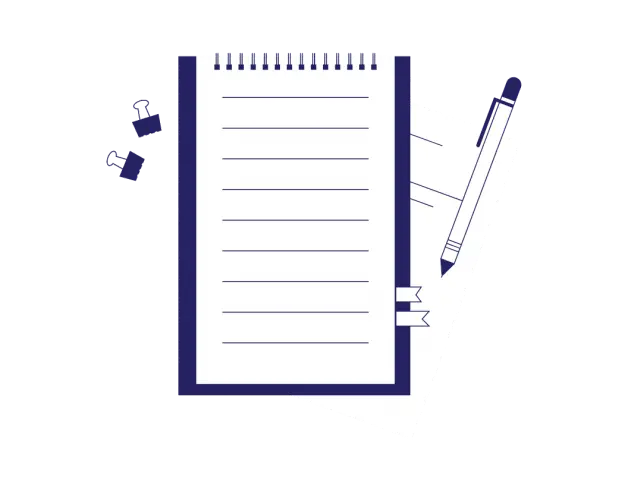
4-minute read
- 5th May 2023
You can find technical writing in lots of places, including in your home, at your job, in many industries, and in businesses of all sizes. If you need help with business writing specifically, check out how we can assist you .
In today’s post, we’ll break down what technical writing is and how to do it effectively. We’ll also provide some handy examples.
What Is Technical Writing?
Technical writing doesn’t always look very technical! It can be anything that describes how to do a task or how to operate a machine or system. Or it can cover a specialized topic. Technical writing includes recipes in your favorite cookbook, board game instructions, operator manuals, health and safety regulations, legal documents, and financial reports.
Instructions for Carrying Out a Task
This type of technical writing can be a recipe for a cake, the instructions for a board game, tips on how to walk your dog to heel, or the script for a social media video on how to cut your own hair.
Operating Manuals for Machinery, Appliances, or Systems
Technical writing can also be the user guide for a dishwasher, for a factory machine that makes cardboard boxes, a “how to” guide for spreadsheets, or instructions for changing the oil in your motorcycle.
Specialized Topics
The list here could be very, very long! Technical writing on specialized topics includes a company’s business reports, a medical consultant’s letter to a patient, health and safety regulations, employment policies, and legal documents.
So How Do I Produce a Great Piece of Technical Writing?
Let’s take it in three stages: Who? What? How?
Who Is It For?
In any type of writing, knowing your audience is important. This is particularly true of technical writing. Here are some examples of who might read technical writing:
· A renter of an apartment that needs details on their lease
· An electrical engineer who needs to know how the wiring is laid out in the apartment block
· The janitor of that same building who needs to know the location of the emergency lights
· The occupant of apartment 61, who needs to know how to use the oven in their kitchen
They all need information presented to them, but what information do they need?
What Do They Need?
The renter needs a legal document that leaves no room for doubt about their legal rights and obligations and those of their landlord. The document will be very detailed, containing terms that need careful explanation.
The electrical engineer needs accurate, clear information about the wiring, as they could get hurt or cause harm to someone else if the diagram is inaccurate.
The janitor needs clear directions and a map of where the emergency lights are.
The occupant of apartment 61 needs instructions that are written in plain English so they can use their oven safely.
How Should Technical Writing Be Composed?
Follow these steps when writing a technical document:
· Research and know your subject thoroughly.
Find this useful?
Subscribe to our newsletter and get writing tips from our editors straight to your inbox.
· Decide on the appropriate writing style. Just because it’s technical, doesn’t mean it has to contain lots of jargon . Be concise, be direct, and be straightforward.
· Consider whether you need to include diagrams, maps, images, charts, and/or tables.
· If writing instructions, take it one step at a time, write objectively , and make sure the instructions work!
Examples of Technical Writing
Let’s look at some examples:
The first version contains unnecessary words, but the warnings are not specific enough. The instructions should be concise and clear. In the second version, the danger is stated right away, and the critical warnings are concise and specific.
In these examples, the first version is unnecessarily wordy. It provides a lot of detail for minor tasks but gives vague instructions for bigger tasks. The second version is much clearer. The instructions are easier to follow, and they include each necessary step.
Good technical writing needs the following attributes:
1. Relevance
2. Accuracy
4. Accessibility
5. Simplicity
Really good technical writing will include these attributes every time.
Is technical writing difficult?
Technical writing does not have to be difficult if you follow our guide and do your research beforehand.
Are there professional bodies for technical writers?
There are several professional organizations for technical writing. This list from UTA Libraries is very useful.
What can I do if I’m not sure that my technical writing style is appropriate to my subject?
We have experts in many fields who can check your writing and advise on style .
Share this article:
Post A New Comment
Got content that needs a quick turnaround? Let us polish your work. Explore our editorial business services.
6-minute read
How to Write a Nonprofit Grant Proposal
If you’re seeking funding to support your charitable endeavors as a nonprofit organization, you’ll need...
9-minute read
How to Use Infographics to Boost Your Presentation
Is your content getting noticed? Capturing and maintaining an audience’s attention is a challenge when...
8-minute read
Why Interactive PDFs Are Better for Engagement
Are you looking to enhance engagement and captivate your audience through your professional documents? Interactive...
7-minute read
Seven Key Strategies for Voice Search Optimization
Voice search optimization is rapidly shaping the digital landscape, requiring content professionals to adapt their...
Five Creative Ways to Showcase Your Digital Portfolio
Are you a creative freelancer looking to make a lasting impression on potential clients or...
How to Ace Slack Messaging for Contractors and Freelancers
Effective professional communication is an important skill for contractors and freelancers navigating remote work environments....

Make sure your writing is the best it can be with our expert English proofreading and editing.

How to Write a Technical Essay

How to Write a Dissertation Summary
Unlike a personal or an expository essay, technical essays are intended to educate and inform about a technical topic. They tend to have a more regimented format than other types of essays. They naturally include an introduction, a body and a conclusion, but they also include elements that make them more like research documentation, including references and an abstract. Thus, writing one requires a sense of organization and credibility.
Essay Purpose
The technical essay is intended to explore a technical or scientific subject, to explain how to carry out a particular technical task, or to argue for a particular method of doing something. Essays could involve subjects in mathematics, computer science, physics or any other topic that could benefit from a written explanation of the processes required to complete a task or the reasons a researcher chose a particular method.
Essay Format
In general, these types of essays follow a similar format as research or other academic papers. If you're writing the technical essay for a specific journal or a college course, check whether there are any specific requirements for formatting your essay. You may be required to use a specific font in a specific size, for example, or justify the paragraphs to the left-hand side of the page without paragraph indentations. In addition, you may have specific requirements for how to format the section titles and reference materials or works cited. Research papers often employ the American Psychological Association, or APA, citation style. In an academic setting, not getting these elements perfect could cause you to lose points; in a business setting, poor formatting could make you look like an amateur.
Essay Structure
A technical essay typically presents a question, details the methods explored to answer the question, and then presents a conclusion. Like with academic research papers, start off with a compelling title that describes the question you seek to answer or the methods you're going to describe, then begin with a section titled "Abstract" that details your question or method, your process of inquiry and your conclusion, all in a brief paragraph of a few sentences. Following that, create headings such as "Introduction" -- sometimes also called a "Thesis" -- and then "Methodology" and "Conclusion." Create this structure first, and then make a few notes about what you plan to include in each section. Creating this structure first can help you start to organize your thoughts and make the task of filling in the details less overwhelming.
Filling in the Sections
In the "Introduction" section, describe why you decided to explore this particular topic and why it might matter to the readers; the Writing Center at Harvard University also suggests to provide the background historical context that precipitated your inquiry. Follow this up with a description of what you're going to explore in the subsequent paragraphs, then dive into the details of your exploration in the "Methodology" section. If you carried out several experiments or explored several questions in your research, you might need to break this section down further and create subheads that describe your practices. Throughout the section, stick to tight, declarative sentences that describe the methodology as clearly and simply as possible. If you're explaining a complicated process, use bullet points to visually break up each step and make it easier for the reader to digest. In the "Conclusion" section, briefly review your question and methodology again, and describe what result you've come to through this process. At the very end, include your references.
Related Articles

How to Do an In-Depth Analysis Essay

How to Write APA Papers in Narrative Style

How to Use Concept Mapping for Writing

How to Make a Rough Draft on Science Projects

How to Write Research Papers From Start to Finish

How to Write an Introduction to a Reflective Essay
How to write a rebuttal speech.

How to Write a Discussion for a Science Fair Project
- Carleton University: Academic Essay Writing: Some Guidelines
- Cornell University Library: APA Citation Style
- Harvard College Writing Center: Essay Structure
Nicole Vulcan has been a journalist since 1997, covering parenting and fitness for The Oregonian, careers for CareerAddict, and travel, gardening and fitness for Black Hills Woman and other publications. Vulcan holds a Bachelor of Arts in English and journalism from the University of Minnesota. She's also a lifelong athlete and is pursuing certification as a personal trainer.
The Whatfix Blog | Drive Digital Adoption
- CIO CIO CIO Blog Explore all new CIO, change, and ITSM content on our enterprise digitalization blog hub. Explore by Category Business Processes Change Management Digital Adoption Digital Transformation ERP Healthcare Transformation ITSM Insurance Transformation Procurement
- Employee Experience Employee Experience EX Blog Explore all new employee experience related content on our EX blog hub. Explore by category Employee Onboarding Employee Training HCM HR & People Ops Instructional Design Learning Technology Performance Support Skill Development CRM Sales Ops
- CX & Product Product CX & Product Ops Blog Explore all new CX and product-related content on our CX and product manager hub. Explore by category Product Ops Support Technical Documentation User Feedback User Onboarding
- Resources Customer Experience What Is a Digital Adoption Platform? Learn how DAPs enable technology users in our ultimate guide. Resources Case Studies eBooks Podcasts White Papers
- Explore Whatfix What Is Whatfix? Whatfix DAP Create contextual in-app guidance in the flow of work with Whatfix DAP. Mirror Easily create simulated application experiences for hands-on IT training with Whatfix Mirror. Product Analytics Analyze how users engage with desktop and web apps with no-code event tracking. Resources About Us Pricing Userization Whatfix AI
- Back to Blog
- Technical Documentation
11 Technical Writing Examples & Samples in 2024
- Published: October 21, 2021
- Updated: January 23, 2024

For any organization, there is a need for technical writers to provide easy-to-understand technical documentation to help explain complex processes for its products end-users, customers, and internal workforce.
Many organizations are a renewed focus on developing the technical writing skills of their writers and product managers. According to the U.S. Department of Labour Statistics, employment for technical content writing is expected to grow at a 12% faster rate between 2020-2030 in comparison to the overall average of other writing occupations.
With different industries having various technical writing needs (ie. in format types, tone, complexity, etc.), analyzing industry-leading technical writing examples from other companies can provide a roadmap and inspiration for new technical writers.
What Are Common Examples of Technical Writing?
- User Manuals
- Software Installation Guides
- Standard Operating Procedures (SOP)
- API Documentation
- Service Level Agreements (SLA)
- Press Release
- Case Studies & White Papers
- Company Documents
- Requests for Proposals
- Annual Reports
- Business Plans
What Is Technical Writing?
Technical writing is a niche, user-centric form of writing used to disseminate information on technical or specialized topics, such as software applications, environmental regulations, or medical procedures. This writing style simplifies complex information and processes, allowing readers to use that information for an intended purpose – such as using technology, executing a project, onboarding a user, exemplifying a complex process, or informing a large audience.
Types of Technical Writing
Technical writing majorly falls into fourr categories:
1. End-User Technical Writing
End-user documentation aims to empower the user of a product by helping them understand the core functionality of a product and how to solve common troubleshooting issues. This form of writing is observed in types of technical documentation such as user manuals, legal disclaimers, employee handbooks, and website help centers.
2. Expert-to-Expert Technical Writing
A niche style of technical writing, this documentation includes types such as research summaries, legal documents, and white papers. These technical writing examples are written by experts, for experts, to help them dive deeper into a complex, industry-specific topic.
3. Process Documentation Writing
Process documentation is a form of technical writing that is designed for internal use by organizations to share knowledge on how to complete a task, with an emphasis on creating consistent, company-wide procedures. Examples of this type of technical writing include step-by-step process guides, internal wikis, KPI and goal reporting, OKRs, and HR policies.
4. Technical Marketing Communications
Most technical marketing communications fall under the B2B (business to business) writing umbrella. A technical writer needs to communicate their expertise in user-friendly language to help drive brand awareness and help prospective customers understand the product’s core benefits. Examples of companies using technical marketing writing include competitive analysis documents, in-depth case studies, marketing landing pages , informative articles, and business emails to promote or sell their services and products.
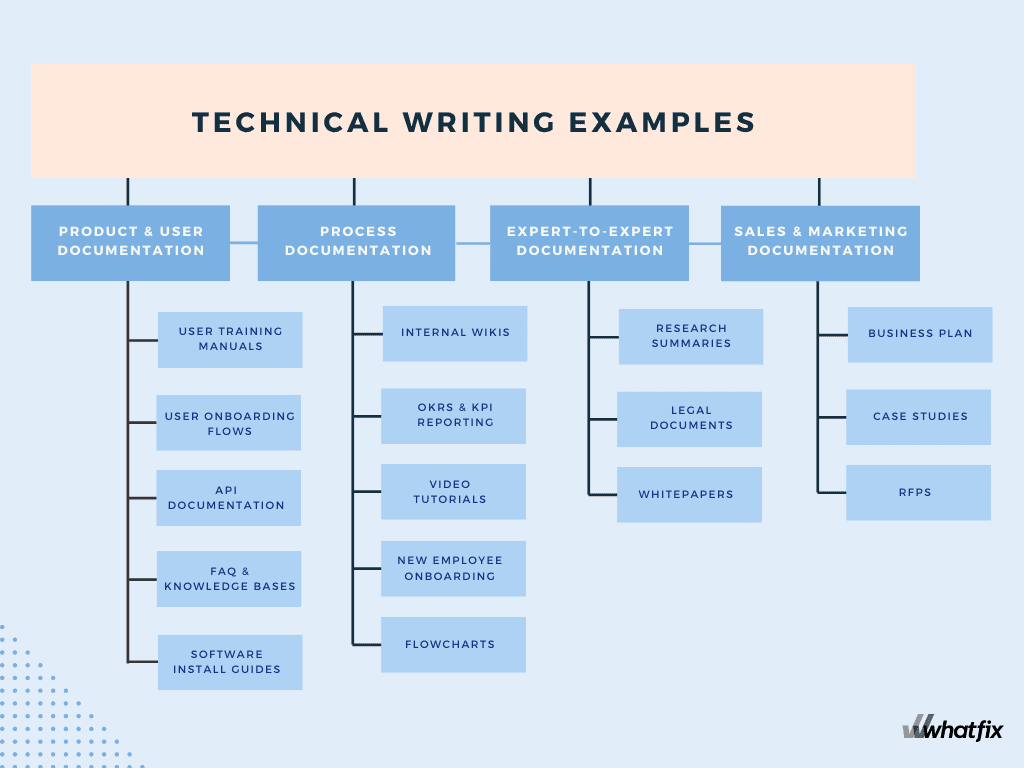
What’s the Difference Between Business Writing & Technical Writing?
Technical writing is often confused with business writing. Although both writing styles share similarities, writers can’t use them interchangeably. Both writing styles adhere to formal, specific, and concise language to convey the intent. There is an additional use of bulleted and numbered lists for an easier-to-read content structure.
Technical writing maintains a neutral, competent tone throughout its documentation, as the sole purpose of technical writing is to clearly explain complex topics to a non-technical reader. However, in business writing, the tone varies depending on the target reader. For example, a proposal requires persuasive language to highlight the factual aspects of a bid, while an external email to a new client requires a professional, yet warm tone.
PRO TIP : To decide the writing style, answer a simple question. Is my writing intended to communicate the desired purpose or an instruction?

11 Examples of Technical Writing in 2024
Here are 11 examples of common technical writing documents – with real-world samples for you to use as inspiration for your business’s technical writing needs.
1. User Manuals
User guides are instruction training manuals written for novice end-users to help them with products ranging from consumer products such as electronics or appliances to B2B SaaS tools and solutions. These manuals are user-friendly and well-illustrated to highlight common issues and features.
Additionally, technical writers must collaborate with engineers, programmers, and product designers to cover all the bases.
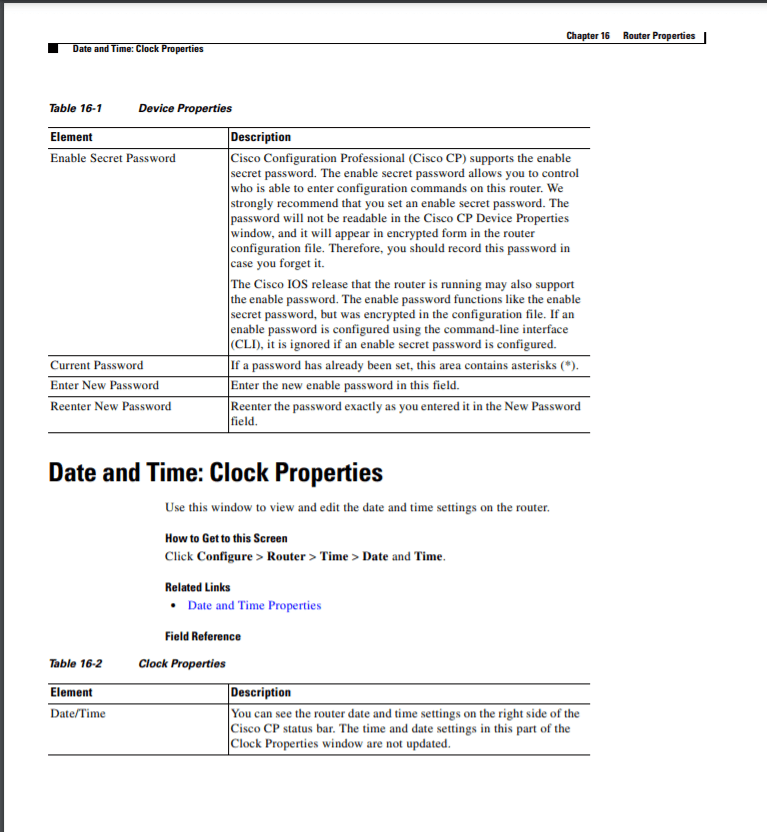
2. Software Installation Guides
Computer software must be equipped with software documentation , such as installation guides, to assist users through the software implementation and installation process.
A well-written installation guide must include detailed workflows, video tutorials, FAQs, and a troubleshooting guide. Often the programmers automate the process, and the technical writer authors alert boxes and the ReadMe file.
Software installation guides can be easily created, published, and maintained with software documentation tools .
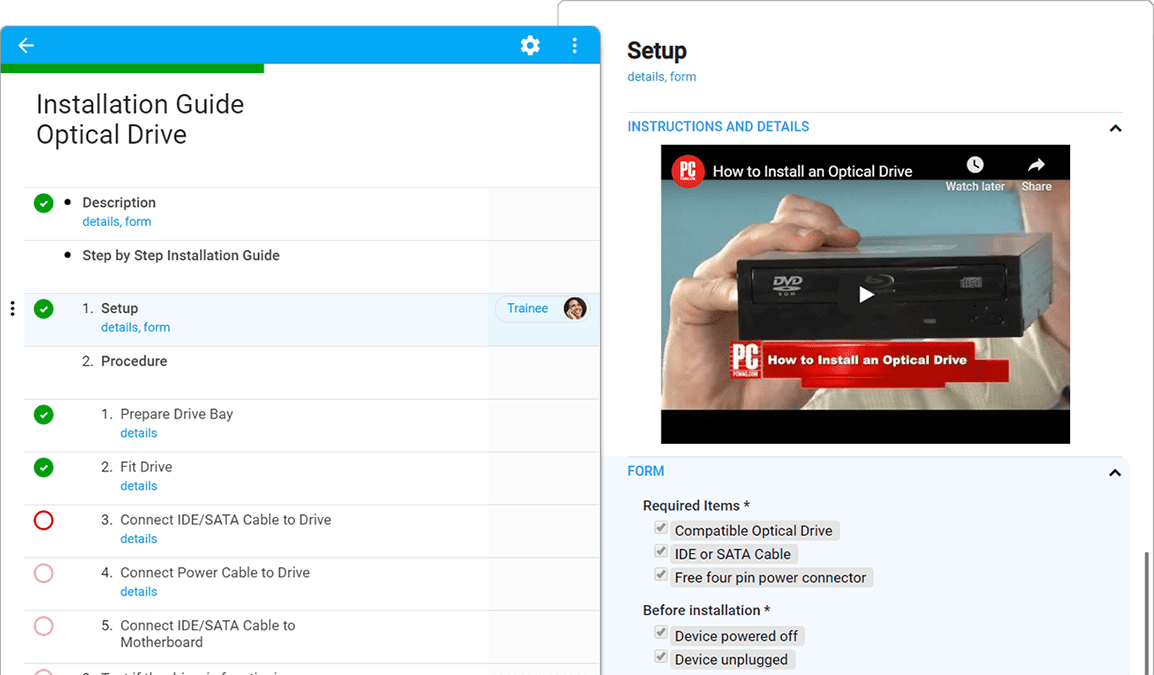
3. Standard Operating Procedures (SOP)
Standard operating procedures (SOPs) are holistic processes to help employees work in unison and accomplish various tasks in an organization. SOPs are a form of process documentation that ensures smoother internal operations and workflows by making business processes more efficient and economical. Examples of an SOP document include anything from payroll processing to manufacturing guidelines.
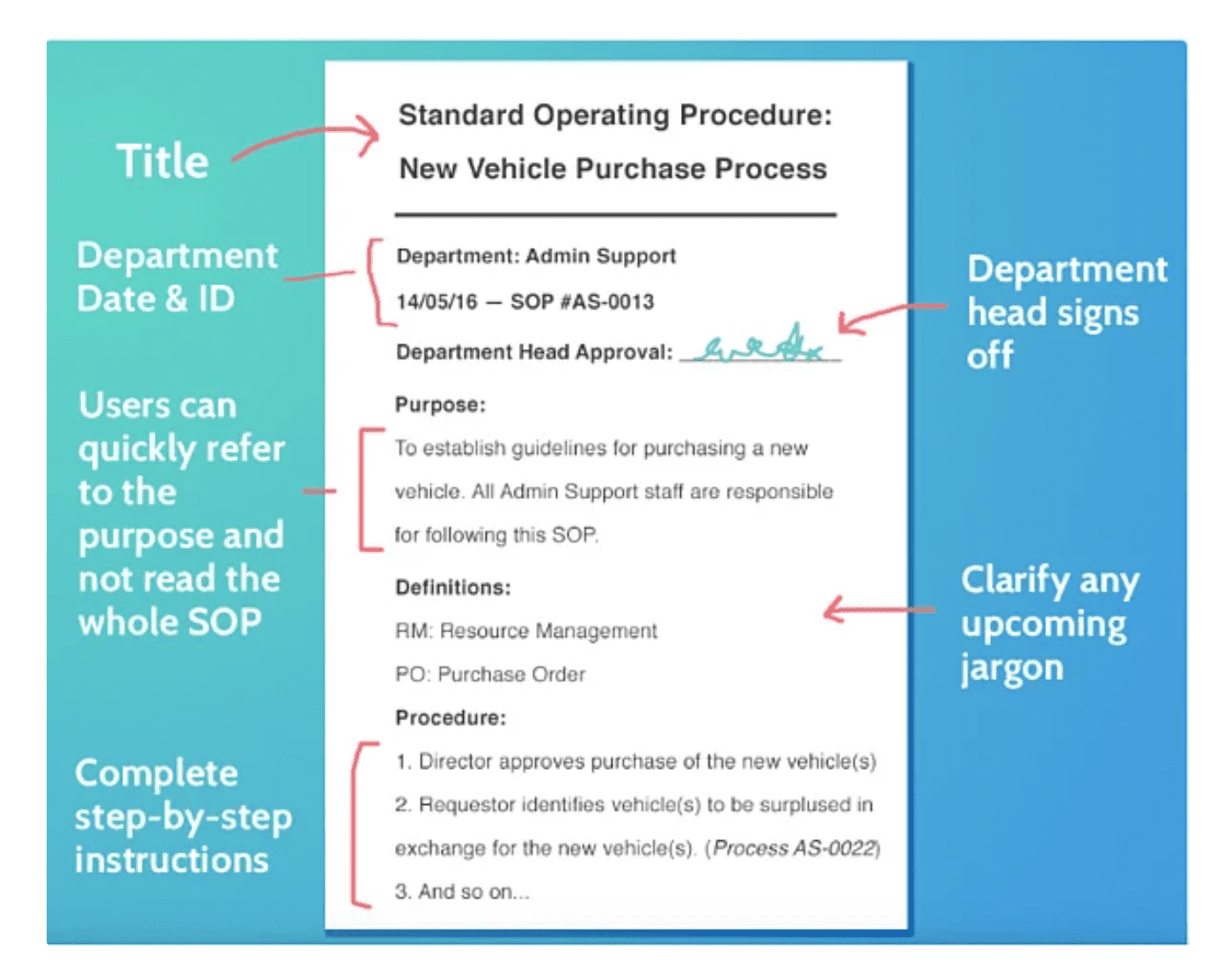
4. API Documentation
API documentation helps your customers’ developers interact easily with a product’s code to implement an API effectively. It contains instructions and tutorials to simplify integration with other APIs such as web-API, software API, and SCPIs.
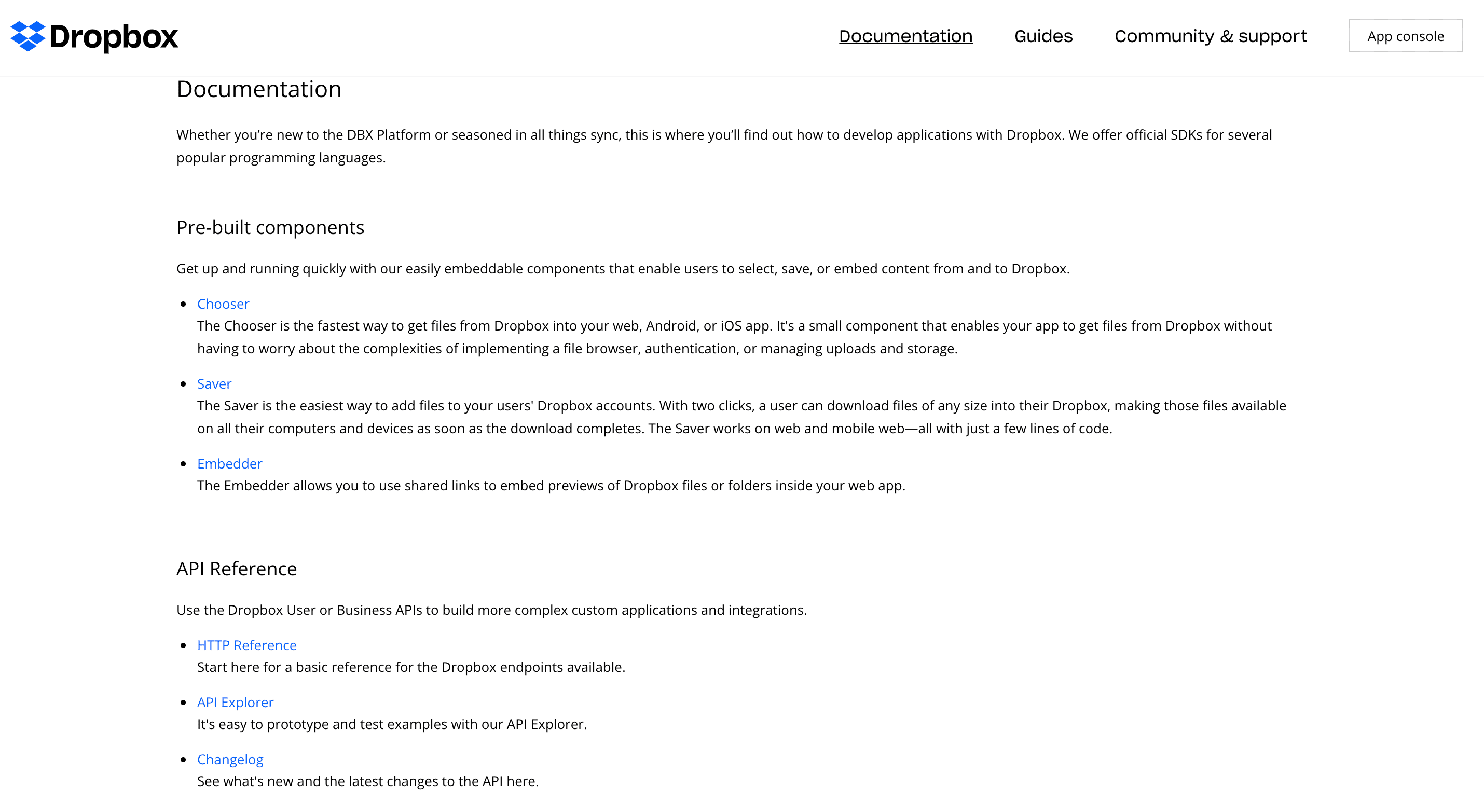
5. Service Level Agreements (SLA)
An SLA is a legally binding contract between a provider and a customer that outlines services, guarantees, warranties, and other mutually negotiated items between the two parties.
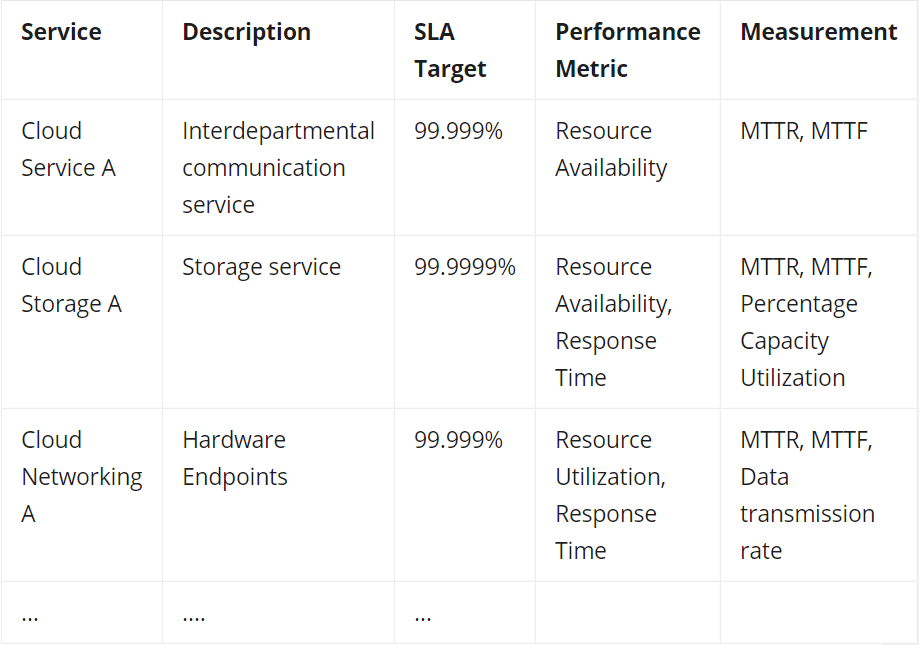
Source: BMC
6. Press Releases
Press releases are formal and factual documents issued by an organization to make business-related announcements.
They are short and factual documents that highlight how the announcement impacts users and external stakeholders of the organization. This technical document has a specific format and includes a headline, overview of the information, company’s contact information, and direct quotes from internal stakeholders like the CEO.
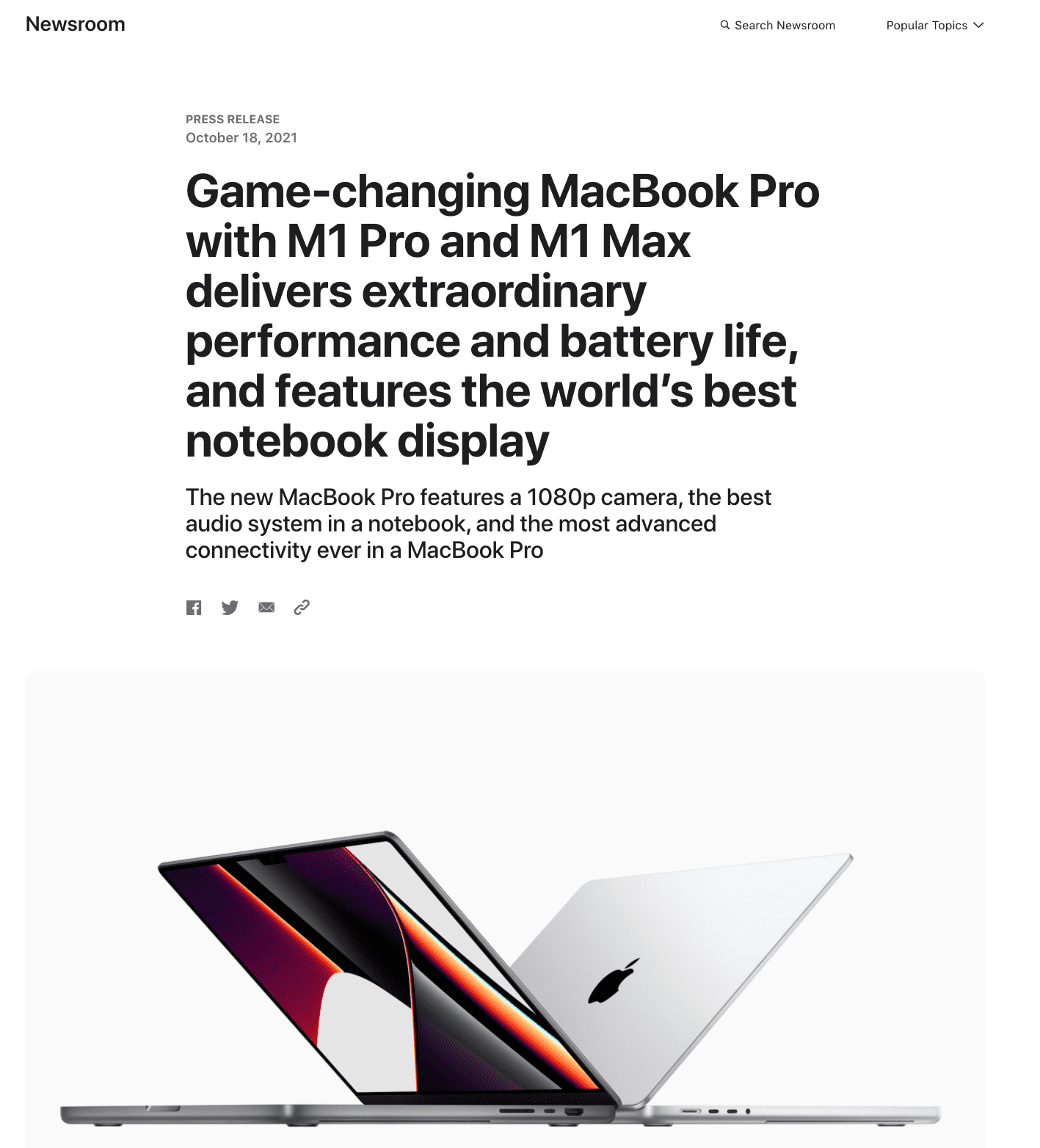
Source: Apple
7. Case Studies & Whitepapers
Case studies & whitepapers are industry-specific documents that provide real-world examples testifying to an organization’s expertise and value, and are used for lead generation purposes.
Case studies are instance-specific documents written in passive voice and offer key takeaways, often using data to highlight its benefits. In comparison, whitepapers address a specific challenge and are written in an active voice. Technical writers authoring such documents should possess in-depth knowledge about the industry for effective writing.
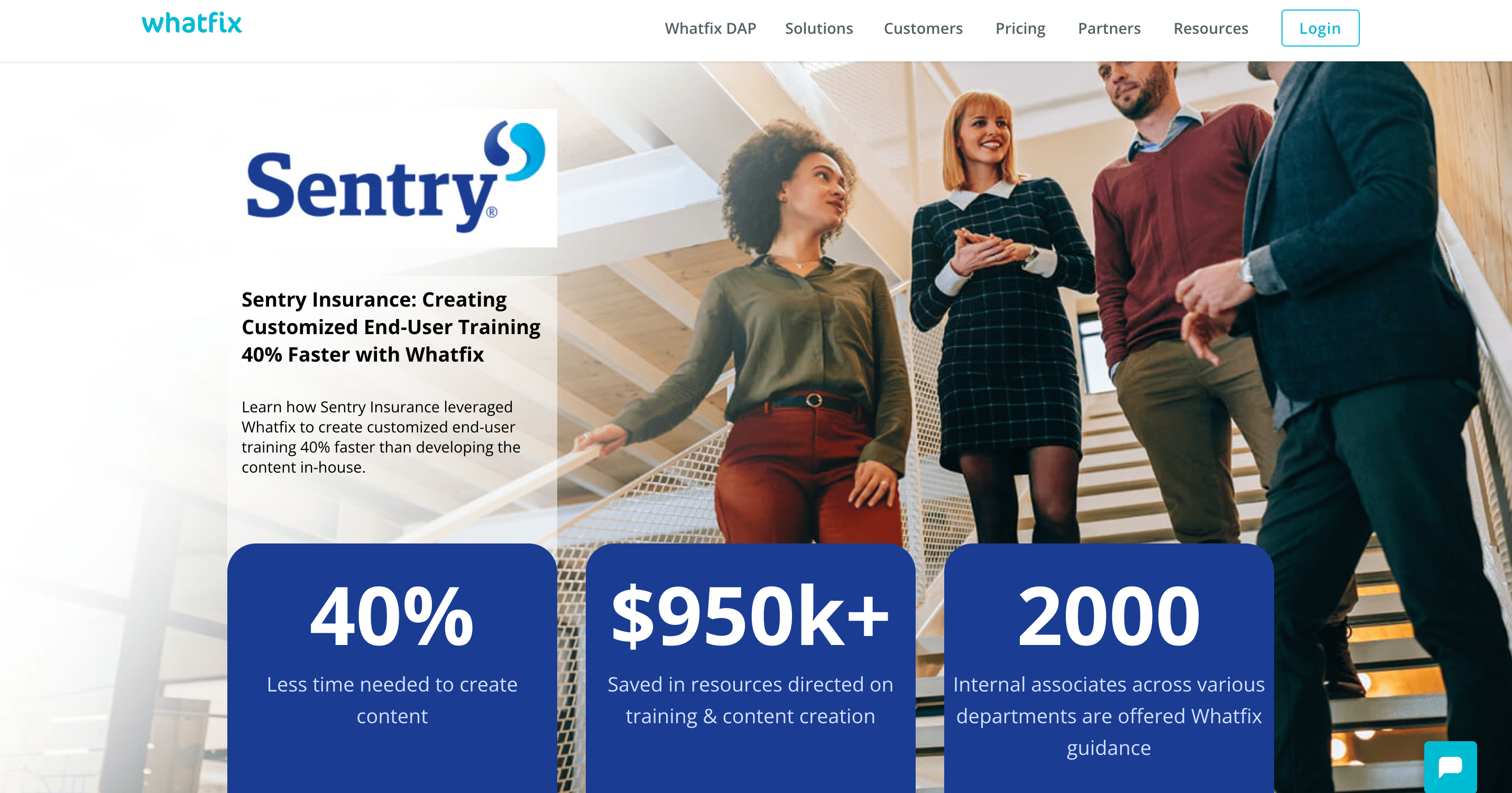
Source: Whatfix
8. Company Documents
Company HR documents such as employee handbooks and orientation manuals require a perfect combination of technical writing skills and organizational knowledge. These documents are of immense help during the initial phases of employee onboarding and provide continuous support for ongoing employee development and general assistance.

9. Request for Proposal (RFP)
An RFP is a business document that announces a project and solicits bids from multiple qualifying contractors. The writing style of this document is persuasive, and a poorly-written RFP document can ensure whether or not the deal will be successful. A well-written RFP must clearly highlight the project goals, challenges, scope of work, and evaluation metrics.
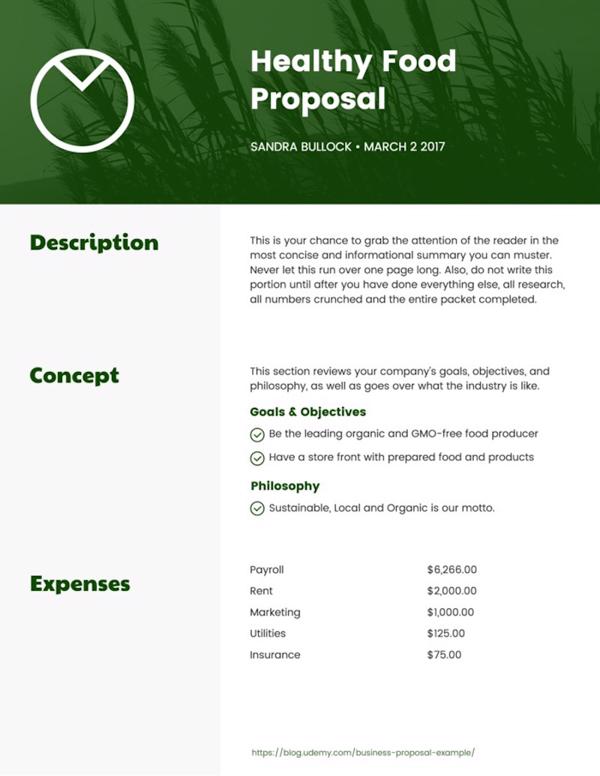
Source: Venngage
10. Annual Reports
Annual reports are exhaustive documents that indicate a company’s financial health and yearly performance. These reports are of prime importance to the organizations seeking investors’ trust and include stock performance, financial information, new product information, and strategic developments.
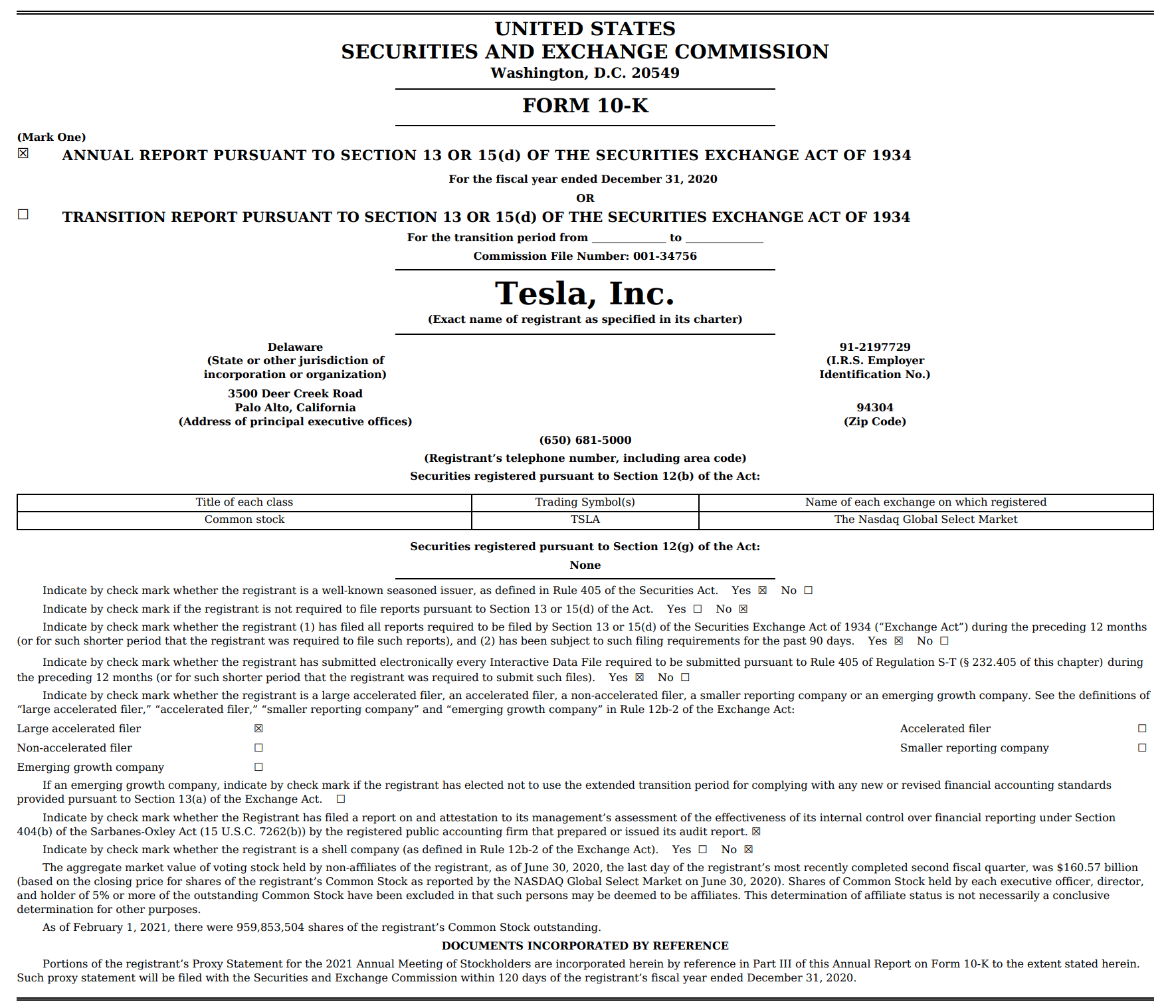
Source: Tesla
11. Business Plans
Every organization starts with a detailed business plan to secure funding and requires an update during expansion phases. A business plan must include the following sections:
- Executive Summary: This section provides an overview of the business plan, target market, and purpose.
- Product Description: The product or service description includes a brief about the offering, its USP, and the development stage.
- SWOT Analysis: A complete analysis of strengths, weaknesses, opportunities, and threats for the business.
- Market Research: This section includes a detailed analysis of all the competitors and product potential in the target market.
- Organizational System: Before the initial start-up, it is crucial to clarify the organizational hierarchy and team members to support the business.
- Schedule: This section highlights the implementation schedule and includes start date, hiring, and investment milestones.
- Financial Planning: This is the most critical section and highlights the viability of the business plan. It includes income statements, projected revenues, balance sheets, and liquidity measures.
- Appendix: The appendix consists of any other additional and relevant information such as patents.
Create contextual user onboarding flows, drive adoption of new features, and make in-app announcements with Whatfix
Whatfix is a no-code digital adoption platform that enables product managers to create contextual in-app guidance, product-led user onboarding, and self-help user support – all without engineering dependencies. With Whatfix, create branded product tours, user onboarding checklists, interactive walkthroughs, pop-ups, smart tips, and more – all enabling customers and users with contextual guidance at the moment need. With Whatfix, analyze, build, and deliver better user experiences.
Technical writing is an analytical form of writing where attention to detail is paramount. Unlike creative writing, technical writing doesn’t need to invoke the reader’s emotions – but instead, its goal is to convey complex information in an easy-to-read, digestible form.
Technical writing doesn’t negate creativity. It’s a subtle form of writing which needs to be highly user-centric and understandable.
Technical writing tools such as Whatfix help you author impactful technical documents in a way that encourages interaction and retention. With Whatfix, technical writers create on-screen guides, pop-up prompts, tooltips, chatbots, in-app knowledge bases, and more to inform users how to use your product. A technical writer’s goal should be to create documents that promote your product effectively and to make those documents easy and fun to read.
Learn how Whatfix can help create the interactive product and process walkthroughs you need now!

RELATED TOPICS
- Technical Writing Overview
- Types of Technical Writing
- Technical Writing Examples
- Freelance Technical Writing
- Technical Writer Style Guide Examples
- Technical Writing Jobs
- Subject Matter Expert
- Document Development Lifecycle
- Darwin Information Typing Architecture
- Technical Writer Career Path
- How to Become a Technical Writer
- Technical Writer Education Requirements
- English Teacher to Technical Writer
- Software Engineer to Technical Writer
- Technical Writer Salary
- Technical Writer Interview Questions
- Google Technical Writer Interview Questions
- Technical Writer Resume
- Technical Writer Cover Letter
- Technical Writer LinkedIn Profile
- Technical Writer Portfolio
- Senior Technical Writer Salary
- Senior Technical Writer Job Description
- Content Strategist
- How to Become a Content Strategist
- Content Strategist Skills
- Content Strategist Interview Questions
- Content Strategy Manager Overview
- Content Strategy in UX
- Content Strategist Portfolio Examples
- Content Design Overview
- Content Designer
- Content Designer Skills
- Content Design Books
- Technical Documentation
- Knowledge Base Documentation
- Product Documentation
- User Documentation
- Process Documentation
- Process Documentation Templates
- Good Documentation Practices
- HR Document Management Best Practices
- Software Documentation Examples
- How to Test Documentation Usability
- Document Control Overview
- Document Control Process
- Document Control Procedures
- Document Control Numbering
- Document Version Control
- Document Lifecycle Management
- Document Management Software Workflow
- Document Management Practices
- Github Document Management
- HR Document Management
- Confluence Document Management
- What is a Document Management System?
- Document Control Software
- Product Documentation Software
- HR Document Management Software
- Knowledge Base Software
- Internal Knowledge Base Software
- API Documentation Software Tools
- Knowledge Management Tools
- Document Management Software
- What is Software Documentation?
- How to Write Software Documentation
- How to Write API Documentation
- Document Manager
- Documentation Manager
- Documentation Specialist
- Document Control Manager Salary
- Business Writing Overview
- Business Writing Principles
- Best Business Writing Examples
- Best Business Writing Skills
- Best Business Writing Tips
- Types of Business Writing
- Best Business Writing Books
- What is Grant Writing?
- Grant Writing Process
- Grant Writing Templates
- Grant Writing Examples
- Grant Proposal Budget Template
- How to Write a Grant Proposal
- How to Write a Grant Proposal Cover Letter
- Grant Writing Books
- Grant Writer Role
- How to Become a Grant Writer
- Grant Writer Salary
- Grant Writer Resume
- Grant Writing Skills
- Grant Writer LinkedIn Profile
- Grant Writer Interview Questions
- Proposal Writing Overview
- How to Become a Proposal Writer
- Proposal Writer Role
- Proposal Writer Career Path
- RFP Proposal Writer
- Freelance Proposal Writer
- Remote Proposal Writer
- Government Proposal Writer
- Proposal Writer Salary
- Proposal Writer Job Description Example
- Proposal Writer Interview Questions
- How to Write a Proposal
- Proposal Writer LinkedIn Profile
- Business Proposal Examples
- UX Writing Overview
- Information Architecture
- Information Architecture vs Sitemap
- UX Writing Books
- UX Writing Examples
- UX Writer Overview
- Freelance UX Writer Overview
- UX Writer Career Path
- How to Become a UX Writer
- Google UX Writer
- UX Writer Interview Questions
- Google UX Writer Interview Questions
- UX Writer vs Copywriter
- UX Writer vs Technical Writer
- UX Writer Skills
- UX Writer Salary
- UX Writer Portfolio Examples
- UX Writer LinkedIn Profile
- UX Writer Cover Letter
- Knowledge Management Overview
- Knowledge Management System
- Knowledge Base Examples
- Knowledge Manager Overview
- Knowledge Manager Resume
- Knowledge Manager Skills
- Knowledge Manager Job Description
- Knowledge Manager Salary
- Knowledge Manager LinkedIn Profile
- Medical Writing Overview
- How to Become a Medical Writer
- Entry-Level Medical Writer
- Freelance Medical Writer
- Medical Writer Resume
- Medical Writer Interview Questions
- Medical Writer Salary
- Senior Medical Writer Salary
- Technical Writer Intern Do
- Entry-level Technical Writer
- Technical Writer
- Senior Technical Writer
- Technical Writer Editor
- Remote Technical Writer
- Freelance Technical Writer
- Software Technical Writer
- Pharmaceutical Technical Writer
- Google Technical Writer
- LinkedIn Technical Writer
- Apple Technical Writer
- Oracle Technical Writer
- Salesforce Technical Writer
- Amazon Technical Writer
- Technical Writing Certification Courses
- Certified Technical Writer
- UX Writer Certification
- Grant Writer Certification
- Proposal Writer Certification
- Business Writing Classes Online
- Business Writing Courses
- Grant Writing Classes Online
- Grant Writing Degree
Home › Writing › What is Technical Writing? › 8 Technical Writing Examples to Inspire You
8 Technical Writing Examples to Inspire You
Become a Certified Technical Writer
TABLE OF CONTENTS
As a technical writer, you may end up being confused about your job description because each industry and organization can have varying duties for you. At times, they may ask for something you’ve never written before. In that case, you can consider checking out some technical writing examples to get you started.
If you’re beginning your technical writing career, it’s advisable to go over several technical writing examples to make sure you get the hang of it. You don’t necessarily have to take a gander over at industry-specific examples; you can get the general idea in any case.
This article will go over what technical writing is and some of the common technical writing examples to get you started. If you’re looking to see some examples via video, watch below. Otherwise, skip ahead.
If you’re looking to learn via video, watch below. Otherwise, skip ahead.

Let’s start by covering what technical writing is .
What Exactly is Technical Writing?
Technical writing is all about easily digestible content regarding a specialized product or service for the public. Technical writers have to translate complex technical information into useful and easy-to-understand language.
There are many examples of technical writing, such as preparing instruction manuals and writing complete guides. In some cases, technical writing includes preparing research journals, writing support documents, and other technical documentation.
The idea is to help the final user understand any technical aspects of the product or service.
In other cases, technical writing means that the writer needs to know something. For example, pharmaceutical companies may hire medical writers to write their content since they have the required knowledge.
If you’re interested in learning more about these technical writing skills, then check out our Technical Writing Certification Course.
8 Technical Writing Examples to Get You Started
As a technical writer, you may have to learn new things continually, increase your knowledge, and work with new forms of content. While you may not have experience with all forms of technical writing, it’s crucial to understand how to do it.
If you learn all the intricacies of technical writing and technical documents, you can practically work with any form of content, given that you know the format.
Therefore, the following examples of technical writing should be sufficient for you to get an idea. The different types of technical writing have unique characteristics that you can easily learn and master effectively.
1. User Manuals
User manuals or instruction manuals come with various products, such as consumer electronics like televisions, consoles, cellphones, kitchen appliances, and more. The user manual serves as a complete guide on how to use the product, maintain it, clean it, and more. All technical manuals, including user manuals, have to be highly user-friendly. The technical writer has to write a manual to even someone with zero experience can use the product. Therefore, the target audience of user manuals is complete novices, amateurs, and people using the product/s for the first time.
Traditionally, user manuals have had text and diagrams to help users understand. However, user manuals have photographs, numbered diagrams, disclaimers, flow charts, sequenced instructions, warranty information, troubleshooting guides, and contact information in recent times.
Technical writers have to work with engineers, programmers, and product designers to ensure they don’t miss anything. The writer also anticipates potential issues ordinary users may have by first using the product. That helps them develop a first-hand experience and, ultimately, develop better user manuals.
The point of the user manual isn’t to predict every possible issue or problem. Most issues are unpredictable and are better handled by the customer support or help desk. User manuals are there to address direct and common issues at most.
You can check out some user manual examples and templates here . You can download them in PDF and edit them to develop an idea about how you can write a custom user manual for your product.
2. Standard Operating Procedures (SOP)
Standard operating procedures are complete processes for each organization’s various tasks to ensure smoother operations. SOPs help make each process more efficient, time-saving, and less costly.
An SOP document can include:
- Everything from the method of processing payroll.
- Hiring employees.
- Calculating vacation time to manufacturing guidelines.
In any case, SOPs ensure that each person in an organization works in unison and uniformly to maintain quality.
SOPs help eliminate irregularities, favoritism, and other human errors if used correctly. Lastly, SOPs make sure employees can take the responsibilities of an absent employee, so there’s no lag in work.
Therefore, developing SOPs requires a complete study of how an organization works and its processes.
Here are some examples of standard operating procedures you can study. You can edit the samples directly or develop your own while taking inspiration from them.
3. Case Studies & White Papers
Case studies and white papers are a way of demonstrating one’s expertise in an area. Case studies delve into a specific instance or project and have takeaways proving or disproving something. White papers delve into addressing any industry-specific challenge, issue, or problem.
Both case studies and white papers are used to get more business and leads by organizations.
Technical writers who write white papers and case studies need to be experts in the industry and the project itself. It’s best if the technical writer has prior experience in writing such white papers.
The writing style of white papers and case studies is unique, along with the formatting. Both documents are written for a specific target audience and require technical writing skills. Case studies are written in a passive voice, while white papers are written in an active voice. In any case, it’s crucial to maintain a certain level of knowledge to be able to pull it off.
You can check out multiple white paper examples here , along with various templates and guides. You can check out some examples here for case studies, along with complete templates.
4. API Documentation
API documentation includes instructions on effectively using and integrating with any API, such as web-API, software API, and SCPIs. API documentation contains details about classes, functions, arguments, and other information required to work with the API. It also includes examples and tutorials to help make integration easier.
In any case, API documentation helps clients understand how it works and how they can effectively implement API. In short, it helps businesses and people interact with the code more easily.
You can find a great example of proper API documentation in how Dropbox’s API documentation works. You can learn more about it here .
5. Press Releases
Press releases are formal documents issued by an organization or agency to share news or to make an announcement. The idea is to set a precedent for releasing any key piece of information in a follow-up press conference, news release, or on a social media channel.
The press release emphasizes why the information is important to the general public and customers. It’s a fact-based document and includes multiple direct quotes from major company stakeholders, such as the CEO.
Usually, press releases have a very specific writing process. Depending on the feasibility, they may have an executive summary or follow the universal press release format.
You can find several examples of press releases from major companies like Microsoft and Nestle here , along with some writing tips.
6. Company Documents
Company documents can include various internal documents and orientation manuals for new employees. These documents can contain different information depending on their use.
For example, orientation manuals include:
- The company’s history.
- Organizational chart.
- List of services and products.
- Map of the facility.
- Dress codes.
It may also include employee rights, responsibilities, operation hours, rules, regulations, disciplinary processes, job descriptions, internal policies, safety procedures, educational opportunities, common forms, and more.
Writing company documents requires good technical writing skills and organizational knowledge. Such help files assist new employees in settling into the company and integrating more efficiently.
Here are some great examples of orientation manuals you can check out.
7. Annual Reports
Annual reports are yearly updates on a company’s performance and other financial information. Annual reports directly correspond with company stakeholders and serve as a transparency tool.
The annual reports can also be technical reports in some cases. However, mostly they include stock performance, financial information, new product information, and key developments.
Technical writers who develop annual reports must compile all the necessary information and present it in an attractive form. It’s crucial to use creative writing and excellent communication skills to ensure that the maximum amount of information appears clearly and completely.
If the company is technical, such as a robotics company, the technical writer needs to develop a technical communication method that’s easy to digest.
You can check out some annual report examples and templates here .
8. Business Plans
Every company starts with a complete business plan to develop a vision and secure funding. If a company is launching a new branch, it still needs to start with a business plan.
In any case, the business plan has a few predetermined sections. To develop the ideal business plan, include the following sections in it.
- Executive Summary – includes the business concept, product, or service, along with the target market. It may also include information on key personnel, legal entity, founding date, location, and brief financial information.
- Product or Service Description – includes what the offering is, what value it provides, and what stage of development it is in currently.
- Team Members – includes all the information on the management team.
- Competitor and Market Analysis – includes a detailed analysis of the target market and potential competitors.
- Organizational System – includes information on how the organizational structure would work.
- Schedules – include start dates, hiring dates, planning dates, and milestones.
- Risks and Opportunities – include profit and loss predictions and projections.
- Financial Planning – includes planned income statements, liquidity measures, projected balance sheet, and more.
- Appendix – includes the organizational chart, resumes, patents, and more.
The technical writer needs to work closely with the company stakeholders to develop a complete business plan.
According to your industry, you can check out hundreds of business plan samples and examples here .
Becoming an Expert Technical Writer
Becoming an expert technical writer is all about focusing on your strengths. For example, you should try to focus on one to two industries or a specific form of technical writing. You can do various writing assignments and check out technical writing samples to understand what you’re good with.
You can also check out user guides and get online help in determining your industry. Once you’ve nailed down an industry and technical writing type, you can start to focus on becoming an expert in it.
In any case, it always helps to check out technical writing examples before starting any project. Try to check out examples of the same industry and from a similar company. Start your writing process once you have a complete idea of what you need to do.
Since technical writing involves dealing with complex information, the writer needs to have a solid base on the topic. That may require past experience, direct technical knowledge, or an ability to understand multiple pieces of information quickly and effectively.
In becoming a technical writer, you may have to work with various other people, such as software developers, software engineers, human resources professionals, product designers, and other subject matter experts.
While most organizations tend to hire writers with a history in their fields, others opt for individuals with great writing skills and team them up with their employees.
Technical writers may also work with customer service experts, product liability specialists, and user experience professionals to improve the end-user experience. In any case, they work closely with people to develop digestible content for the end customers.
Today, you can also find several technical writers online. There is an increasing demand for technical writing because of the insurgence of SaaS companies, e-commerce stores, and more.
In the end, technical writers need to have a strong grasp of proper grammar, terminology, the product, and images, graphics, sounds, or videos to explain documentation.
If you are new to technical writing and are looking to break-in, we recommend taking our Technical Writing Certification Course , where you will learn the fundamentals of being a technical writer, how to dominate technical writer interviews, and how to stand out as a technical writing candidate.
We offer a wide variety of programs and courses built on adaptive curriculum and led by leading industry experts.
- Work on projects in a collaborative setting
- Take advantage of our flexible plans and community
- Get access to experts, templates, and exclusive events
Become a Certified Technical Writer. Professionals finish the training with a full understanding of how to guide technical writer projects using documentation foundations, how to lead writing teams, and more.
Become a Certified UX Writer. You'll learn how to excel on the job with writing microcopy, content design, and creating conversation chatbots.
Become a Certified Grant Writer. In this course, we teach the fundamentals of grant writing, how to create great grant proposals, and how to stand out in the recruiting process to land grant writing jobs.
Please check your email for a confirmation message shortly.
Join 5000+ Technical Writers
Get our #1 industry rated weekly technical writing reads newsletter.
Your syllabus has been sent to your email
Technical Writing for Beginners – An A-Z Guide to Tech Blogging Basics

If you love writing and technology, technical writing could be a suitable career for you. It's also something else you can do if you love tech but don’t really fancy coding all day long.
Technical writing might also be for you if you love learning by teaching others, contributing to open source projects and teaching others how to do so, too, or basically enjoy explaining complex concepts in simple ways through your writing.
Let's dive into the fundamentals and learn about what you should know and consider when getting started with technical writing.
Table of Contents
In this article, we’ll be looking at:
- What Technical writing is
Benefits of Technical Writing
- Necessary skills to have as a Technical Writer
The Technical Writing Process
- Platforms for publishing your articles
Technical Writing Courses
- Technical Writing forums and communities
- Some amazing technical writers to follow
- Final Words and references
What is Technical Writing?
Technical writing is the art of providing detail-oriented instruction to help users understand a specific skill or product.
And a technical writer is someone who writes these instructions, otherwise known as technical documentation or tutorials. This could include user manuals, online support articles, or internal docs for coders/API developers.
A technical writer communicates in a way that presents technical information so that the reader can use that information for an intended purpose.
Technical writers are lifelong learners. Since the job involves communicating complex concepts in simple and straightforward terms, you must be well-versed in the field you're writing about. Or be willing to learn about it.
This is great, because with each new technical document you research and write, you will become an expert on that subject.
Technical writing also gives you a better sense of user empathy. It helps you pay more attention to what the readers or users of a product feel rather than what you think.
You can also make money as a technical writer by contributing to organizations. Here are some organizations that pay you to write for them , like Smashing Magazine , AuthO , Twilio , and Stack Overflow .
In addition to all this, you can contribute to Open Source communities and participate in paid open source programs like Google Season of Docs and Outreachy .
You can also take up technical writing as a full time profession – lots of companies need someone with those skills.
Necessary Skills to Have as a Technical Writer
Understand the use of proper english.
Before you consider writing, it is necessary to have a good grasp of English, its tenses, spellings and basic grammar. Your readers don't want to read an article riddled with incorrect grammar and poor word choices.
Know how to explain things clearly and simply
Knowing how to implement a feature doesn't necessarily mean you can clearly communicate the process to others.
In order to be a good teacher, you have to be empathetic, with the ability to teach or describe terms in ways suitable for your intended audience.
If you can't explain it to a six year old, you don't understand it yourself. Albert Einstein
Possess some writing skills
I believe that writers are made, not born. And you can only learn how to write by actually writing.
You might never know you have it in you to write until you put pen to paper. And there's only one way to know if you have some writing skills, and that's by writing.
So I encourage you to start writing today. You can choose to start with any of the platforms I listed in this section to stretch your writing muscles.
And of course, it is also a huge benefit to have some experience in a technical field.
Analyze and Understand who your Readers are
The biggest factor to consider when you're writing a technical article is your intended/expected audience. It should always be at the forefront of your mind.
A good technical writer writes based on the reader’s context. As an example , let's say you're writing an article targeted at beginners. It is important not to assume that they already know certain concepts.
You can start out your article by outlining any necessary prerequisites. This will make sure that your readers have (or can acquire) the knowledge they need before diving right into your article.
You can also include links to useful resources so your readers can get the information they need with just a click.
In order to know for whom you are writing, you have to gather as much information as possible about who will use the document.
It is important to know if your audience has expertise in the field, if the topic is totally new to them, or if they fall somewhere in between.
Your readers will also have their own expectations and needs. You must determine what the reader is looking for when they begin to read the document and what they'll get out of it.
To understand your reader, ask yourself the following questions before you start writing:
- Who are my readers?
- What do they need?
- Where will they be reading?
- When will they be reading?
- Why will they be reading?
- How will they be reading?
These questions also help you think about your reader's experience while reading your writing, which we'll talk about more now.
Think About User Experience
User experience is just as important in a technical document as it is anywhere on the web.
Now that you know your audience and their needs, keep in mind how the document itself services their needs. It’s so easy to ignore how the reader will actually use the document.
As you write, continuously step back and view the document as if you're the reader. Ask yourself: Is it accessible? How will your readers be using it? When will they be using it? Is it easy to navigate?
The goal is to write a document that is both useful to and useable by your readers.
Plan Your Document
Bearing in mind who your users are, you can then conceptualize and plan out your document.
This process includes a number of steps, which we'll go over now.
Conduct thorough research about the topic
While planning out your document, you have to research the topic you're writing about. There are tons of resources only a Google search away for you to consume and get deeper insights from.
Don't be tempted to lift off other people's works or articles and pass it off as your own, as this is plagiarism. Rather, use these resources as references and ideas for your work.
Google as much as possible, get facts and figures from research journals, books or news, and gather as much information as you can about your topic. Then you can start making an outline.
Make an outline
Outlining the content of your document before expanding on it helps you write in a more focused way. It also lets you organize your thoughts and achieving your goals for your writing.
An outline can also help you identify what you want your readers to get out of the document. And finally, it establishes a timeline for completing your writing.
Get relevant graphics/images
Having an outline is very helpful in identifying the various virtual aids (infographics, gifs, videos, tweets) you'll need to embed in different sections of your document.
And it'll make your writing process much easier if you keep these relevant graphics handy.
Write in the Correct Style
Finally, you can start to write! If you've completed all these steps, writing should become a lot easier. But you still need to make sure your writing style is suitable for a technical document.
The writing needs to be accessible, direct, and professional. Flowery or emotional text is not welcome in a technical document. To help you maintain this style, here are some key characteristics you should cultivate.
Use Active Voice
It's a good idea to use active voices in your articles, as it is easier to read and understand than the passive voice.
Active voice means that the subject of the sentence is the one actively performing the action of the verb. Passive voice means that a subject is the recipient of a verb's action .
Here's an example of passive voice : The documentation should be read six times a year by every web developer.
And here's an example of active voice : Every web developer should read this documentation 6 times a year.
Choose Your Words Carefully
Word choice is important. Make sure you use the best word for the context. Avoid overusing pronouns such as ‘it’ and ‘this’ as the reader may have difficulty identifying which nouns they refer to.
Also avoid slang and vulgar language – remember you're writing for a wider audience whose disposition and cultural inclinations could differ from yours.
Avoid Excessive Jargon
If you’re an expert in your field, it can be easy to use jargon you're familiar with without realizing that it may be confusing to other readers.
You should also avoid using acronyms you haven't previously explained.
Here's an Example :
Less clear: PWAs are truly considered the future of multi-platform development. Their availability on both Android and iOS makes them the app of the future.
Improved: Progressive Web Applications (PWAs) are truly the future of multi-platform development. Their availability on both Android and iOS makes PWAs the app of the future.
Use Plain Language
Use fewer words and write in a way so that any reader can understand the text. Avoid big lengthy words. Always try to explain concepts and terms in the clearest way possible.
Visual Formatting
A wall of text is difficult to read. Even the clearest instructions can be lost in a document that has poor visual representation.
They say a picture is worth a thousand words. This rings true even in technical writing.
But not just any image is worthy of a technical document. Technical information can be difficult to convey in text alone. A well-placed image or diagram can clarify your explanation.
People also love visuals, so it helps to insert them at the right spots. Consider the images below:
First, here's a blog snippet without visuals:
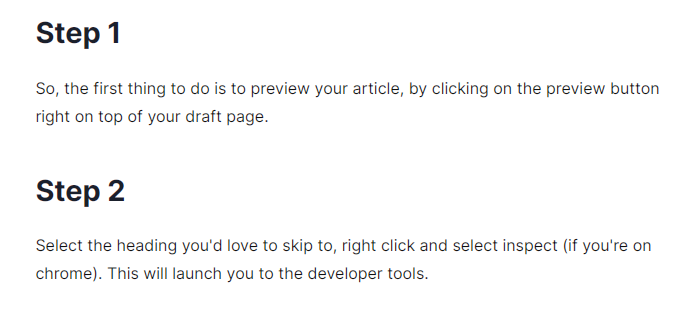
Here's a snippet of same blog, but with visuals:
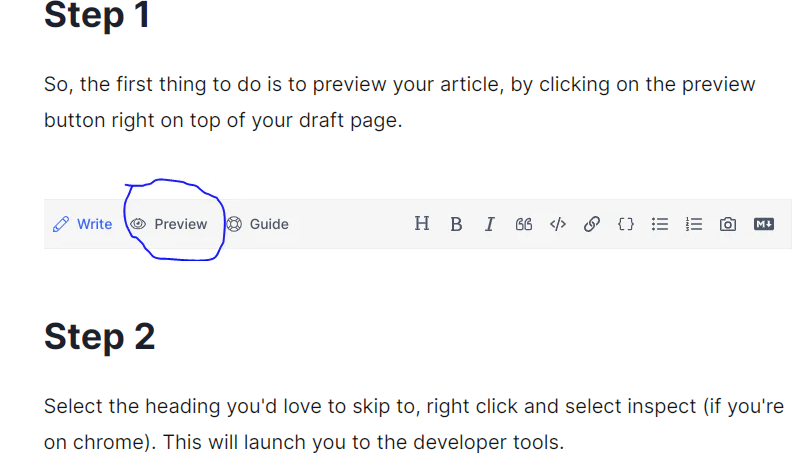
Adding images to your articles makes the content more relatable and easier to understand. In addition to images, you can also use gifs, emoji, embeds (social media, code) and code snippets where necessary.
Thoughtful formatting, templates, and images or diagrams will also make your text more helpful to your readers. You can check out the references below for a technical writing template from @Bolajiayodeji.
Do a Careful Review
Good writing of any type must be free from spelling and grammatical errors. These errors might seem obvious, but it's not always easy to spot them (especially in lengthy documents).
Always double-check your spelling (you know, dot your Is and cross your Ts) before hitting 'publish'.
There are a number of free tools like Grammarly and the Hemingway app that you can use to check for grammar and spelling errors. You can also share a draft of your article with someone to proofread before publishing.
Where to Publish Your Articles
Now that you've decided to take up technical writing, here are some good platforms where you can start putting up technical content for free. They can also help you build an appealing portfolio for future employers to check out.
Dev.to is a community of thousands of techies where both writers and readers get to meaningfully engage and share ideas and resources.
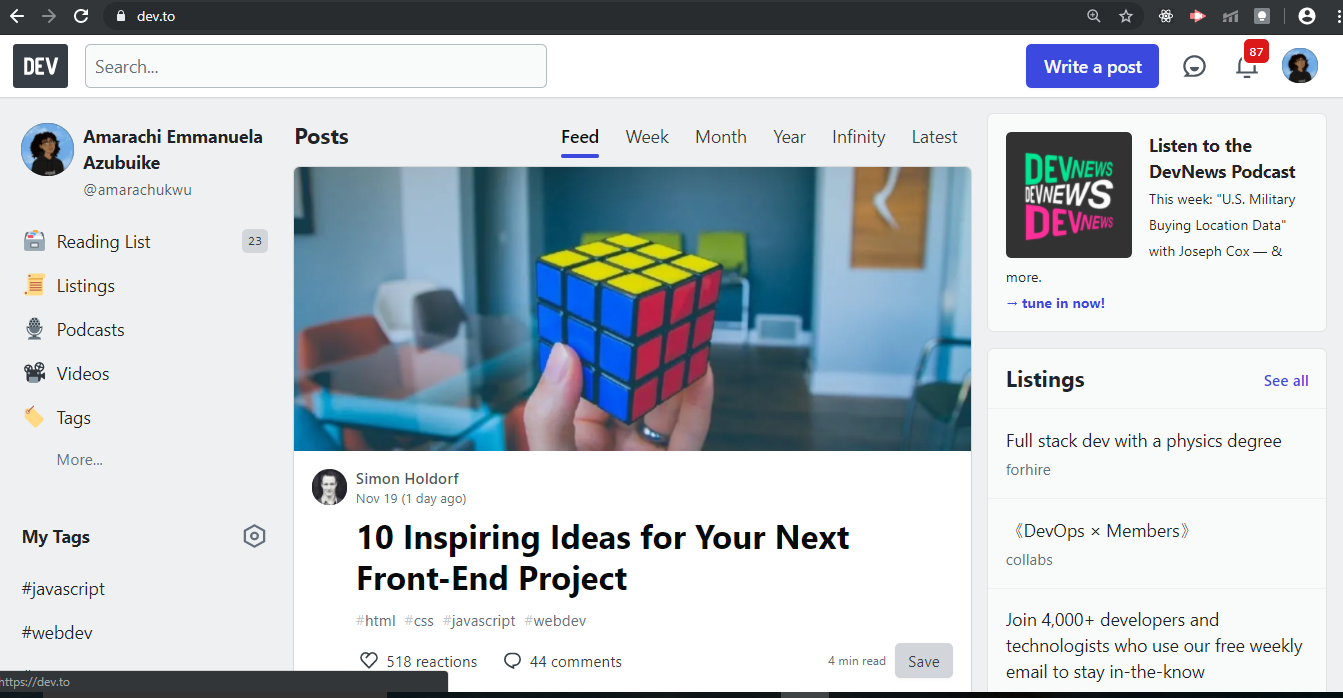
Hashnode is my go-to blogging platform with awesome perks such as custom domain mapping and an interactive community. Setting up a blog on this platform is also easy and fast.
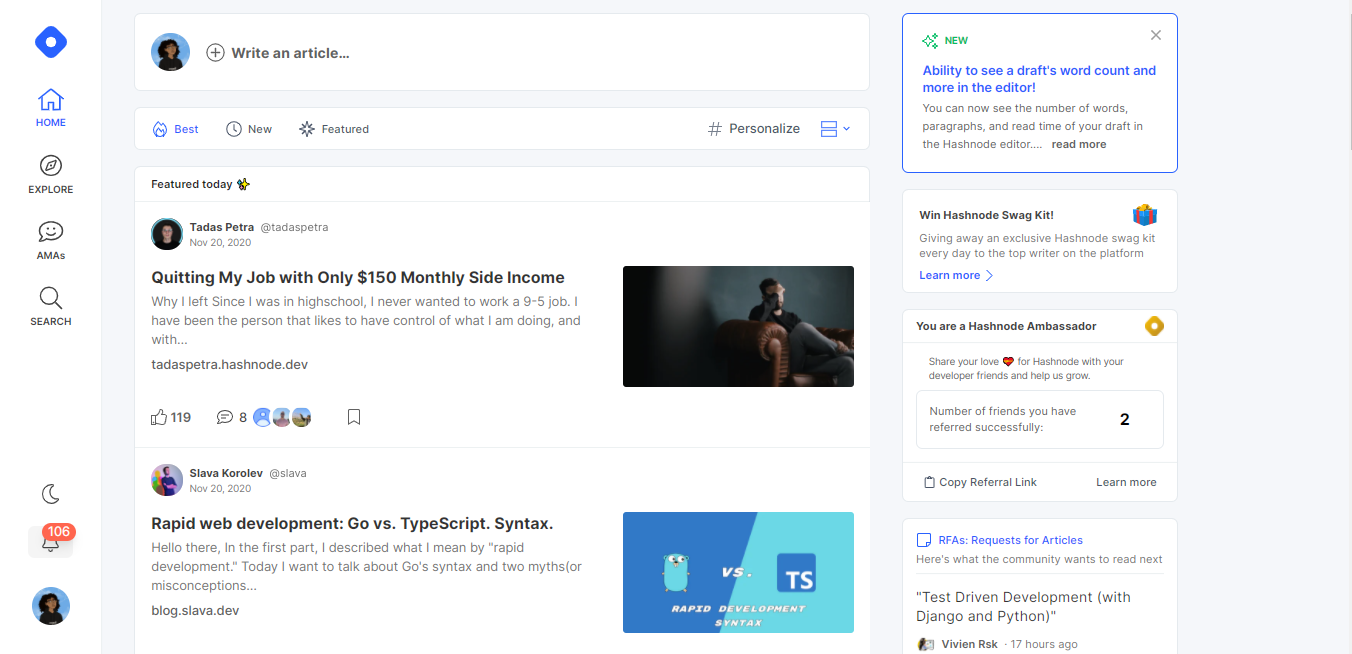
freeCodeCamp has a very large community and audience reach and is a great place to publish your articles. However, you'll need to apply to write for their publication with some previous writing samples.
Your application could either be accepted or rejected, but don't be discouraged. You can always reapply later as you get better, and who knows? You could get accepted.
If you do write for them, they'll review and edit your articles before publishing, to make sure you publish the most polished article possible. They'll also share your articles on their social media platforms to help more people read them.
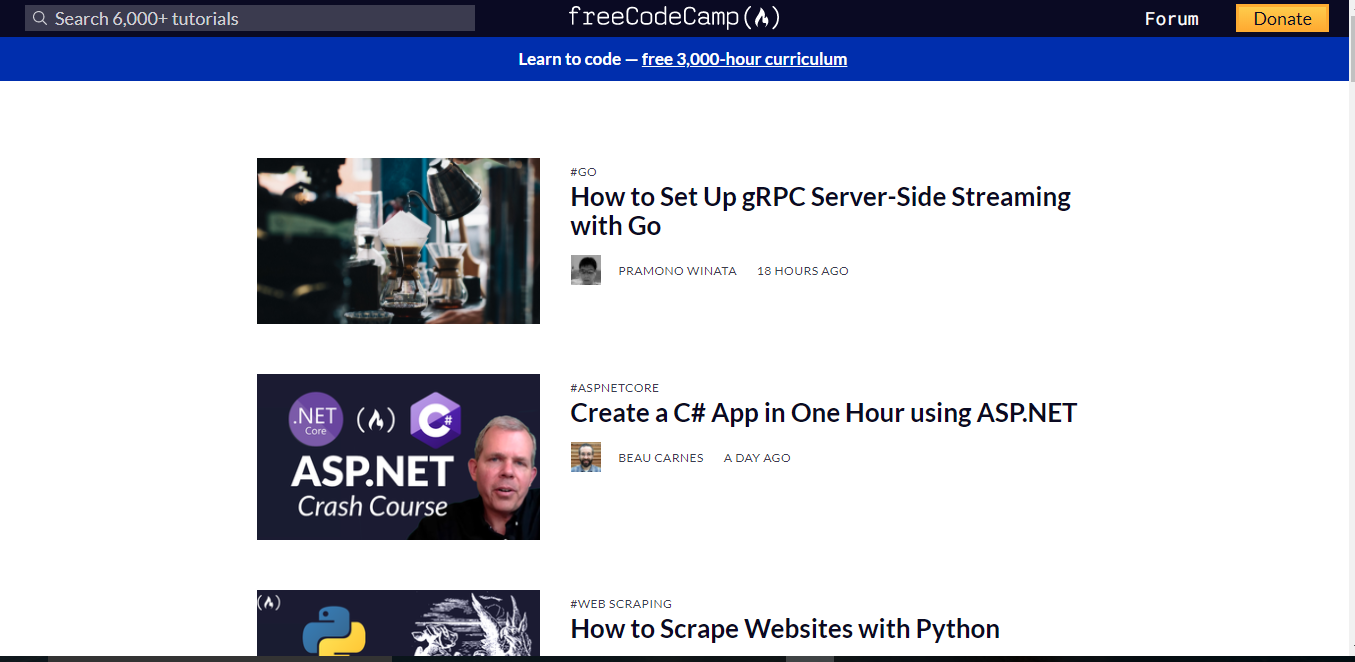
Hackernoon has over 7,000 writers and could be a great platform for you to start publishing your articles to the over 200,000 daily readers in the community.
Hacker Noon supports writers by proofreading their articles before publishing them on the platform, helping them avoid common mistakes.
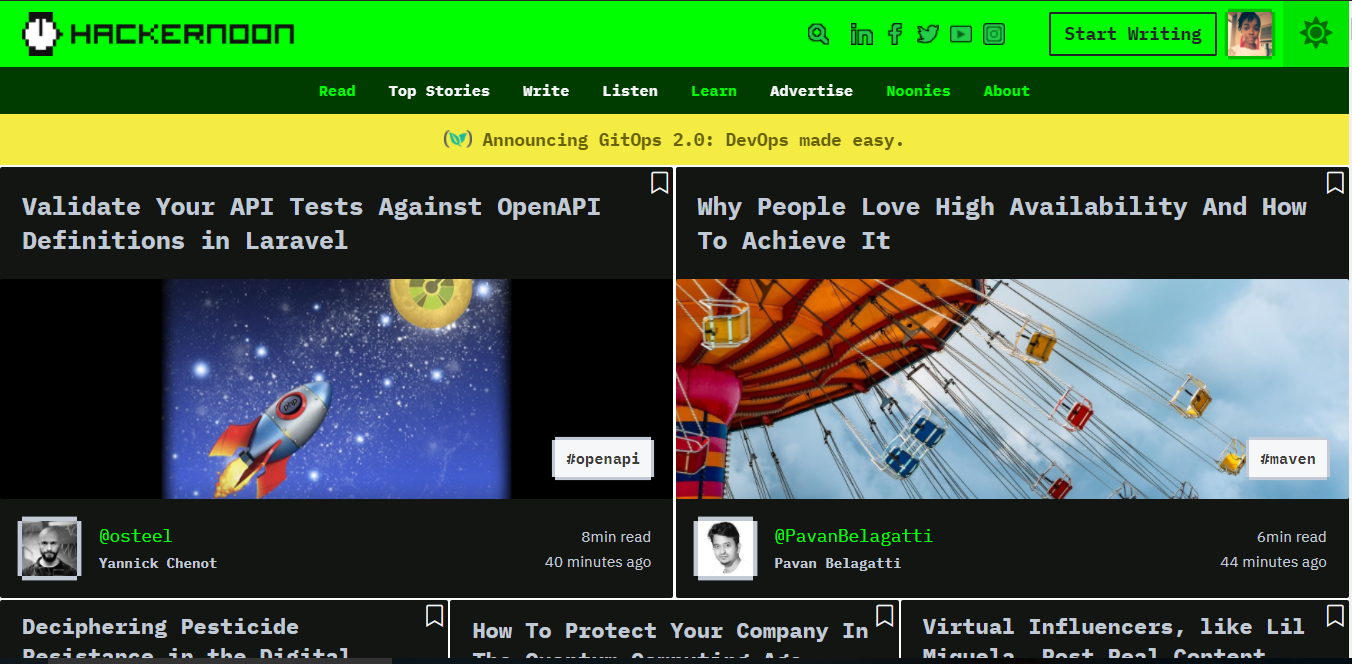
Just like in every other field, there are various processes, rules, best practices, and so on in Technical Writing.
Taking a course on technical writing will help guide you through every thing you need to learn and can also give you a major confidence boost to kick start your writing journey.
Here are some technical writing courses you can check out:
- Google Technical Writing Course (Free)
- Udemy Technical Writing Course (Paid)
- Hashnode Technical Writing Bootcamp (Free)
Technical Writing Forums and Communities
Alone we can do so little, together, we can do so much ~ Helen Keller
Being part of a community or forum along with people who share same passion as you is beneficial. You can get feedback, corrections, tips and even learn some style tips from other writers in the community.
Here are some communities and forums for you to join:
- Technical Writing World
- Technical Writer Forum
- Write the Docs Forum
Some Amazing Technical Writers to follow
In my technical writing journey, I've come and followed some great technical writers whose writing journey, consistency, and style inspire me.
These are the writers whom I look up to and consider virtual mentors on technical writing. Sometimes, they drop technical writing tips that I find helpful and have learned a lot from.
Here are some of those writers (hyperlinked with their twitter handles):
- Quincy Larson
- Edidiong Asikpo
- Catalin Pit
- Victoria Lo
- Bolaji Ayodeji
- Amruta Ranade
- Chris Bongers
- Colby Fayock
Final words
You do not need a degree in technical writing to start putting out technical content. You can start writing on your personal blog and public GitHub repositories while building your portfolio and gaining practical experience.
Really – Just Start Writing.
Practice by creating new documents for existing programs or projects. There are a number of open source projects on GitHub that you can check out and add to their documentation.
Is there an app that you love to use, but its documentation is poorly written? Write your own and share it online for feedback. You can also quickly set up your blog on hashnode and start writing.
You learn to write by writing, and by reading and thinking about how writers have created their characters and invented their stories. If you are not a reader, don't even think about being a writer. - Jean M. Auel
Technical writers are always learning . By diving into new subject areas and receiving external feedback, a good writer never stops honing their craft.
Of course, good writers are also voracious readers. By reviewing highly-read or highly-used documents, your own writing will definitely improve.
Can't wait to see your technical articles!
Introduction to Technical Writing
How to structure a technical article
Understanding your audience, the why and how
Technical Writing template
I hope this was helpful. If so, follow me on Twitter and let me know!
Amarachi is a front end web developer, technical writer and educator who is interested in building developer communities.
If you read this far, thank the author to show them you care. Say Thanks
Learn to code for free. freeCodeCamp's open source curriculum has helped more than 40,000 people get jobs as developers. Get started
Tips for Writing Technical Papers
Jennifer widom , january 2006, running example, paper title, the abstract, the introduction, related work, performance experiments, the conclusions, future work, the acknowledgements, grammar and small-scale presentation issues, versions and distribution.
Technical Writing: What Is It?
#scribendiinc
Technical writing explains complex ideas in general terms
Technical writers are responsible for conveying complex, specialized information to a general audience. Tips for successful technical writing include: ensure excellent grammar and punctuation , employ a clear and logical writing style, make sure you have a genuine understanding of the subject, and pay strict attention to the accuracy of the information presented.
What does a technical writer do?
Technical writers are employed in many sectors, including healthcare, heavy industry and utilities, education, government, finance, engineering, and human resources. Their work involves writing and editing user manuals, training materials, online help systems, proposals, grant applications, and any other documentation of a technical nature. Technical writers play a crucial role in enhancing productivity, reducing errors, improving safety, and increasing customer satisfaction.
Some technical writing pointers
Translating highly complex technical terms into everyday language isn't always easy. To help you along, here are some points to consider in your technical writing:
Know your audience
Consider who you are writing for. Is it a prospective client? Inexperienced computer users? Patients and their families? Other researchers in your field? Students? Sponsors? Colleagues? Once you have answered this question, it is important to tailor the tone, content, and style of your technical writing to your audience. Put yourself in the users' shoes; try to ensure that their questions and concerns are addressed in a way they can understand. Include all relevant information.
Be accurate
If you don't fully understand your subject, those who read your technical writing won’t understand it either. Don't attempt to mask any gaps in your understanding with complex terminology and technical jargon; your job is to make this information accessible to your audience. Double-check your information to ensure it is correct. Don't forget to corroborate the information in the body of the document with tables, figures, and references. These steps may be time-consuming, but they are crucial.
Adopt a professional style
Just because a document is about software programming or medical isotopes doesn't mean that the basic rules of spelling and grammar are irrelevant. No subject is above these rules; they are necessary to convey your meaning in an unambiguous way. Moreover, a skilled technical writer will increase his or her company's reputation for professionalism. Still, we often find the following errors in technical writing:
- Run-on sentences: Please use commas , semicolons , and full stops appropriately. Remember that any sentence longer than four or five lines is probably too long.
- Incorrect and inconsistent spelling: Some terms have more than one correct spelling, and may be spelled using hyphens (or not). Whatever spelling you choose, use it consistently. Proofread your document a number of times, as this will help you catch spelling errors.
- A casual tone: Remember to always write in a professional manner. Avoid judgmental or emotive terminology.
Adhere to your client's style guide and/or documentation template
Formatting and consistency are essential in technical writing. The document must be structured in a way that keeps the reader's interest. It must flow logically. Huge blocks of text with no breaks should be avoided. Paying attention to detail when formatting specialized documents, such as white papers, is particularly important.

Use examples
Abstract concepts are much easier to grasp when the writer describes their application in real life. Using case studies is an excellent way of describing the application and resolution of a technical problem. They also add credibility in your technical writing. For example, instead of simply claiming that using a certain procedure, strategy, or technique will improve customer service or product performance, provide concrete examples proving your point.
Inject some personality into your writing
Injecting a witty observation, some subtle humor, or interesting examples can make your technical writing more lively and memorable. Don't, however, use this technique to such an extent that it begins to undermine any of the concepts we've already discussed. It's better to be boring and precise than witty and incomplete.
Some final thoughts...
If you have written a long technical document and aren't sure that you are going to be able to catch small grammatical and spelling errors, send your document to our business editors . They will edit it for clarity and concision, and ensure that your document is error free.
Image source: Matt Artz/Unsplash.com
Have You Read?
"The Complete Beginner's Guide to Academic Writing"
Related Posts
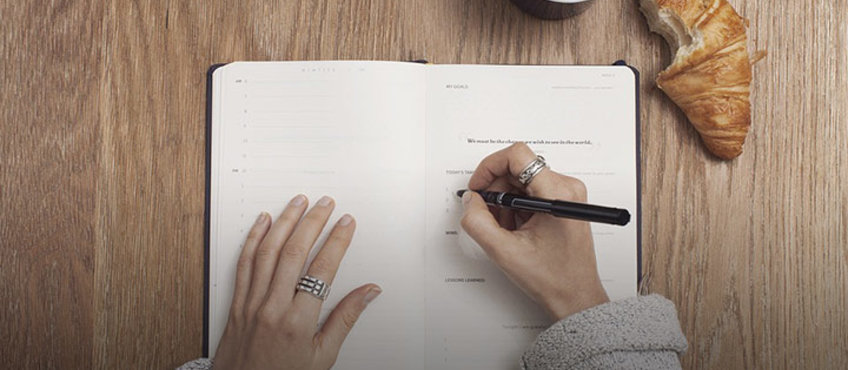
How to Avoid Redundancies
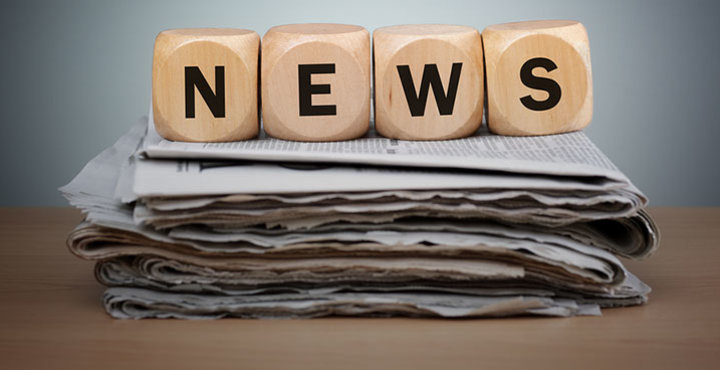
How to Write a Press Release
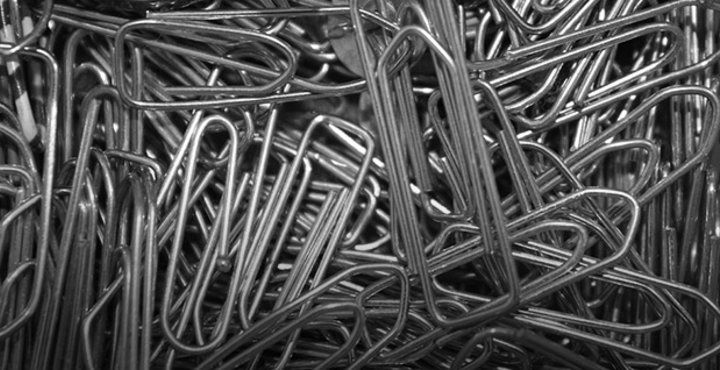
Organizing Information for Business Writing
Upload your file(s) so we can calculate your word count, or enter your word count manually.
We will also recommend a service based on the file(s) you upload.
| File | Word Count | Include in Price? |
|---|
English is not my first language. I need English editing and proofreading so that I sound like a native speaker.
I need to have my journal article, dissertation, or term paper edited and proofread, or I need help with an admissions essay or proposal.
I have a novel, manuscript, play, or ebook. I need editing, copy editing, proofreading, a critique of my work, or a query package.
I need editing and proofreading for my white papers, reports, manuals, press releases, marketing materials, and other business documents.
I need to have my essay, project, assignment, or term paper edited and proofread.
I want to sound professional and to get hired. I have a resume, letter, email, or personal document that I need to have edited and proofread.
Prices include your personal % discount.
Prices include % sales tax ( ).

Guidelines for Writing a Technical Essay
Most students write technical essays as part of academic activity. Today we are going to tell you about the process of writing this type of essay. We offer you a step-by-step guide to working on a technical text, where we will discuss style, content, writing, and collecting material. If you follow the guidelines given in the article, you will get a solid foundation for creating an excellent technical essay and not buy college essays online.
How a Technical Essay Differs from Others
Just like any other academic paper, a technical essay consists of the same elements – an introduction, the main body, and a conclusion. The main difference is in the content. A technical essay is devoted to explaining a particular scientific or technical phenomenon, displays how to perform a precise technical task, or discusses a particular method or ways of doing something.
As a rule, these are essays on such subjects as physics, chemistry, computer science, mathematics, biology, and other related disciplines. The topic of an essay is often in the form of a question that you must answer or a statement that you have to discuss. In both cases, the process of writing an essay is the same.
Choose the Subject
When selecting a topic, make sure that you can produce an in-depth, detailed essay. Before approving it with your instructor, do research and make sure that you have enough material available for high-quality work. Remember that a technical essay should have a minimum of 15-20 references. If you can’t decide, you can always ask your teacher for a piece of advice.
When collecting the material, you should focus on the most crucial, in your opinion, points and discuss and analyze them in the most detail. All other more obvious items should be mentioned briefly. When consulting the reference literature, make sure that you use references that you can reasonably trust. In other words, you should rely mainly on conference papers, scholarly journal articles, and peer-reviewed books.
Making a plan and structure is an important element while working on a technical essay. Planning can actually help you get homework done faster . When writing a technical essay, you should start with an eye-catching title describing the issue you are looking at or the method.
You should follow with an abstract section in which you describe in detail the topic of study, the research process, and your conclusion. All paragraphs should be brief, consisting of just a few sentences. Divide your entire paper into components and briefly describe what you will write in each of them. Once you have a clear plan, you can begin to fill it with information, your thoughts, and conclusions.
Conclusions
A technical essay is a mini version of an academic paper. Working on such an essay takes students more time – about one day for each section. Moreover, you will need time to collect and study the materials; then, you will need to organize them and start writing the paper. Moreover, after writing, you need to review and proofread it and make sure it corresponds to the required format.
- TemplateLab
- Art & Media
Technical Writing Examples
33 good technical writing examples (word & pdf).
The advancement in technology inevitably leads to people training their skills in technical writing, a valuable asset. The skill is crucial, especially for those who work in tech-related businesses. Learning how to make technical writing examples gives you the ability to communicate knowledge. Technical writing skills don’t just involve understanding information and writing it down in a document but also taking high-level information and processing it into a more “digestible” content.
Table of Contents
- 1 Technical Writing Examples
- 2 What does technical writing mean?
- 3 Technical Writing Samples
- 4 Characteristics of technical writing
- 5 What is the purpose of technical writing?
- 6 Technical Writing Skills
- 7 Where is technical writing used?
- 8 Tips for technical writing
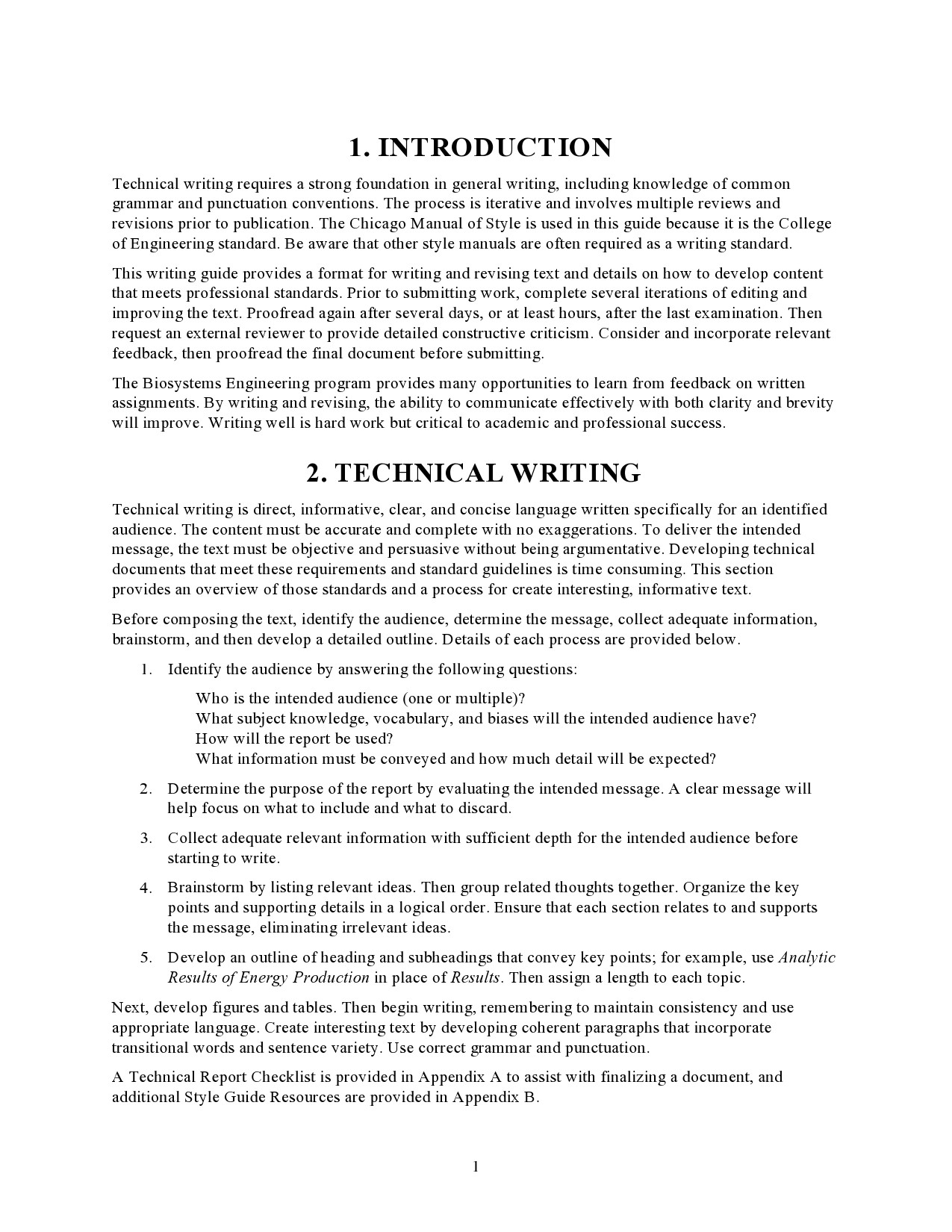
What does technical writing mean?
With regard to importance, technical writing is now at par with journalistic and creative writing. Many would feel surprised to discover that technical writing has existed since the dawn of writing language itself. People have used technical writing examples to transform complex explanations and equations then simplify them for average readers and laypersons to understand.
Take, for instance, a textbook. You may consider this a document done using technical writing because it takes complex ideas and breaks them down into more comprehensible bits for students. The main purpose of technical writing samples has nothing to do about entertainment or engagement. It was primarily created to teach the required information for learning how to perform a certain task.
Each time you purchase a product, it usually comes with a set of instructions, an instruction manual , rulebook, definitions or other such manuals. The writing used here is different types of technical writing. To learn how to master this skill, you should learn the right technical writing tips.
Technical Writing Samples
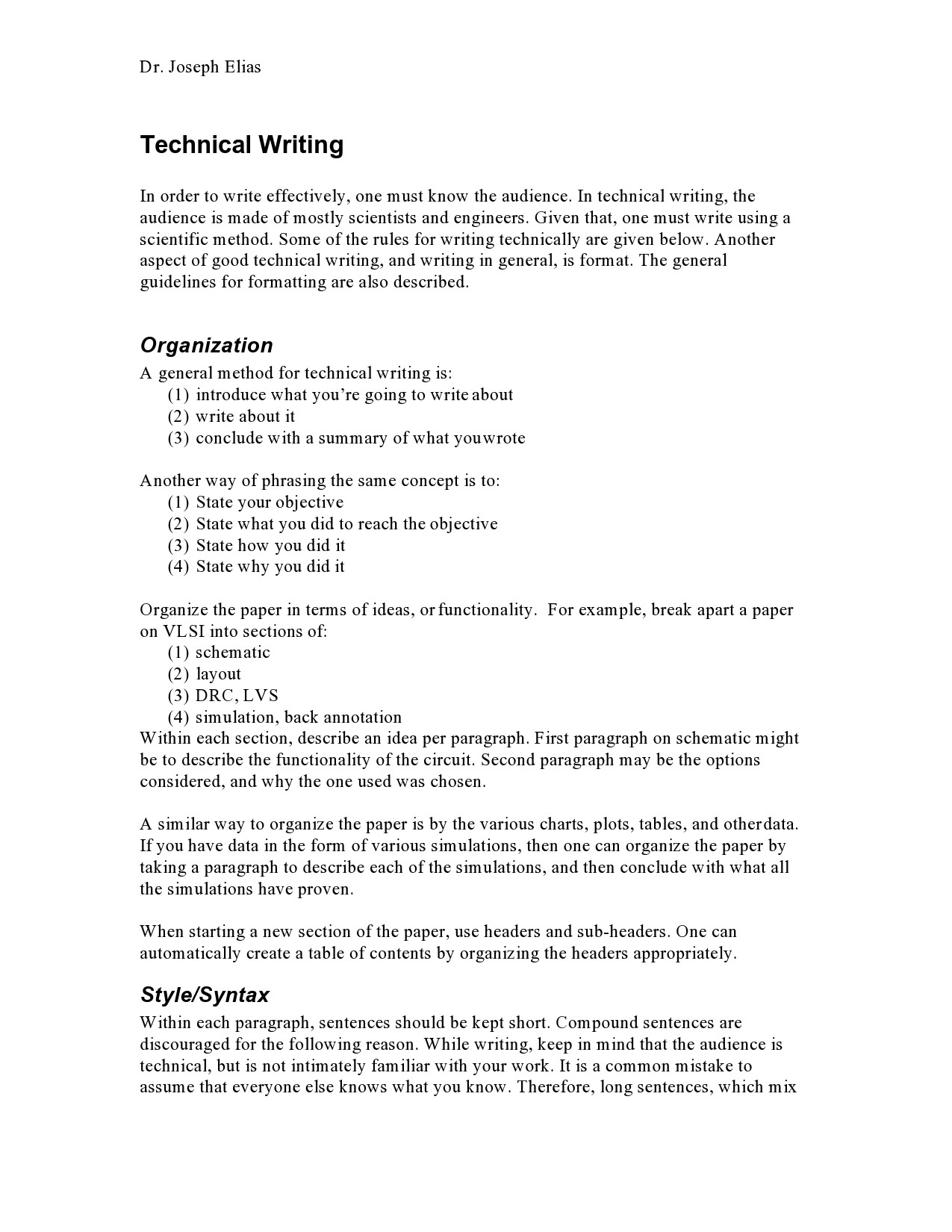
Characteristics of technical writing
If you have an interest in acquiring technical writing skills, you should know the important characteristics of the art. There various types of technical writing, each having its own purpose. What makes technical writing special is that it’s primarily informative, specifically in explaining different topics to other people.
It is commonly used in manuals and other technical documents that provide information and direction. L ike any other styles of writing, technical writing has its own characteristics including:
- It’s very direct It doesn’t use terms that people don’t understand and shuns away from eloquent writing styles.
- It’s straightforward and clear If you want to create a professional technical writing sample, stick to the subject matter and convey the information you’re writing about in a concise and clear manner.
- It has a solid structure This means the style of writing has an easy-to-follow composition that makes it easy for readers to understand. Solid structure is the main feature of technical writing as it enables the readers to access the information they need easily.
- It’s very informative and detailed The contents of materials written using technical writing skills should provide information by describing the topic as completely as possible.
What is the purpose of technical writing?
Every style of writing has its own objective. For a technical writing example, the purpose is to provide complex or confusing information to help people understand better a certain item like a computer, a new technological device, a new drug, and so on. It should also explain how a certain item works or how to finish a project .
The main target of technical writings is the people searching for information about a specific subject. The main goal is to make certain that the information provided is very concise, clear, and easy to comprehend. Technical writing can sometimes be very challenging for some people because it requires the reader to translate the information that’s hard to understand into terms that anyone can comprehend without any problems.
There are other informative types of writing as well, but it is only the technical writing style that focuses on clearly presenting the information in a specific way so that readers can utilize the information for different purposes.
Technical Writing Skills
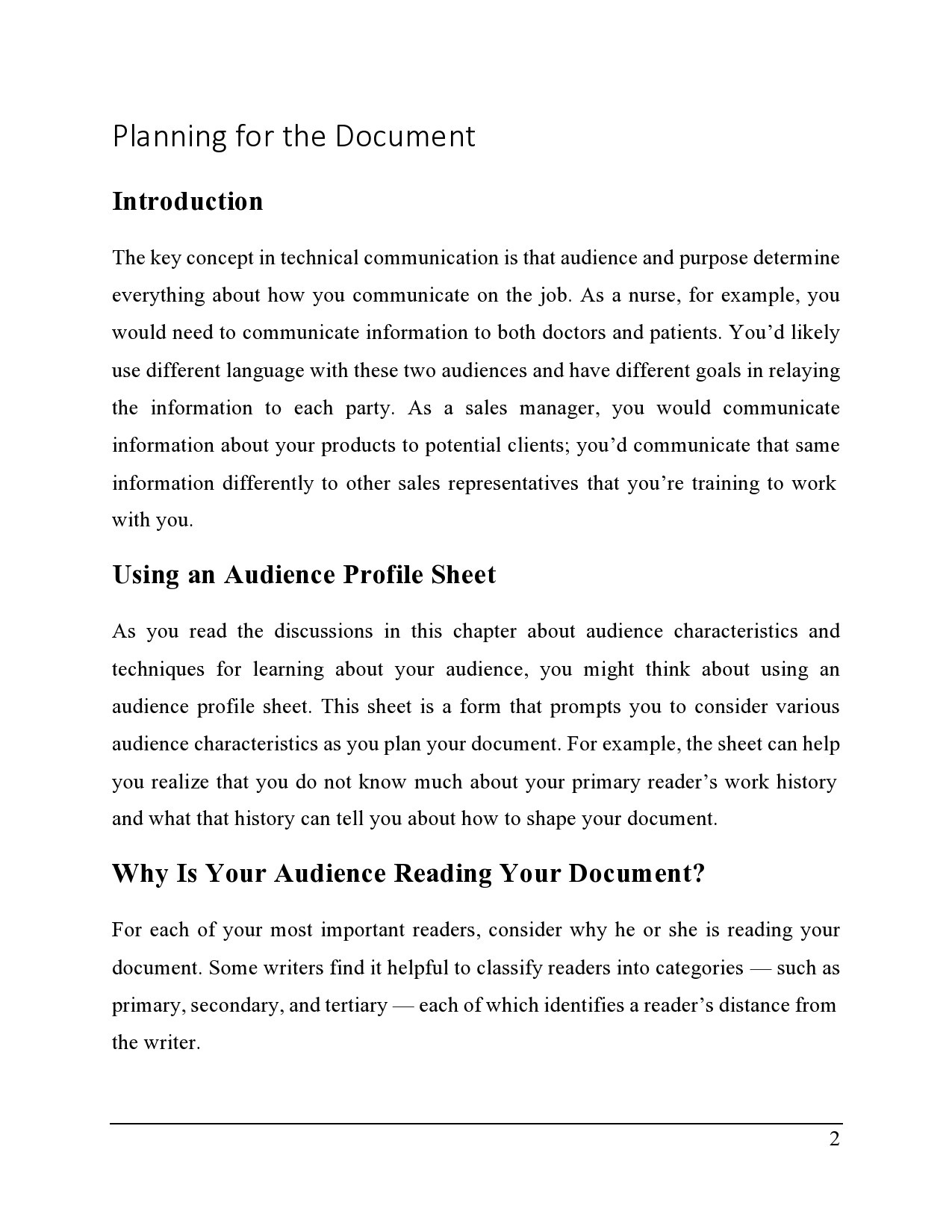
Where is technical writing used?
The main purpose of a technical writing example is to share technical information with those who need to learn about a certain subject. It comes as no surprise why most of the occupational and technological fields like robotics, electronics, engineering, chemistry , and more all use technical writing when creating instructions for the operation of machinery, technologies or for conducting experiments.
The field of technical writing can be extremely complex, especially for beginners but you can avail of technical writing samples to create for yourself a textbook, manual or other technical writing documents. With these samples, you can help create a good tone and flow for your document and outline all of the information you intend to include in your material. Here are some of the most common technical writing examples:
- Annual Reports As a rule, companies should provide annual reports for the purpose of informing shareholders about last year’s stock performance along with other pertinent financial information. Even non-profit organizations have to come up with annual reports. For this, the technical writer needs a great amount of time to compile information, then present these in a comprehensive and attractive manner to the shareholders.
- Help Files In the digital world, these files are necessary for all software produces. The main purpose of these files is to make users independent. Businesses know that maintaining a Help Desk or a Customer Support Staff can be very expensive, thus, reducing company profits . You can even write a Help file for novice users who have had no prior knowledge of the software.
- Legal Disclaimers The legal disclaimer is a statement that establishes the terms of service . You would write this to limit your liability in the event of any legal processes like lawsuits. You should make sure that you’re kept protected if anything bad happens because of the use of your document. In simpler terms, you seek to disavow any future claims made by readers.
- Standard Operating Procedures (SOP) If you’re working in a company, you should familiarize yourself with its SOP. Most companies have these well-defined procedures for accomplishing routine tasks . For instance, an SOP can establish how the payroll process works, how new employees get hired or how to calculate vacation hours . The use of an SOP can ensure that several persons in the company can do the same task in the same way to ensure consistent quality of work. Moreover, SOPs eliminate irregularities and favoritism. It ensures that workers can assume the tasks of employees who don’t come to work, have gone on vacation or got terminated without any changes in performance.
- User Manuals This refers to documents that usually accompany various electronics like televisions, gaming consoles, cellular phones, and the like. As a technical writer, you would have to write manuals that a novice will understand easily. The manual should be easy to follow otherwise the user will resort to technical support through email or by phone. If the manual is too difficult to comprehend, the customer might have no recourse but to return the product.
Tips for technical writing
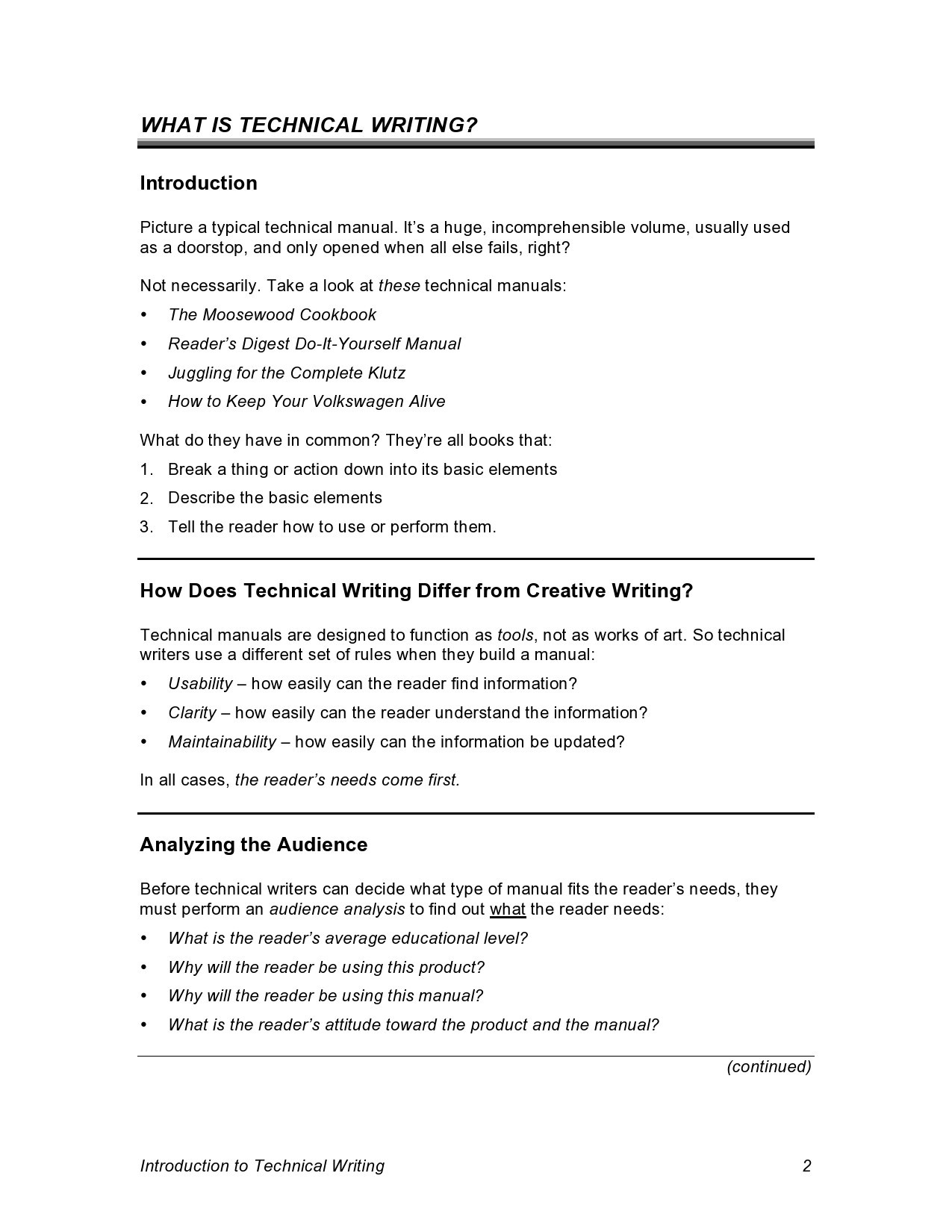
Even if technical writing skills take high-levels details, you should still explain these concisely and clearly to your audience. As a technical writer, you should come up with documents that are very clear, simple, and succinct. Sometimes, though, the results could just be the opposite.
One of your greatest challenges as a technical writer is to transform complex information into an accessible and digestible document. To help you out, here are some technical writing tips you can apply to your work:
- Before writing, think about your target audience The greatest challenge of technical writing is to write for your target audience. Because of this, there is a need to define the audience in the document’s planning process then consider this audience in each step of your writing process. When you have identified your audience, go a step further by coming up with a persona for such an audience and imagine that this exact person will be the one reading your document.
- When you choose examples, think about them carefully first Keep in mind that each technical writing sample you may encounter might not be a good example. You might even want to consider some of these documents as illustrations of what you shouldn’t do instead of the guidelines for what you should do. At one point in your life, you may have bought an item that you needed to assemble and find out later that the instructions were not sufficient or were too confusing. This is a perfect example of poor technical writing. It is a good practice to review any sample document that you plan to use and make sure that the writing style and quality of information are good enough to serve the document’s intended purpose.
- Use global English Since English is an international language. Therefore, writing technical documents in this language allows access of your document by a broader audience. Also, consider that many readers will be non-native speakers. To accommodate the largest audience possible, use global English. This English style is both literal and logical which makes it easier to understand. Furthermore, it overlaps with the principles of technical writing in terms of clarity and precision. Writing globally means you’re aware of the contents of your document which can be a challenge to comprehend or simply misunderstood.
More Templates
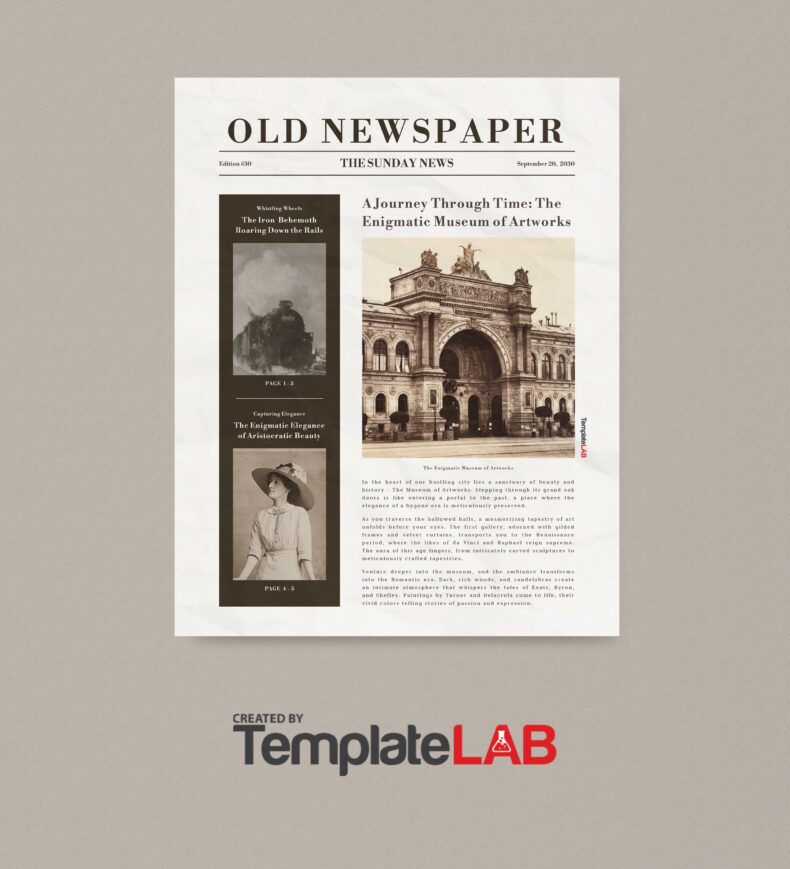
Newspaper Templates

All About Me Templates
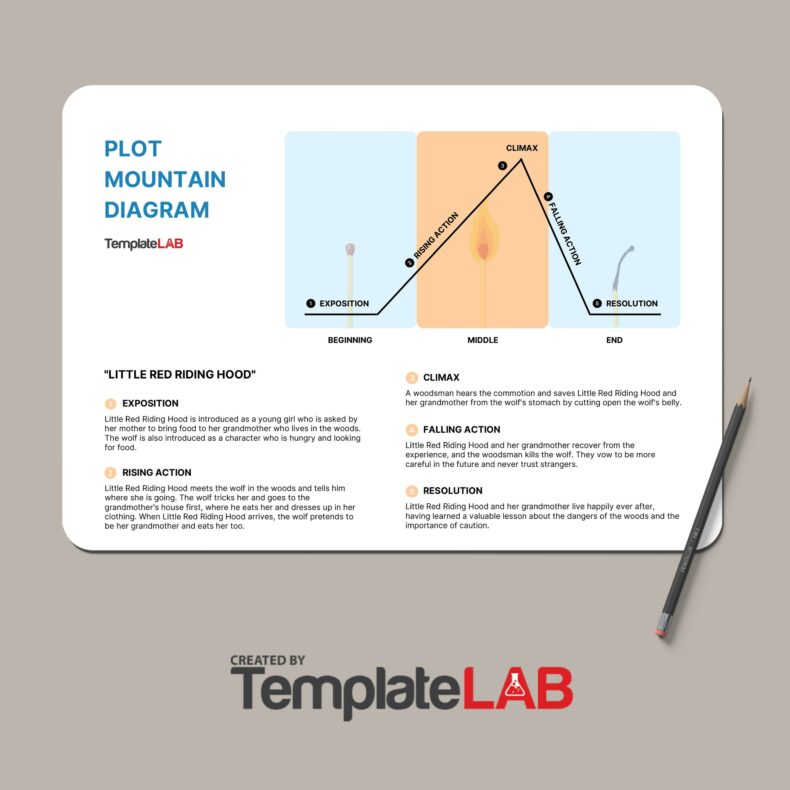
Plot Diagram Templates

Essay Outline Templates

Table of Contents Templates
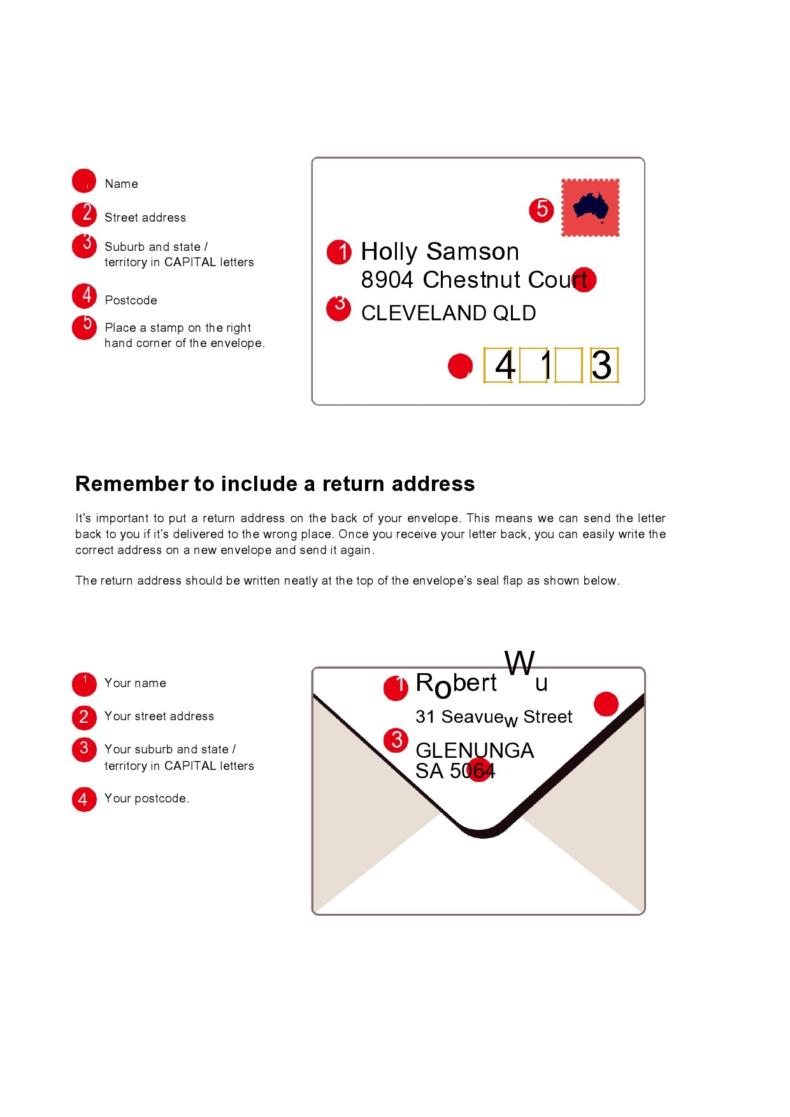
Envelope Address Templates
Want to create or adapt books like this? Learn more about how Pressbooks supports open publishing practices.
Writing Essays
Dawn Atkinson
The current chapter focuses on essays , pieces of persuasive writing developed around defined topics. This genre’s persuasiveness rests in large part on its logical structure, inclusion of quality evidentiary support, and consistent design, as explained herein; hence, essay writing calls for planning, researching, synthesizing, and revising. Although essays are generally considered a form of academic rather than technical writing, the division is not absolute, and the prevalence of essay assignments in both writing and other university-level courses merits our focus on them here.
While reading this chapter, keep in mind that college essays typically require use of a formal writing style, although the specifics may vary depending on the particular assignment and area of study. For an overview of formal writing guidelines, see the George Mason University Writing Center’s (2017) handout entitled “Reducing Informality in Academic Writing” ( https://writingcenter.gmu.edu/guides/reducing-informality-in-academic-writing ).
Essays can be divided into two broad types: expository and argumentative essays. To define these categories using information adapted from Student Academic Success Services, Queen’s University (2018b, para. 13), expository essays explain—they teach, illustrate, or clarify a subject for a reader—while argumentative essays make claims and seek to convince a reader to accept a position or point of view.
Focusing an Essay
For an essay topic to be manageable, its focus must be narrow enough so that it can be addressed adequately within the word or page count available; however, the topic should not be so narrow so as to impede your research efforts. When deciding on a topic, conduct initial research using library or internet resources to get a sense of current scholarship in the area, as well as points of agreement and contention, which may lead you to a focused direction for research. To pinpoint your particular interest in a topic, you might also consider using listing, mind mapping, outlining, freewriting, looping, or questioning, the brainstorming strategies described in the “Maintaining a Productive Writing Schedule” chapter of this textbook. Talking with your instructor or a librarian about a topic may also help you decide a paper’s focus.
What other methods could you use to narrow the focus of an essay?
Figure 1, a multi-page handout adapted from the Writing and Communication Centre, University of Waterloo (n.d.a, pp. 2-3), illustrates the process of narrowing an essay topic.
Developing and Narrowing a Topic
Develop and Narrow a Topic
A well-written paper depends on a strong topic that is focused and specific. To get there, you need to develop some topic ideas, choose the best one, and narrow that topic further.
Developing A Topic
Researching your subject, brainstorming ideas, and sharing your ideas with others are three steps that can help you develop a strong topic.
Do your research
Doing preliminary research will help you to discover what people who work on the topic are interested in or concerned about.
There are countless ways to brainstorm ideas for a topic; below are three common approaches.
- Freewriting: Jot down ideas without revising or proofreading
- Questioning: Write down questions you have about your topic without revising or proofreading
- Mapping: Starting with a main topic, write down subtopics that come to mind, drawing links that show how the different subtopics relate.
Talk about your ideas
Talking to others helps you to understand your ideas from a reader’s perspective. It can help you refine the topic or even move in a new direction.
Narrowing Your Topic
Narrowing your topic makes your work more manageable and your paper more likely to succeed. A good paper takes a smaller portion of a larger issue or problem and investigates that part in depth. Narrowing your topic allows you to choose a problem that is specific enough to research with vigour. Below is an example of the process:

Move from abstract to concrete
A manageable topic is concrete. As we narrow the scope of a topic, the subject matter moves from abstract concepts to ideas that are more precise. Let’s use bicycles, again, as our example.
Main topic: Bicycles
Subtopics: Design, Safety, Health impacts, Charity drives, Bicycle usage, Bicycles and education, Reuse, Infrastructure, Environmental impacts, Policies, Bicycles and urban development, Bicycles and commercial products, Bicycle culture
Although bicycles are concrete “things,” the word bicycles could mean different things to different people. These ideas, such as design, bicycle culture, or infrastructure, are subtopics of “bicycles.”
Add specific details
As you narrow in on one subtopic, the number of subtopics decreases:
Revised main topic: Bicycles and policies
- safety standards for bicycle design
- safety gear policies
- urban development policies and bike lanes
- road policies and cyclists
Tip: Is it narrow enough? In our last example, notice that when you begin to narrow a large topic, the initial subtopics that come up are still broad, general ideas. The more you narrow, the more specific your descriptions become. You can use the traditional journalistic questions (Who, What, Where, When, Why) to help you move towards more specific topics:
- road building policies?
- building zone policies?
- other infrastructure?
- metropolitan areas?
- medium-sized cities?
- small cities?
- construction companies?
- planning committees?
Using these questions to target the subject matter, we might narrow the topic, bicycle lanes and urban development , even further to the following: policies related to bike lanes in mid-sized metropolitan areas .
As the handout illustrates, deciding upon a suitably narrow essay topic is a process that may require several attempts to complete. Regardless, devoting time to this initial planning process is a wise investment since a defined essay topic will usefully guide a paper’s development.
Structuring an Essay
Essays, like letters and memos, follow an introduction, body, and conclusion structure, although these sections may also be subdivided. The sections need to be fully developed to coherently deliver an essay’s central message to readers. They also need to be proportionate to an essay’s overall length: for instance, a brief essay requires a brief introduction and conclusion, whereas an extended essay can accommodate a longer introduction and conclusion. In general, budget 10 percent of the paper’s word count for the introduction, 80 percent for the body, and 10 percent for the conclusion.
Composing an Introduction Section
An essay introduction establishes context for the reader by commencing discussion of the document’s central message, around which all the other content will coalesce, and by revealing how the essay will unfold. To be more specific, the introduction delimits the scope and purpose of the essay so that readers understand its direction, range of coverage, and intent.
The context-setting information provided at the beginning of an introduction might include definitions of key terms that will be used throughout the rest of the paper, a summation of how something works, essential background on the topic to be addressed in the piece, or articulation of circumstances pertinent to a problem—perhaps a concise discussion of historical events surrounding the topic, previous research conducted in the area, or treatment of the topic in the news. A writer has considerable leeway when deciding how to articulate context-setting information, and inventiveness in this section can help draw readers into the essay. Schall (2014, para. 7), for instance, describes how narration , storytelling in other words, can be used to stimulate reader interest in an essay. The following examples, adapted from Schall (para. 7), present the initial lines from two essay openings, one focused on the “generic nature of America’s highway exit ramp services” and the other on shape constancy in relationship to human visual perception, to demonstrate the interest that narration can inspire.
- The observation struck me slowly, a growing sense of déjà vu. I was driving the endless miles of Interstate 70 crossing Kansas when I began to notice that the exits all looked the same. → Notice how the writer uses I to communicate his/her experience.
- Our eyes often receive pictures of the world that are contrary to physical reality: a pencil in a glass of water miraculously bends and railroad tracks converge in the distance. → Notice how writer omits I but is nevertheless reflective about the subject matter.
Regardless of the flavor of context-setting information you provide in an essay, the information should help readers connect with the text’s central message. Therefore, avoid beginning an essay with an overly general statement, such as “People argue about many controversial topics,” that could apply to any number of papers. This kind of nondescript material wastes readers’ time.
An essay’s central message is delivered in its thesis statement , a sentence, sometimes more, that articulates the theme of the paper and the writer’s view on it. The thesis thus explains the paper’s controlling idea by specifying what the writer has to say about a particular topic and by clarifying what will and will not be covered. The thesis statement is typically placed at or near the end of the introduction to initiate the reader’s progression into the rest of the paper. Schall (para. 8) explains that a well-written thesis statement should be inexorably tied to the essay it accompanies, carefully constructed, and revealingly focused: “concretely announce the most important elements of your topic and suggest your fundamental approach—even point [readers] toward the paper’s conclusion if you can.” The following two thesis statement examples, adapted from Schall (para. 9), fit this description.
- This paper reviews the problem of Pennsylvania’s dwindling landfill space, evaluates the success of recycling as a solution to this problem, and challenges the assumption that Pennsylvania will run out of landfill space by the year 2024.
- As this paper will show, the fundamental problem behind the Arab-Israeli conflict is the lack of a workable solution to the third stage of partition, which greatly hinders negotiations for peace.
Notice that each example indicates the paper’s unifying theme and the writer’s viewpoint on the matter.
Developing an effective thesis statement for an essay requires work on a writer’s part. Try using these steps, adapted from the Writing and Communication Centre, University of Waterloo (n.d.c, “Building Effective Thesis Statements”), when building a thesis statement to make the task more straightforward.
- Read the assignment directions carefully so you are clear about the expectations.
- Conduct preliminary research to gather and organize information about your topic.
- What is new about this topic?
- What is important about this topic?
- What is interesting about this topic?
- What have others missed in their discussions about this topic?
- Conduct additional research once you have narrowed your focus in order to find evidence to support your thesis. As you research, your understanding of the topic may further develop and evolve.
- Refine your thesis statement so it clearly expresses your angle or position.
As this list points out, an effective thesis statement typically develops over time and with concerted effort.
A thesis statement should fulfill the functions set out in its definition otherwise it will not guide the development of an essay. The following list, adapted from McKeever (n.d.c, paras. 12, 16, 17) and Sweetland Center for Writing, University of Michigan (2020a, para. 8), identifies markers of weak thesis statements.
- A simple observation (Example: NASA scientists regularly conduct experiments in space.) Although an observation may be true, it cannot initiate a lively and extended discussion of the multiple views surrounding a complex topic.
- A statement of fact (Example: Some people are opposed to stem cell research.) To determine whether a statement is a fact, ask if anyone could reasonably disagree with it. If everyone would agree that the statement is true, it is a fact, meaning that it is not open to interpretation or discussion.
- A broad generalization (Example: Politics requires working for the people.) It may seem that a broad thesis statement creates the possibility for numerous essay directions, but broad issues contain too many specific arguments within them, and making a broad claim leads to making a shallow argument.
- A question (Example: Why are self-service checkout machines popular in stores?) A thesis must be phrased as a statement, although you might decide to narrow the focus of an essay by devising a research question (a question that a research project seeks to answer). A thesis statement answers a research question in sentence form.
- A misleading statement (Example: This essay will prove that a person who is old enough to vote and serve in the armed forces should be allowed to drink alcohol too.) The word prove points to a fact, something that is indisputable, and a thesis cannot be a statement of fact. More troubling about the example, however, is that an essay cannot irrefutably prove something, so the statement is misleading.
- A statement that uses figurative language (Example: The runaway train of individualism must be controlled and not allowed to jump the tracks and obliterate innocent bystanders.) A thesis statement should enable a reader to clearly and immediately identify the focus of an essay. Figurative language, such as that used in the example, is wordy, vague, and quite frankly confusing, so avoid it.
- An unfocused statement (Example: I think the inconsistent penalties for drunk driving, even if enhanced, because of the impact of drinking and driving on families who lose their children, fathers, mothers, or other family members to death and/or disability, are not strict enough in the various states, allowing drunk drivers to go free although there is a high risk of offending again.) A thesis statement that contains multiple clauses and lists is confusing. Oftentimes, such statements also present details that should be discussed in body paragraphs. Remember that a focused thesis statement identifies and delimits the direction of an essay, as this revised example does: The United States needs a consistent, national law that strips drunk drivers of driving privileges for five years after their first offense. Notice that the revised example omits I think since the phrase is redundant; the writer’s view is implicit in the sentence. In general, avoid the phrases I think , I feel , and I believe since they add unnecessary words to an essay and give the appearance of uncertainty.
Prevent the thesis statement problems listed by focusing on a specific topic and articulating your view on that topic in a clear, concise, and unambiguous way. In addition, be prepared to revise the thesis statement as necessary during your essay’s development.
Depending on assignment specifications, disciplinary conventions, educational context, or authorial choice, a writer may integrate a route map , a brief outline of the specific topics the essay will cover and in what order, in the thesis statement or provide this information in a separate sentence or sentences at the end of the introduction. The order of topics in the route map should match the sequence in which they are addressed in the body of the essay; the route map thus serves as a skeleton outline of the essay by giving readers a sense of how the text will be organized.
The essay introduction structure described here takes the form of the inverted triangle presented in Figure 2, with the reader connecting with broad context-setting information before moving on to a more narrow discussion of the essay’s focus area and organizational structure provided in a thesis statement and route map.
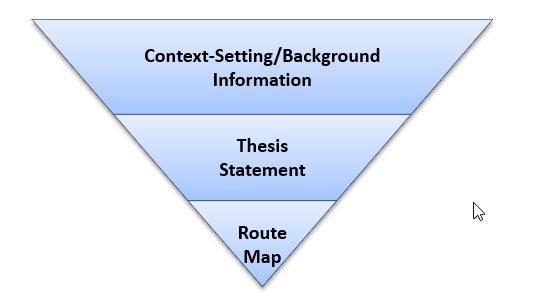
Figure 2. Moving from general to specific information as an essay introduction proceeds
Figure 3, adapted from the Academic Writing Help Centre, Student Academic Success Service at the University of Ottawa (2016c, para. 10), shows the introduction elements at work in a sample paragraph.
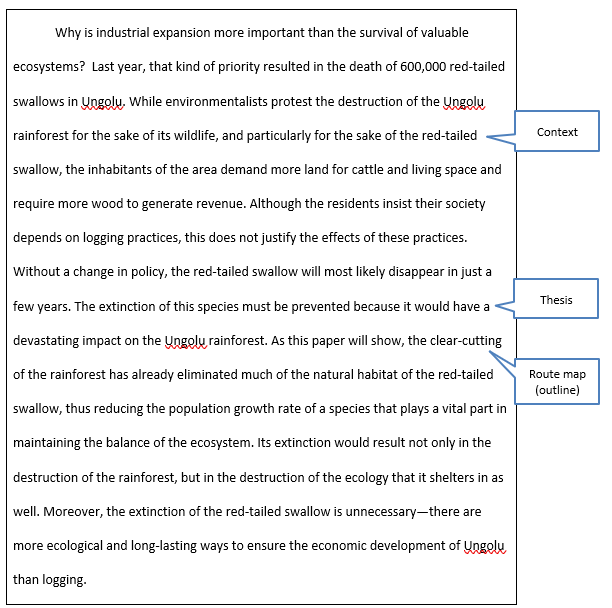
Figure 3. An introduction with context-setting, a thesis statement, and a route map
If an introduction is clearly focused, comprehensibly organized, and grammatically and mechanically sound, it can inspire a reader’s interest in the remainder of the essay.
Composing a Body Section
The body of an essay expounds upon the central theme articulated in the text’s thesis statement until that theme is fully developed. The body section is divided into paragraphs, and each paragraph centers on one main point that unifies the content of the paragraph and is articulated through an explicit or implied topic sentence. A topic sentence encapsulates a paragraph’s focus, and in technical writing, explicit topic sentences typically appear at the beginnings of paragraphs to expediently deliver needed information to readers. Using this structure, everything that follows the topic sentence in a paragraph—examples, illustrations, explanations, quotations, paraphrases, summaries, reasons—supports the point made in the topic sentence. If a writer instead opts to use an implied topic sentence, he or she may discuss a source, viewpoint, question, or piece of evidence slowly in the paragraph, allowing the paragraph’s momentum to develop the text’s key takeaway. The reader is consequently responsible for inferring the paragraph’s topic sentence in this situation. Whether the topic sentence is explicit or implied, the reader should leave the paragraph with a clear understanding of its main point.
To successfully communicate a paragraph’s main point and give readers a sense of the paragraph’s direction, a topic sentence must be specific. A topic sentence that simply announces the subject matter of a paragraph—“In this paragraph, I will discuss…”—does not fit this description, as the professionals at Student Academic Success Services, Queen’s University (2018a, para. 5) explain. To devise a precise alternative, think carefully about the paragraph’s key takeaway and how that point ties in with surrounding paragraphs and ultimately links back to the essay’s thesis statement; then try to articulate the key takeaway in one focused and unifying umbrella sentence underneath which all the other points in the paragraph fall.
In the process of developing an essay’s central theme through the inclusion of focused topic sentences and relevant and substantive follow-up sentences, the body section of an essay aims to be compelling: for example, an author might try to convince readers to adopt his or her position on an issue; to take a careful look at a text and how it is constructed; to contemplate the layers of complexity surrounding an area of investigation; or, more generally, to consider the well-informed nature of the essay and its fluid delivery of information. The body section thus involves persuasion. To address an essay’s central theme in a comprehensive and fair way, a writer who aims for maximum persuasiveness will speak to the multifaceted perspectives surrounding points of discussion rather than focusing exclusively on his or her own viewpoint. The latter signals bias in an argument, a situation to avoid in academic and technical writing.
Writers may employ certain patterns of development to present information in body paragraphs so that it is logical and compelling. The following list, adapted from Student Academic Success Services, Queen’s University (2018b, paras. 12, 17-21), describes a number of these patterns.
- Description: Conveys specific details about the look, taste, smell, sound, or feel of something.
- Illustration/Example: Illustrates a general concept with specific examples or uses an example as evidence to support a point.
- Spatial: Describes how something looks in relationship to how it occupies space (e.g., inside to outside, top to bottom, front to back, or left to right).
- Comparison/Contrast: Examines two or more things to determine their similarities and differences using clearly defined criteria.
- Cause/Effect: Examines the causes that have led to certain results.
- Evaluation: Measures something by examining it in relation to a given set of criteria; may discuss the thing’s strengths and weaknesses in light of this evaluation.
- Classification: Examines something by dividing it into categories or subtypes.
- Sequence/Process: Explains how something works in sequential or step-by-step fashion.
- Narration: Tells a story in chronological order.
- Definition: Explains the distinguishing features of something.
- Order of Importance: Places the most important information in a strategic place to affect reader perception.
Writers may combine these patterns when developing body paragraphs or use them separately; assignment directions may also specify the use of a particular pattern in an essay.
Figure 4, adapted from the Academic Writing Help Centre, Student Academic Success Service at the University of Ottawa (2016a, para. 11), demonstrates elements of persuasion at work—in this case a viewpoint (claim) supported with a reason and evidence—in an argumentative body paragraph.
What do you think of the paragraph? Apart from the argument elements identified in the paragraph, what else helps to make it persuasive?
Figure 4. A body paragraph containing a claim supported with a reason and evidence
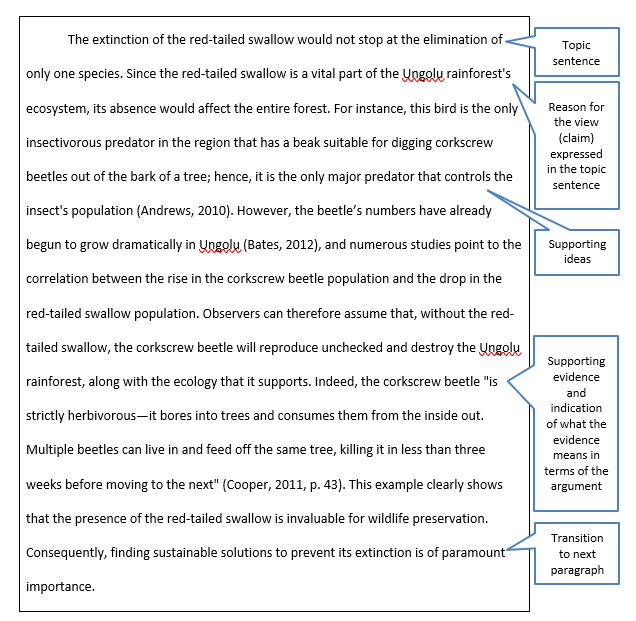
While Figure 4 uses a quotation as evidence to support a claim, evidence in body paragraphs can take many forms: for example, summaries, paraphrases, tables, figures, equations, anecdotes, personal experiences, facts, statistics, and numerical and word field data.
Composing a Conclusion Section
A conclusion emphasizes an essay’s central message by reiterating its thesis (without repeating it word for word) and summarizing its key points. Because a conclusion brings an essay to a cohesive end, it should not discuss new information; instead, it should follow on logically from content already covered. A conclusion’s very definition—“an articulated conviction arrived at on the basis of the evidence you have presented” (Schall, 2014, para. 15)—points to its unifying function. The following conclusion sample, adapted from Schall (para. 16) and excerpted from the paper “Exercise in the Prevention and Treatment of Osteoporosis in Women,” reflects directly on the paper’s hypothesis, stated in the introduction, and presents a logical realization of the paper’s goals.
The majority of evidence presented in this paper supports the hypothesis that exercise positively affects bone mineral density in both premenopausal and postmenopausal women. Importantly, exercise has been shown to increase bone mineral density in premenopausal women even after the teenage years, and it helps preserve the bone mass achieved in the subsequent decades. Evidence also shows that exercise adds a modest amount of bone mass to the postmenopausal skeleton. As these findings demonstrate, women of all ages can benefit from regular weight-bearing exercise, an increased intake of calcium-rich foods, and—for postmenopausal women—the maintenance of adequate estrogen levels. Women of all ages can prevent osteoporosis or lessen its severity by making appropriate lifestyle choices.
If you experience a roadblock when constructing a coherent conclusion such as this, Schall (para. 14) recommends reviewing the essay’s introduction and body to revisit what the paper set out to do and how it accomplished its aims or reviewing these sections to determine the paper’s contributions to the particular research area addressed.
While focusing squarely on the essay’s central message and the document’s particular purpose, a conclusion may also discuss how the essay’s findings compare with other research in the area; emphasize the implications of the findings (what they mean and why they are important—the so what , in other words); consider the limitations of the research conducted for the essay; or make recommendations for further research. Again, these elements should link back to the essay’s central message so readers understand the context for their discussion. Here is a conclusion example, adapted from the Academic Writing Help Centre, Student Academic Success Service at the University of Ottawa (2016b, para. 7), that emphasizes the essay’s central message and summarizes its key points before underscoring the implications of the findings and proposing a solution to the issue discussed in the paper.
In the end, there is no way to deny the seriousness of the environmental threat. If the current clear-cutting practices continue, the Ungolu rainforest will be unable to support the red-tailed swallow, and it will become extinct. Without this bird, the tree-eating corkscrew beetle will have nothing to stop its spread, and it will disrupt the rainforest’s ecosystem even further. Although the inhabitants of the area request the commercialization of land and wood to encourage the economic development of Ungolu, initiatives with regard to ecotourism and biological agriculture can be pursued to ensure both the growth of the economy and the survival of the red-tailed swallow. Because of the dire environmental consequences of its extinction, it is vital that this species be preserved—and it is possible to do so with a reasonable amount of effort and resources. Indeed, the best way to encourage the inhabitants of the area to let the Ungolu rainforest recover is for northern countries to stop purchasing the products obtained from logging practices and to subsidize the local initiatives discussed in this paper, otherwise the local population will not be motivated to make a significant change. Without quick and decisive action, rainforest tracts will be eliminated, and the inhabitants of the area will be even worse off than before the introduction of logging.
The implications and call to action discussed in this conclusion coherently link back to the introduction and body sections of the essay.
Gathering Quality Evidence for an Essay
In addition to a logical structure, an essay’s effectiveness largely hinges on the quality of its evidentiary support. Evidence that is inaccurate, untrustworthy, irrelevant, insufficient, dated, or flawed in some other way is unlikely to convince a reader to adopt a writer’s perspective and may actually inspire the opposite effect. On the other hand, sound evidence can contribute to the persuasiveness of an essay and demonstrate a writer’s research ability. While the “Writing Topic Proposals” chapter of this textbook supplies tips for evaluating the quality of sources and the evidence they provide, the multipage handout in Figure 5 (adapted from McKeever, n.d.a) offers additional points to consider.
Does anything on the handout surprise you? Why or why not?
Figure 5. A guide to evaluating information sources
You might decide to use the checklist items in Figure 5 to evaluate sources of information for your essay. Figure 6 (Webber, 2018, p. 1) presents an alternative tool: a visual scorecard for source evaluation.
Figure 6. A scorecard tool for evaluating source information
The instruments in figures 5 and 6 can help you apply consistent evaluation criteria to potential sources of evidentiary information for an essay.
Incorporating Quality Evidence into an Essay
After locating quality evidentiary support for an essay, you must incorporate it into your text in a logical and ethical way so that readers understand its presence, its origin, and how it relates to your own ideas. Quotation, paraphrase, and summary offer three means by which to integrate evidence into an essay.
Before attempting to quote, paraphrase, or summarize a source, make sure you fully understand the text’s meaning and feel confident about discussing it. If you are unclear about what the source text says, do not try to integrate its information into your essay; such confusion can damage the persuasiveness of a paper since savvy readers may detect the issue. Instead, read the text several times slowly to grasp its meaning or discuss it with your classmates and instructor before attempting to incorporate its information into an essay. Class discussions about confounding texts can oftentimes provide clarification and fruitful avenues for writing projects.
Using Quotations
When writers quote , they use the exact words from source texts, enclose those words in quotation marks, and cite and reference the sources to document the origin of information. Quotations can provide telling evidence in a paper if they are used sparingly and strategically. Conversely, their overuse can affect the flow of a piece of writing and give readers the impression that the writer cannot formulate his or her own thoughts about a text. Table 1 explains when to use and avoid quotations.
Table 1. Reasons to use and avoid quotations when writing
| When the language of a source is the focus of your project or investigation | When the quotation repeats rather than expands on the point you are making |
| When a text’s language is especially expressive | When you simply want to fill space |
| When the precise words of an authority give credence to your argument | When the quotation makes rather than supports your point |
| When exact wording is necessary for technical accuracy | When you cannot weave the quotation into your own text in a cohesive manner |
If you decide to use quotations in an essay, take care to integrate them cohesively.
Quotations cannot on their own provide compelling evidentiary support for an essay; a writer must consequently explain their presence and relevance to readers. In other words, a writer must contextualize a quotation so readers understand its use. The quotation sandwich offers a helpful method for working quotations into papers in a cohesive way. Using this technique, a writer introduces a quotation, provides the quotation, and comments on the quotation’s relationship to the paper. Figure 7, adapted from McKeever (n.d.b), demonstrates use of the quotation sandwich approach.
Figure 7. A quotation sandwich can contextualize source information for readers
The sandwiching method in shown in Figure 7 can also be used with paraphrases, summaries, visuals, and lists to interweave those elements into a document so it flows together effectively.
Using a quotation from the first page of Charles Dickens’ 1859 novel A Tale of Two Cities —“It was the best of times, it was the worst of times”—textbook writers Last and Neveu (2019, pp. 236-237) explain that the seamless integration, signal phrase, and colon methods can also be used to integrate quotations into a text in a cohesive manner. The following list, adapted from Last and Neveu, explains and exemplifies these methods.
- Seamless Integration: Embed the quotation or parts of it into your sentence so that if you read the text aloud, listeners cannot distinguish the quotation from the rest of the sentence.
Example: Charles Dickens begins his 1859 novel with the paradoxical observation that the eighteenth century was both “the best of times” and “the worst of times” (p. 1).
- Signal Phrase: Use a signal phrase (author + reporting verb) to introduce the quotation, clearly indicating that the quotation originates from a specific source.
Example: Describing the eighteenth century in his 1859 novel, Charles Dickens observes, “It was the best of times, it was the worst of times” (p. 1). → Notice that a comma follows observes since the verb signals the beginning of a quotation.
- Colon: Use a colon to introduce a quotation when your own introductory words constitute an independent clause (i.e., a complete sentence); the colon emphasizes the quotation.
Example: In his 1859 novel, Charles Dickens defines the eighteenth century as a time of paradox: “It was the best of times, it was the worst of times” (p. 1).
Any of these techniques can be used in conjunction with a quotation sandwich for maximum cohesive effect.
Although a quotation extracts the exact words from a source, a writer might need to adjust the quoted material to interleave it into his or her own text so the language flows together in a concise, grammatical manner that makes sense to readers. For example, the writer might need to alter the verb tense of the quotation so it matches the tense used in the rest of the sentence or insert a clarifying comment into the quotation to help readers understand its meaning. Both of these situations call for the use of brackets (i.e., [ ]). Ellipses, three periods in a row (…), are used to show that irrelevant words have been omitted from the middle of a quotation; four periods are used when a sentence or more is omitted from the middle of a quotation. Instead of quoting full sentences, writers oftentimes integrate short phrases or parts of sentences into their texts, using ellipses in these circumstances. If a writer omits words from the beginning or ending of a quotation, the ellipses are unnecessary.
Last and Neveu (2019, p. 238) call upon the following text from Petroski (2014) to demonstrate the use of brackets and ellipses in action. The text is a long quotation (40+ words), so it begins on a new line and is indented rather than enclosed in quotation marks. When citing a long quotation such as this, place the citation information (in this case, the page number of the quotation) outside the final mark of punctuation at the end of the quotation. These are standard conventions for incorporating long quotations into a piece of writing. The examples that accompany the text are adapted from Last and Neveu (2019, p. 238).
Engineers are always striving for success, but failure is seldom far from their minds. In the case of Canadian engineers, this focus on potentially catastrophic flaws in a design is rooted in a failure that occurred over a century ago. In 1907 a bridge of enormous proportions collapsed while still under construction in Quebec. Planners expected that when completed, the 1,800-foot main span of the cantilever bridge would set a world record for long-span bridges of all types, many of which had come to be realized at a great price. According to one superstition, a bridge would claim one life for every million dollars spent on it. In fact, by the time the Quebec Bridge would finally be completed, in 1917, almost ninety construction workers would have been killed in the course of building the $25 million structure. (p. 175)
Petroski, H. (2014). To forgive design: Understanding failure . Belknap Press.
- Brackets can be used to signal a change to the verb tense in a quotation:
Petroski (2014) recounts the story of a large bridge that was constructed at the beginning of the twentieth century in Quebec, saying that “by the time [it was done], in 1917, almost ninety construction workers [were] killed in the course of building the $25 million structure” (p. 175).
- An ellipsis can be used to signal the omission of words from a quotation:
“Planners expected that when completed, the…bridge would set a world record for long-span bridges of all types,” according to Petroski (2014, p. 175).
- Brackets can be used to signal a clarifying insertion into a quotation:
“Planners expected that when completed, the…cantilever bridge [built using structures that were anchored at one end and projected horizontally at the other] would set a world record for long-span bridges of all types,” explained Petroski (2014, p. 175).
Brackets and ellipses help authors cohesively incorporate quotations into their own writing.
When source material contains a misspelling or other composition blunder, signal the error’s presence to readers in a quotation by enclosing the italicized word sic (Latin for thus ) in brackets and placing it right after the error. Here is an example of the notation used in a sentence.
According to Jones’ (2019) Best Journal review, the book is “an important contribution to gender studies, suceeding [ sic ] where others have fallen short” (p. 2).
The notation informs the readers that the mistake appeared in the original text.
Lastly, when quoting text that already contains quotation marks, change the internal double quotation marks (“ ”) to the single variety (‘ ’) to help readers distinguish the elements. Here is an example that illustrates this use of punctuation.
In their journal article “Fish Tales: Combatting Fake Science in Popular Media,” authors Thaler and Shiffman (2015, p. 88) classify “‘bad science’ as unsound conclusions drawn from invalid premises; ‘pseudoscience’ as sound conclusions drawn from invalid premises; and ‘fake science’ as unsound conclusions drawn from invalid premises.”
Help readers understand how you have integrated quotations into your own sentences by using the standard conventions discussed herein.
Using Paraphrases
Paraphrasing is another technique that can be used to integrate evidence from sources into an essay. When paraphrasing , a writer articulates a text’s ideas using his or her own words and sentence structures and cites and references the original source. This technique has a number of benefits, as the following list explains.
- To compose a paraphrase, a writer must have a strong command of a source. Thus, inclusion of a paraphrase in an essay demonstrates that a writer has engaged actively with the source and can discuss it in an informed way using his or her own words.
- A writer can oftentimes incorporate a paraphrase into an essay in a more straightforward way than a quotation by maintaining his or her own writing style.
- If a source uses complex technical terms, a writer can translate this wording for a general audience of essay readers by articulating the ideas in a paraphrase.
Paraphrase when a text’s ideas are more important than how a source communicates them. Also bear in mind that paraphrasing and summarizing are the norm in much academic and technical writing, while quotations are used sparingly if at all.
To be certain you are using your own words and sentence structures when paraphrasing, follow these steps.
- Read the source text carefully to make sure you understand it.
- Decide which short section of text (a sentence or two or a brief paragraph) you intend to paraphrase.
- Note down key points about the text on a separate piece of paper using your own words.
- Put the source text away so you cannot see it.
- Write your own version of what the original text said using your notes.
- Leave the paraphrase alone for a while, and then revisit it to see if it can be improved.
- Check that the paraphrase expresses the overall idea of the source text in a new form.
- Enclose any unique terms borrowed from the original source in quotation marks.
- Provide an in-text citation and accompanying reference list entry for the original text.
The example below, adapted from Last and Neveu (2019, p. 239), follows the principles conveyed in the list while paraphrasing the final two sentences of the Petroski (2014) text presented earlier.
At the end of its construction, the large cantilever bridge in Quebec cost $25 million, explains Petroski (2014, p. 175), but the cost in lives far exceeded the prediction of one death for each million dollars spent. While the planners hoped that the bridge would set a global record, its enduring reputation was much grimmer.
An unacceptable paraphrase is one that simply replaces source language with synonyms. To avoid this form of plagiarism, use the steps listed here to express the meaning of a source in your own words.
Using Summaries
Summarizing , when a writer communicates a text’s central idea or theme in his or her own words while excluding details, is another technique that can be used to integrate source evidence into an essay. Although the “Reading Actively” chapter of this textbook contains detailed summary-writing guidance, Figure 8, a handout adapted from the Robert Gillespie Academic Skills Centre, University of Toronto Mississauga (n.d.), lists essential reminders for constructing a summary.
In what instances might you use summaries in essays?
Figure 8. Steps for composing a summary
The following example, adapted from Last and Neveu (2019, p. 239), follows the principles discussed herein when summarizing the Petroski (2014) text.
According to Petroski (2014, p. 175), a large bridge built in Quebec during the early part of the twentieth century claimed the lives of dozens of workers during its construction. The collapse of the bridge early in its construction represented a pivotal design failure for Canadian engineers that shaped the profession.
As the sample illustrates, a summary condenses an extended text down to its essential meaning, providing readers with an overview; a summary also supplies readers with a citation and reference for the source text.
Synthesizing Ideas for an Essay
Although this chapter has discussed quoting, paraphrasing, and summarizing as means to integrate source information into essays, before you can use these techniques to their fullest potential, you must think carefully about the points your essay sources make, how they concur or disagree with one another, and how they connect to and extend your own ideas about an essay topic. Collectively, these activities facilitate synthesis , or connecting with sources by responding to their ideas and research in a piece of writing in order to contribute your own unique insights to the area of focus. Many composition scholars liken synthesis to engaging in conversation with sources since it involves establishing how sources relate to one another and to your own thoughts about a subject.
Using Summary to Synthesize
To demonstrate synthesis in action, we will explore a scenario adapted from Excelsior Online Writing Lab (2020f). Imagine you are researching a topic. You will likely encounter a variety of sources about the subject that contain different information and points of view, and you will need to compare and evaluate this information to draw your own conclusions—a process that leads to the synthesis of new ideas. It may help, at this point, to compare synthesizing to analyzing. Whereas analysis breaks something into parts to examine how they work together, synthesis combines ideas to form new ones. Regardless, synthesizing is not the same as summarizing; summary involves concisely stating someone else’s ideas, while synthesis is a critical and creative process in which you compare or combine the ideas you have read to form new ones. Although synthesis can involve summarizing ideas from other texts in order to compare them and draw a conclusion, the result is a new idea.
To continue the scenario, we will read two passages that express different points of view about bike lanes: first, we will summarize the authors’ main ideas, and then we will compare them and draw a conclusion. The author of this first passage is in favor of bike lanes.
Bike lanes are an essential feature of modern, urban life. Indeed, many urban residents have traded their cars for bicycles. Bicycling offers many advantages to driving: bicycles do not get stuck in traffic, run out of gas, break down often (and even when they do, repairs are inexpensive), need insurance, produce pollution, or receive parking tickets. They also offer an excellent way to add exercise to a busy schedule. Many cities across the nation have encouraged bicycling to cut down on traffic, accidents, and pollution and have added bike lanes to downtown areas to provide safe and speedy thruways for bicyclists, producing a net positive result for all parties.
We can summarize this argument by pulling out some keywords: bike lanes, advantages, urban, traffic, accidents, pollution, inexpensive, safe, and exercise. Putting this information together, we can summarize the author’s argument as follows.
Placing bike lanes in urban areas is beneficial because bicycling reduces traffic, accidents, and pollution and offers an inexpensive, safe, and healthy way to travel.
The author of the second passage opposes bike lanes, as this text reveals.
Bike lanes remove valuable space from already crowded inner-city streets. Urban areas already suffer from traffic and pedestrian congestion, and such overcrowding is worsened by the introduction of legions of reckless bicyclists. Many bicyclists also ignore street signs, causing additional accidents with cars and people. Furthermore, parked bicycles clutter congested sidewalks, making many areas impassable. These problems far outweigh the benefits of bicycling. People who do not want to drive can hop on a bus or subway and gain most of the benefits of bicycling without taking up precious space on the roads.
We can use several keywords to summarize this argument: bike lanes, urban, space, crowding, accidents, congested sidewalks, problems, buses, and subways. Combining this information leads to the following summary.
Placing bike lanes in urban areas is problematic because bicycles take up valuable space, create additional crowding, cause accidents, and congest sidewalks. Bike lanes can also be replaced with better alternatives, such as buses and subways.
Having summarized the passages, we can practice synthesizing by combining the two summaries and drawing a conclusion.
- In the first passage, the author argues that placing bike lanes in urban areas is beneficial because bicycling reduces traffic, accidents, and pollution and offers an inexpensive, safe, and healthy way to travel.
- Synthesis: These opposing viewpoints demonstrate that while bike lanes encourage a healthy, safe, and low-cost way to travel in cities, they also cause problems that need to be addressed through better urban planning.
The synthesis statement fuses the two passages by combining and comparing the two summaries and then drawing a conclusion that raises a new idea about the need for better urban planning to support bicycling.
Using a Matrix Tool to Synthesize
When exploring the connections among various sources for an essay, you might also decide to use a matrix tool to create a visual representation of source relationships. When using this type of tool, a writer groups common themes, arguments, or points raised in sources in tabular fashion to facilitate synthesis. Table 2 is an example of a synthesis matrix.
Table 2. A matrix tool to facilitate synthesis
| Theme, Argument, or Point 1: | Source 1:
| My Thoughts: |
| Source 2:
| ||
| Source 3:
| ||
| Theme, Argument, or Point 2: | Source 1:
| My Thoughts: |
| Source 2:
| ||
| Source 3:
| ||
| Theme, Argument, or Point 3: | Source 1:
| My Thoughts: |
| Source 2:
| ||
| Source 3:
|
When using a matrix tool, it is vital to consider your own thoughts regarding groupings in order to encourage synthesis, as the right column of the figure indicates.
Signaling Synthesis in an Essay
When synthesizing ideas in an essay, you can help readers understand how they connect by using sentence structures that signal relationships. Bruce and Gagich (2018, p. 93-94) explain that these sentence structures oftentimes point to a writer’s agreement or disagreement with sources, although you can also use them to discuss patterns of thinking, errors in logic, omission of points, or other matters that add to the research conversation. The textbook authors provide examples of sentence structure templates (adapted below) that can be used to establish synthesis.
- Source A asserts…Source B agrees when stating…
- According to sources A and B…
- The combined conclusions of sources A and B seem to indicate that…
- The evidence shows that…
- Source A is correct that…However, source B’s point that…is also valid.
- Source A makes a convincing case when she argues…
- I agree with source A’s conclusion that…
- Source A asserts that…, while source B offers a different perspective by…
- Sources A and B disagree regarding…
- Contrary to what source A has argued, my view is that…
- I argue that X is the best option even though source B proposes a different solution.
- I would like to offer several objections to the opinions expressed by source A…
- While source B makes a strong argument, I would disagree with…because…
- Instead of focusing on…as source A does, source B emphasizes…
- While most of the experts on X see…as the primary cause of…, only source A acknowledges that there may be other…causes.
- When I began researching topic X, I expected to find…To my surprise, neither source A, B, nor C address this reason, which leads me to believe that…
- Because source A is an expert in the field of X, most others writing about X accede to A’s authority, but a closer examination of A reveals an important omission about X.
These templates demonstrate how you can weave together source information with your own thoughts to create new ideas about a topic.
Although synthesis is critical to developing an effective essay, you will also regularly call upon the skill when producing other types of writing assignments as well.
Formatting an Essay
As with any other type of document you write, design an essay with the principle of consistency in mind so that readers can concentrate on its content rather than on formatting variations. When producing an essay, use double spacing throughout, one-inch margins, and indentation to signal the beginnings of new paragraphs, unless you are told otherwise. This list, adapted from Lambert (2019, paras. 4-8), indicates other ways to stay consistent with design.
- Make sure your font and type size is the same throughout the entire paper. If you opt to use different fonts or type sizes for headings and body text, employ this design decision consistently.
- Use the same style bullet points throughout lists in the paper. Remember that numbers and letters indicate rank or sequence, whereas bullets do not.
- Design lists in a consistent manner. In general, capitalize the first letter of the first word in a list, and use punctuation at the end of full-sentence list items.
- Format all same-level headings the same way, using uniform design choices (bold or italic lettering), standardized positioning (center or left alignment), and a consistent pattern of capitalization.
- Apply the design principle of repetition when implementing color. If you decide to employ color in visuals, aim to use the same or a similar color in more than one visual.
Keep in mind that certain formatting conventions (e.g., heading design and placement) are associated with documentation styles. The “Reporting Research Outcomes” chapter of this textbook provides specific guidance on formatting documents using APA (American Psychological Association) style.
Developing an Essay Title
An essay’s title offers insight into the accompanying text’s direction, purpose, and content, so devise a precise title that is particular to the paper you are developing and is clearly written with an envisioned audience in mind. Implementing this piece of advice may mean fully drafting the essay before composing its title.
To elaborate on the previous paragraph while adapting advice provided by the Sweetland Center for Writing, University of Michigan (2020b, paras. 5, 11-16), readers typically find titles like “Essay One,” “Society and its Many Problems,” “A Picture is Worth a Thousand Words,” and “Technical Writing Assignment Two” unhelpful. These types of titles are simply too general to provide any needed context. To avoid such titles, think carefully about the essay’s thesis, research, and implications, and identify keywords that succinctly encapsulate these. Imagine, for instance, that you are writing an essay about animal behavior. You have a particular species to study, conduct relevant research, and have conclusions to offer. Here is your first attempt at an essay title: “Monkey Behavior.” This title says nothing about the kind of monkey or its distinctive behavior and does little to attract or inform the reader. Your second attempt is a little better: “The Effects of Sugar on Monkey Behavior.” This title is clearer and somewhat amusing. Regardless, it still does not offer many specifics or include key terms from the paper. Readers can already conjecture that sugar would have some effect on monkey behavior, so the title needs to be markedly more precise. Here is a revised version: “Sugar Stimulates Intensity of Tail-Twitch Social Behavior in Panamanian Monkeys.” This title contains specific terms, includes a clear location, and provides an explicit claim—information the reader can use to immediately identify the paper’s focus.
Developing Essay Headings
Create specific and informative headings for essay sections since headings signal a paper’s organization and scope and help readers follow the text’s development. So, rather than using the vague Body as a heading, divide the body section of the paper into segments organized by the main points covered in paragraphs, which should all relate back to the paper’s thesis statement, and give the sections explanatory headings. By reading an essay’s explanatory headings, the reader should be able to discern the general progression of the piece and what the essay sections cover.
Revising an Essay
Like any quality piece of extended writing, an essay requires time and effort to prepare, and revision is a key step in the composition process. Revision is most effectively completed in stages: a writer begins the process by looking for big-picture issues that might affect an essay’s coherent construction, then considers mid-level issues that can impact paragraph development, and finishes by checking for sentence-level errors that can influence reader understanding. The following list provides guiding questions that can be used during each stage of revision.
- Do you have a clear thesis? Do you know what idea or perspective you want the audience to understand upon reading your essay?
- Is your essay well organized?
- Is each paragraph a building block in your essay: does it explain or support your thesis?
- Does the essay need a different shape? Do parts need to be moved?
- Do you fully explain and illustrate the main ideas of your paper?
- Does your introduction grab the reader’s interest?
- Does your conclusion leave the reader with an understanding of your point of view?
- What is your paper’s strength? What is its weakness?
- Does each paragraph contain solid and specific information, vivid description, or examples that illustrate the point you are making?
- Can you add other facts, quotations, paraphrases, examples, or descriptions to more clearly illustrate or provide evidence for the points you are making?
- Can you delete any sentences, words, descriptions, or information because they may confuse or tire the reader?
- Are your paragraphs in the right order?
- Does each paragraph explore one main idea?
- Do you use clear transitions so the reader can follow your thinking?
- Do any of your paragraphs contain redundancies that can be deleted?
- Have you been consistent in your use of tense?
- Do your pronouns agree with their antecedents (referents)?
- Have you accurately and effectively used punctuation?
- Do you rely on strong verbs and nouns to enhance descriptions and build clear sentences?
- Are your words as accurate as possible?
- Do you define any technical or unusual terms that readers may not know?
- Can you delete any extra words from your sentences?
- Have you avoided clichés and slang?
- Do you vary your sentence structures?
- Have you accurately presented facts?
- If you are writing an academic essay, have you tried to be objective in your evidence and tone?
- If you are writing a personal essay, have you used a lively narrative voice?
- Have you spellchecked your paper?
- Have you ethically incorporated source material by effectively quoting, paraphrasing, or summarizing it?
- Have you consistently cited and referenced source information using a standard documentation style?
Although a draft paper represents an important milestone in a writing project, a draft typically needs considerable revision and refinement before it is ready for submission. Figure 9, an essay extract reproduced courtesy of Excelsior Online Writing Lab (2020d, “Rough Draft Example”), illustrates this point.

Figure 9. The revising process at work in an essay extract
Think of revising as a recursive activity, meaning that you may proceed through the previously listed revision stages multiple times during an essay’s development.
In addition to revising a paper in stages using the prompt questions listed, you may also have the opportunity to revise an essay based on peer feedback. Peer review sessions offer valuable chances to find out what others think of your writing and what suggestions they can contribute to help you during revision; the sessions also give you the chance to supply constructive feedback on your classmates’ writing—a vital skill you will need in the workplace. When supplying constructive criticism, identify what needs to be changed in a paper, why it needs to be changed, and how it can be changed. Alternatively, highlight what works well in a paper, why this is the case, and how the positive aspect affects you, the reader. Figure 10, a multipage handout produced by the Writing and Communication Centre, University of Waterloo (n.d.b), offers further peer review advice and a feedback template that can be used during peer review sessions to help ensure they are maximally productive.
Have you ever participated in a peer revision session before? What did you think of it? What do you think of the peer review advice presented in the handout?
Peer Review Theory and Practice
Peer review is one of a number of revision and proofreading strategies available to you. While there are many ways to structure peer review sessions, at its core, this technique involves soliciting feedback on one or more aspects of your writing from classmates or colleagues.
Peer Review: Purpose and Scope

While peer review has the obvious benefit of getting feedback on your writing, it also has benefits for the person doing the reviewing:
- We become better writers by being diligent peer reviewers
- We learn good writing habits by writing often and by reading the writing of others
- Giving feedback requires us to think carefully – not only about what we think about someone’s writing, but also about how writing is constructed and why we are making specific suggestions.
It is up to individual peer review groups to determine what aspects of writing a given session (or series of sessions) will look at. Broadly speaking, the following aspects of writing are the ones that you could potentially focus on:
- Content : arguments, analysis, logic, evidence
- Structure : organization, transitions, connections
- Style : tone, word choice, formality
- Mechanics : punctuation, sentence structure, spelling
General Tip :Avoid the urge to focus initially or primarily on mechanics. The revision and proofreading process will be more effective when you focus on higher-order concerns (content and structure) first and lower-order concerns (style and mechanics) second. See our handouts on revision and proofreading for more strategies that you can use.
Done correctly, the peer review process is a social, productive, and engaging way of participating in your discipline’s community of practice. However, though some instructors or supervisors will encourage their students to work together in a peer review process, others may require that projects be completed independently. In order to avoid any issues around academic integrity , make sure to consult with your instructor or supervisor before engaging in peer review.
Peer Review: Spaces
There are lots of spaces available for conducting peer review, including the following:
Face-to-Face
- Coffee shop
- Someone’s home
- Google Hangouts
- Google Docs
Peer Review: Practice
Steps in peer review.

- Write notes for your reviewer on the peer review sheet and exchange papers. If you are not using a peer review sheet, discuss the specific questions or concerns that you’d like your reviewer to pay attention to.
- Read actively and critically . Make notes in the margins of the paper or in the track changes feature if using Word. If using a review sheet, make general notes there, too.
- Return the paper (and the review sheet, if you used one) to the original writer; discuss the feedback and create an action plan for revision and proofreading.
Sample Peer Review Worksheet
Feel free to adapt the templates of these peer review worksheets to suit your needs Printable version of Peer Review Worksheet (PDF) Fillable Peer Review Marking form (PDF)
Peer Review Marking Sheet
Name of Writer:
Name of Reviewer:
Notes from the writer to the reviewer:
Aspect of Writing Being Reviewed: Content / Structure / Style / Mechanics
| ( ) | |||
| ( ) | |||
| (e.g., Use of transition words or phrases) |
Additional comments on writing :
Post-Review Discussion
Action Plan: How will you (the writer) incorporate the suggestions of your reviewer into your edits? What steps will you take during the editing process? Be specific:
Figure 10. Peer review guidance and a feedback template
Notice that the final procedure on the handout asks you to specify how you will use peer comments to revise your paper, a crucial step when working with feedback.
Drawing the Chapter to a Close
Take the advice in this chapter into account when preparing an essay to persuasively communicate with readers.
Activity A: Producing a Reverse Outline and Answering Questions about an Essay
This chapter discusses revising in stages and peer reviewing as means to facilitate the revision process. A reverse outline offers another technique that can be used to revise an essay, as the following handout, adapted from Student Academic Success Services, Queen’s University (2018c), describes.
Reverse Outline
Practice using the reverse outline technique with the sample proposal essay provided on upcoming pages (Hanna, 2020, as cited in Excelsior Online Writing Lab, 2020e, “Sample Essay”). The essay argues for streamlining the recycling infrastructure on a college campus to encourage recycling.
Sample Essay
After reading the proposal essay, also answer the following questions about it. Be prepared to share your answers in class.
- In what way does the author create a narrowly defined focus for the essay?
- Does the author provide sufficient coverage of her topic in the paper? How?
- Identify the introduction, body, and conclusion sections of the essay. Are they logically structured and easy to follow? What makes them so?
- A proposal aims to persuade readers. What does the author do to try to persuade you in her essay?
- What do you think about the evidence the writer uses? For instance, is it accurate, trustworthy, relevant, sufficient, and timely?
- How does the writer incorporate source evidence into the essay? Could her technique be improved in any way? If so, how?
- Where do you detect synthesis in the essay?
- What do you think of the essay’s formatting? Could it be improved in some way?
- Do you think the writer has put sufficient effort into revision? What makes you think so?
- Imagine you are giving constructive criticism to the author during a peer review session. Identify one thing that needs to be changed in the paper, why it needs to be changed, and how it can be changed. In addition, name one thing that works well in the paper, why this is the case, and how the positive aspect affects you, the reader.
Activity B: Reading and Answering Questions about an Essay Focused on Source Credibility
Read Warrington et al.’s (2020) essay entitled “Assessing Source Credibility for Crafting a Well-Informed Argument” located at https://wac.colostate.edu/docs/books/writingspaces3/warrington.pdf . To reflect on the essay and its relevance to your own academic work, answer the five questions starting on page 202 of the text. Be prepared to talk about your answers in class.
Activity C: Applying the Ideas Discussed in the Essay to a Text
Working with a group of classmates, apply the credibility questions Warrington et al. discuss in their essay to the journal article “Fish Tales: Combatting Fake Science in Popular Media” (Thaler & Shiffman, 2015), which is available at https://www.sciencedirect.com/science/article/pii/S0964569115000903 . Afterwards, share your group’s determination about the article’s credibility with the whole class during a brief informal presentation. This activity is adapted from Warrington et al. (2020, p. 203).
Academic Writing Help Centre, Student Academic Success Service, University of Ottawa. (2016a). Body . License: CC-BY 4.0 . https://sass.uottawa.ca/sites/sass.uottawa.ca/files/awhc-body.pdf
Academic Writing Help Centre, Student Academic Success Service, University of Ottawa. (2016b). Conclusion . License: CC-BY 4.0 . https://sass.uottawa.ca/sites/sass.uottawa.ca/files/awhc-conclusion.pdf
Academic Writing Help Centre, Student Academic Success Service, University of Ottawa. (2016c). Introduction . License: CC-BY 4.0 . https://sass.uottawa.ca/sites/sass.uottawa.ca/files/awhc-introduction.pdf
Bruce, Y., & Gagich, M. (2018). Synthesizing in your writing . In M. Gagich, E. Zickel, A. Lloyd, C. Morgan, J. Lanning, R. Mustafa, S.M. Lacy, W. Breeze, & Y. Bruce , In practice: A guide to rhetoric, genre, and success in first-year writing (pp. 93-94). MSL Academic Endeavors. License: CC-BY-NC-SA 4.0. https://pressbooks.ulib.csuohio.edu/csu-fyw-rhetoric/
Excelsior Online Writing Lab. (2020a). Revising stage 1: Seeing the big picture . License: CC-BY 4.0 . https://owl.excelsior.edu/writing-process/revising-and-editing/revising-and-editing-revising-stage-1/
Excelsior Online Writing Lab. (2020b). Revising stage 2: Mid-view . License: CC-BY 4.0 . https://owl.excelsior.edu/writing-process/revising-and-editing/revising-and-editing-revising-stage-2/
Excelsior Online Writing Lab. (2020c). Revising stage 3: Editing up close . License: CC-BY 4.0 . https://owl.excelsior.edu/writing-process/revising-and-editing/revising-and-editing-revising-stage-3/
Excelsior Online Writing Lab. (2020d). Rough drafts . License: CC-BY 4.0 . https://owl.excelsior.edu/writing-process/essay-writing/essay-writing-rough-drafts/
Excelsior Online Writing Lab. (2020e). Sample proposal assignment . License: CC-BY 4.0 . https://owl.excelsior.edu/argument-and-critical-thinking/argumentative-purposes/argumentative-purposes-sample-proposal-argument/
Excelsior Online Writing Lab. (2020f). Synthesizing what you read [Video transcript]. License: CC-BY 4.0. https://owl.excelsior.edu/wp-content/uploads/sites/2/2017/02/SynthesizingTranscript2019.pdf
George Mason University Writing Center. (2017). Reducing informality in academic writing . https://writingcenter.gmu.edu/guides/reducing-informality-in-academic-writing
Lambert, R. (2019). Writing with consistency . Colorado School of Mines Writing Center. License: CC-BY-NC 4.0 . https://www.mines.edu/otcc/wp-content/uploads/sites/303/2019/12/OTCCConsistencyLesson.pdf
Last, S., & Neveu, C. (2019). Appendix C: Integrating source evidence into your writing. In S. Last, Technical writing essentials: Introduction to professional communications in the technical fields (pp. 235-242). University of Victoria. License: CC-BY 4.0 . https://pressbooks.bccampus.ca/technicalwriting/
McKeever, R. (n.d.a). Post-truth: Evaluating sources . Yuba College Writing and Language Development Center. License: CC-BY-NC 4.0. https://yc.yccd.edu/wp-content/uploads/2019/03/EvalSourcesPostTruthAccessibleMarch2019.pdf
McKeever, R. (n.d.b). The quote “sandwich.” Yuba College Writing and Language Development Center. License: CC-BY-NC 4.0. https://yc.yccd.edu/wp-content/uploads/2017/05/QuoteSandwich.pdf
McKeever, R. (n.d.c). Thesis statements . Yuba College Writing and Language Development Center. License: CC-BY-NC 4.0. https://yc.yccd.edu/wp-content/uploads/2020/02/ThesisStatementAccessibleFebruary2020.pdf
Robert Gillespie Academic Skills Centre, University of Toronto Mississauga. (n.d.). Six effective tips to write a summary . License: CC-BY-NC-SA 4.0 . https://www.utm.utoronto.ca/asc/sites/files/asc/public/shared/pdf/tip_sheets_writing/Summary_6Tips_web_v1.pdf
Schall, J. (2014). Essays and term papers: Effective technical writing in the information age . Penn State College of Earth and Mineral Sciences. License: CC-BY-NC-SA 3.0 . https://www.e-education.psu.edu/styleforstudents/c6_p13.html
Student Academic Success Services, Queen’s University. (2018a). Developing the “what”: Effective topic sentences . License: CC-BY-NC-SA 2.5 . https://sass.queensu.ca/wp-content/uploads/2019/04/Developing-a-Topic-Sentence.pdf
Student Academic Success Services, Queen’s University. (2018b). Organizing the body of an essay . License: CC-BY-NC-SA 2.5 . https://sass.queensu.ca/wp-content/uploads/2019/04/Process-Essay-Body-Organization.pdf
Student Academic Success Services, Queen’s University. (2018c). The reverse outline . License: CC-BY-NC-SA 2.5 . https://sass.queensu.ca/wp-content/uploads/2019/04/The-Reverse-Outline.pdf
Sweetland Center for Writing, University of Michigan. (2020a). How can I create a strong thesis . License: CC-BY-NC-SA. https://lsa.umich.edu/sweetland/undergraduates/writing-guides/how-can-i-create-a-stronger-thesis.html
Sweetland Center for Writing, University of Michigan. (2020b). How do I write a great title for my academic essay? License: CC-BY-NC-SA. https://lsa.umich.edu/sweetland/undergraduates/writing-guides/how-do-i-write-a-great-title-.html
Thaler, A.D., & Shiffman, D. (2015). Fish tales: Combating fake science in popular media. Ocean & Coastal Management, 115 , 88-91. https://doi.org/10.1016/j.ocecoaman.2015.04.005
Warrington, K., Kovalyova, N., & King, C. (2020). Assessing source credibility for crafting a well-informed argument. In D. Driscoll, M. Stewart, & M. Vetter (Eds.), Writing spaces: Readings on writing (Vol. 3, pp. 189-203). Parlor Press. License: CC-BY-NC-ND 4.0 . https://wac.colostate.edu/docs/books/writingspaces3/warrington.pdf
Webber, N.R. (2018). Activity: Source evaluation scorecard. Information Literacy, 19 . License: CC-BY 4.0 . https://digscholarship.unco.edu/cgi/viewcontent.cgi?article=1018&context=infolit
Writing and Communication Centre, University of Waterloo. (n.d.a). Develop and narrow a topic . License: CC-BY-SA 4.0 . https://uwaterloo.ca/writing-and-communication-centre/sites/ca.writing-and-communication-centre/files/uploads/files/narrow_your_topic.pdf
Writing and Communication Centre, University of Waterloo. (n.d.b). Peer review: Theory and practice . License: CC-BY-SA 4.0 . https://uwaterloo.ca/writing-and-communication-centre/sites/ca.writing-and-communication-centre/files/uploads/files/peer_review.pdf
Writing and Communication Centre, University of Waterloo. (n.d.c). Thesis statements . License: CC-BY-SA 4.0 . https://uwaterloo.ca/writing-and-communication-centre/sites/ca.writing-and-communication-centre/files/uploads/files/thesis_statements.pdf
Mindful Technical Writing Copyright © 2020 by Dawn Atkinson is licensed under a Creative Commons Attribution-NonCommercial-ShareAlike 4.0 International License , except where otherwise noted.
Share This Book
What is Technical Writing? A Comprehensive Overview
Carla Wardin
Senior Marketing Communications Consultant

Table of contents
Why technical writing matters, differentiating technical writing from other forms, skills for technical writers, choosing the right tools for your technical writing projects, technical writing processes and techniques, the importance of visual elements, types of technical documents, working with smes, handling technical reviews and feedback, the role of technical editing, career paths in technical writing, gaining relevant experience as a technical writer, translating technical knowledge into words and visuals, subscribe to techsmith’s newsletter.
Have you ever struggled to understand a complicated manual or wished a set of instructions were clearer? That’s where the magic of technical writing comes in. Technical writing is the art of translating complex information into easy-to-understand documentation.
In this post, we’ll explore what technical writing is, why it’s important, and the skills required to do it well. Whether you’re considering a career in technical writing or simply curious about the process, this guide is for you.
Technical writing plays a pivotal role in many aspects of our lives and different industries. Here’s why good technical writing is so important:
- It helps users understand and use products more effectively
- It saves time by providing precise instructions
- Reduces the need for customer support
- Ensures procedures are followed correctly
- Improves the overall user experience
Technical writing is different from other forms of writing.
While other forms of writing may aim to entertain, inspire, or express opinions to readers, technical writing focuses on instructing. It targets specific audiences with varying levels of technical knowledge and uses clear, concise, and objective language.
Technical writing is highly structured and often includes visual aids to help with understanding, while other forms of writing are free-flowing and use visuals for aesthetic purposes.
While strong writing skills are a given, other qualities that good technical writers employ include clarity, accuracy, conciseness, and usability.
Writing and Communication
Technical writers need to focus on straightforward language and avoid opinion, jargon, and complex wording. Writers can take courses designed for technical writing to learn strategies. Technical writers need to express information efficiently, eliminating unnecessary words and phrases. Writers can edit their work, removing redundancies and wordiness.
It does take time to simplify. A lot of times, I’ll write out what I think, and then I go back to it later, and it’s like I can take this out, and I can take this out, and this goes over here, and this goes over here, it’s a process. Michele Wiedemer, Customer Education Consultant 🎧 The Visual Lounge: Episode 13
Accuracy and attention to detail
Technical writers need to research and test their text since errors can negatively affect the readers. They can learn how to evaluate sources and identify credible information, as well as work with reviewers to catch errors.
Organizational skills
Technical writing involves thoughtful organization, clear instructions, and a user-centric approach.
Selecting the right tools for your technical writing projects depends on several factors, like your project requirements, budget, collaboration goals, and integration with what you’re already using. Technical writers use a variety of tools, including version control systems and content management systems. However, two tools from TechSmith stand out:
Snagit for screen capture and simple recordings
This screen capture and image editing tool works well for technical writing needs. It allows you to capture screenshots, annotate images with arrows, callouts, and text, and create step-by-step visual guides .
Snagit’s scrolling capture feature is particularly useful for documenting long web pages or software interfaces. Snagit’s presets and custom hotkeys let you create presets for your most-used tasks, like capturing a specific area of your screen or applying a particular set of annotations. Really, that’s just the beginning. See why technical writers choose Snagit.
Annotate and edit screenshots with Snagit
Professional mark-up tools and powerful features make it easy to create helpful images.

Camtasia for polished training videos
Camtasia is an all-in-one screen recording and video editing software that lets technical writers create professional-quality video tutorials and demonstrations. With drag-and-drop transitions, callouts, and more, you don’t have to be a professional video editor to get impressive results.
Creating useful technical documentation is a process that involves careful planning.
- First, you’ll need to plan by defining your audience, establishing the purpose of the document, and deciding the scope of the project.
- Next is research, where you gather information and organize it into an outline or flowchart that works for you.
- For the writing portion, you’ll have to draft your content, following the outline and using the research findings.
- You’ll also want to incorporate visuals like diagrams and annotated screenshots to make your content easier to understand.
- After that, there’s the review and revision process.
Visual elements are helpful for creating effective technical documentation. They can help to:
- Clarify complex information: Annotated visuals can illustrate complex concepts in a way that is easier to understand than text alone.
- Break up long blocks of text: Visuals can make your document more visually appealing and less intimidating.
- Improve engagement: Engaging visuals can help to keep readers interested in your content.
By following these steps, you can create clear, concise, and informative technical documents.
Technical writers create many different kinds of documents , each serving a specific purpose and tailored to a particular audience. Let’s explore some of the most common types of technical documents and look at tips for writing them.
User manuals
User manuals are guides designed to help users understand and use a product or service. Tailor your language and level of detail to the user’s technical expertise. Avoid technical terms whenever possible, and use screenshots, diagrams, and other visuals to illustrate instructions and clarify complex concepts.
Standard operating procedures (SOPs)
SOPs are detailed, step-by-step instructions for performing specific tasks or processes. They are designed to help with consistency, quality, and safety in workplace operations. In writing these, it helps to be specific and detailed, so there’s no room for interpretation. Use flowcharts, diagrams, or photos to illustrate the process and keep them up-to-date.
White papers
White papers are reports that explore a specific topic or problem in depth. They are used to educate readers, present research findings, or promote a particular product or service. Gather information from credible sources, cite your references, and focus on presenting information and insights, not selling a product or service.
Case studies
Case studies examine real-world scenarios or projects. A good strategy is to highlight the solution’s measurable benefits and create a narrative that highlights key statistics.
Technical writers typically work with subject matter experts , also known as SMEs, who have invaluable technical expertise about the product. Collaboration between SMEs and technical writers is critical for producing the best quality documentation.
Before meeting with an SME, research the topic and prepare a list of questions that focus on the information you need for your document. You can also ask questions during the interview.
It’s important to establish a relationship with your SMEs since you will be working with them on a regular basis. Don’t hesitate to ask SMEs to explain technical terms or concepts in simpler language. This will help you translate their knowledge into clear writing your target audience can understand.
To capture accurate information, take detailed notes as well as record interviews for future reference. It’s also helpful to check the information you receive from SMEs with other sources.
Technical reviews are part of the writing process, as they let SMEs check documents for accuracy. Approach feedback with an open mind since SMEs are experts in their field, and their changes can help you improve the quality of your documentation. Consider all changes and incorporate them as appropriate. Be sure to track changes so you can easily identify revisions and share the revised document with your SME.
By following these strategies for effective collaboration and feedback management, you can build relationships with SMEs and produce high-quality technical documentation that meets your audience’s needs.
Upgrade your screen captures
Don’t let clumsy built-in tools hold you back. Take and edit screenshots with Snagit!

Technical editing is another quality control checkpoint for your documentation. Technical editors, often experienced writers themselves, review your content for accuracy, clarity, consistency, and usability. Technical editors also catch grammatical errors, typos, and formatting errors, making sure the final product is polished and professional.
While a professional technical editor is invaluable, self-editing and peer reviews are also important steps. After checking your own work with fresh eyes, find someone with technical knowledge or experience in your field to look it over. Let the reviewer know what type of feedback you’re looking for, such as clarity, accuracy, and usability.
Technical writing offers many career paths with opportunities for specialization in different industries and types of documents. Types of specialization include API, medical, scientific, and UX. After gaining experience and expertise, technical writers can advance to roles such as technical writing manager, content strategist, or technical communication consultant.
Gaining experience in your chosen profession takes some work. You can start with internships and freelance work to build your exposure and reputation in the industry. Networking with other technical writers and potential employers also helps – go to industry events and conferences to connect. Professional development opportunities like online courses will also help you learn more about – and keep up with – changes in technical writing.
Technical writers are skilled at simplifying technical jargon, creating engaging content, and using tools to help them reach their audiences. By following a structured writing process, collaborating with subject matter experts, and continuing to learn, technical writers can work in a wide range of industries. Translating technical knowledge into easily understood content is a talent that will always be in demand.
Speed up your screenshot workflows
Stop wasting your time with built-in snipping tools, and try Snagit!
Additional Resources
How to take a screenshot on mac: the complete guide, here’s how to quickly turn any image to text, how to print screen on windows.
How to Write a Technical Essay
What is a technical essay?
Technical writing is distinct from writing an essay due to its purpose, audience, structure, and style. Technical writing focuses on conveying specific information, instructions, or explanations related to a technical subject. It is clear, concise, and task-oriented, aimed at helping readers understand and perform tasks effectively. Essays, on the other hand, are more expressive and exploratory, often presenting arguments, analysis, and personal viewpoints. While essays may be creative and flexible in structure, technical writing follows a structured format with headings, bullet points, and diagrams. In essence, technical writing prioritizes clarity and usability, while essays emphasize exploration and persuasion.
Be aware of the reasons for the essay you wrote.
Find out more about formatting styles..
When you write for academic purposes Failure to include the necessary elements mentioned above could result in a low grade. When you write for professional purposes, documents that are not properly formatted may appear sloppy and make you appear an amateur. Know the format style required to allow others to be impressed by your work.
Don’t forget about the structure
Join the two sections..
Write down the reasons why you chose to study this particular topic and also explain why this subject is important to your reader In the “Introduction” section. Also, Harvard University Writing Center Harvard University Writing Center suggests adding some historical context that will help your research.
If your research involves many questions or tests it is advised to split this section into sections and include subheadings to explain your approach. In each section, you should give your readers an analysis report that clearly and concisely defines the procedure and the process. If your subject requires the examination of a complex procedure, you can utilize the bullet point format to clearly separate every part to help readers understand the concept.
Be sure to label the document in the correct way.
If you are writing technical essays it is recommended to name the document in order that it is able to be displayed along with the content. Include the entire essay’s title. Also, ensure that the name of the file doesn’t contain spaces. Make more use of dashes. In addition, not only is the right name essential for the overall layout however, it must be easy and clear to comprehend.
Many people think they are similar to persuasive essays due to their structure. However, there are a lot of distinctions to consider. For example, technical essays can be utilized to accomplish specific research goals which require a deeper dive into specific scientific methods and related topics, and other topics. In case some help is needed, feel free to share your tasks with the best academic writing assistant – studycrumb .
Additionally, technical essays must be written in compliance to specific guidelines. The most important thing to remember is to use appropriate headings and subheadings. In addition, you need to identify the document in a manner that demonstrates that the document is geared towards technical. When you’re done you’ll have a clear concept of how to write an outstanding technical essay, if you stick to the rules above.
Artificial Intelligence (AI) is revolutionizing the healthcare sector. AI-driven diagnostic tools analyze medical images with remarkable accuracy, aiding early disease detection. Natural language processing enables efficient patient data analysis for personalized treatment plans. Additionally, AI-powered chatbots offer immediate medical advice, enhancing patient engagement. As AI continues to advance, its integration in healthcare promises improved diagnostics, treatment, and patient outcomes.

- Sponsorship
- Write For Us
How to Write A Technical Essay

Thornie Longmuir
- April 5, 2022
- Reading Time: 4 minutes
Unlike personal or explanatory essays, technical essays are designed to inform about a technical topic. Such papers tend to have a more regulated format than other papers. Thus, writing requires a sense of organization.
- Purpose of the essay
You need to study a technical subject and explain how to accomplish a specific technical assignment or to argue for a specific method of doing something. Essays are written for such disciplines as computer science, math, physics, and other technical subjects.
As you can see, writing a technical essay may not be easy, especially if you have this task for the first time. If you face some problems, you can get help from services like getcodinghelp.com . There, you can find an expert who understands your topic. Such help is also suitable for those who cannot complete the task on time.
- Essay format
Technical essays have the same format as a research or other scientific paper. However, you need to find out if there are any special formatting requirements for your paper. You may need, for example, to use a specific font or align paragraphs to the left of the page without indents. You need to check whether your essay should be written in MLA , APA , or Chicago format style. In the academic sphere, not following the required style can lead to a low grade; in the business sphere, poor formatting can make you an amateur.
- Structure of a technical essay
Start with a heading that describes the question you want to answer or the methods you are about to describe. Then write an abstract section detailing your question or method, your research process, and your conclusion, all in a short paragraph of several sentences. After that, create headings for the introduction, main body, and conclusion.
- Writing essay sections
In the introduction of your technical essay, describe why you chose to explore this topic and why it is of value to your readers. Then provide a description of what you intend to research in the following paragraphs, and then dive into the details of your research in the main body. If you have conducted multiple experiments or explored multiple questions in your research, use this section and write subheadings describing what you are going to talk about in this particular subsection. In the conclusion, describe how you have achieved the result of the research process. At the very end, include the section with used sources.
- Recommendations for writing an IT essay
By creating this essay, students demonstrate the skills of independent search and analytical work, immerse themselves in the topic, and try to find a solution to a specific problem that is embedded in the topic of the paper. But not all students know how to write an essay in IT. There are certain recommendations following which you can write a high-quality, informative, meaningful paper.
6. Stages of writing an essay on IT
An essay on IT is a scientific work; therefore, it should be approached responsibly and with complete seriousness. When writing it, the student reviews existing sources of literature and supplements the material with his or her own conclusions.
Let’s consider in stages how writing an essay looks and what needs to be taken into account.
- Choosing a topic for the technical essay
As a rule, university teachers offer students a list of topics to choose from. When the topic is chosen, it is approved by the teacher. Alternatively, you can offer your ideas, but it should be borne in mind that the topic should be relevant and correspond to the content of the IT discipline.
- Collect and analyze the material for the technical essay
This stage allows you to find information on the selected topic presented in different sources. Libraries, textbooks, the Internet – there is a lot of material here. If you have difficulties with the search, it is recommended to contact the teacher who will tell you where and in what sources you can find relevant information.
- Think over the structure of the essay
There is no need to come up with something new since there are certain rules for the format and content of scientific works, and an essay on IT is no exception. It consists of:
- Introduction
- The main body – sections, subsections, paragraphs
- List of used literature
Difficulties can arise when writing the main part of the text. Here, it is necessary to reveal the topic as much as possible, study the problem, and find a solution independently or based on information from other sources. If the student performs any calculations or creates tables or graphs, then they should be attached at the end of the essay. It is also important to adhere to the length recommended by the teacher.
7. Common mistakes
- The text compiled purely on the basis of the author’s own thoughts, without using sources on the topic of the paper. The author is recommended to competently alternate personal thoughts with the studied information – this is how the objectivity of the presented data is achieved.
- A bias towards presenting your own thoughts with a focus on the points of interest to you. This approach reduces the quality of the essay.
- Lack of understanding of the essence of the problem posed with a lack of coherent text. A good technical essay is a detailed, comprehensive study of a topic. Such a paper is interesting to readers and valuable as scientific material.
- Enumeration of outside thoughts, and the lack of the author’s position. Such an essay is not suitable, because without the author’s opinions it is not unique, but looks like a collection of other people’s ideas, developments, etc.
When it comes to writing technical essays, some students don’t know how to adjust. For this reason, we have presented this guide. You will succeed in writing if you follow our recommendations. Good luck!
- tech in education
- More on Education

IT Chronicles
- Write for Us
- Privacy Policy
- Sponsorship Opportunities
- Digital PR as a Service
Explore our topics
Top categories.
Professional Writing Services at an affordable price. Get assistance from our experts for best writing help.
Enhance user experience effortlessly!
Sign up today for FREE Website Accessibility Audit.
Technical Writing vs. Essay Writing
Major variations of writing in both styles, beyond common writing distinctions, key challenges, how is technical writing different from writing an essay.

- Read in 07 mins
- 14-Nov-2023
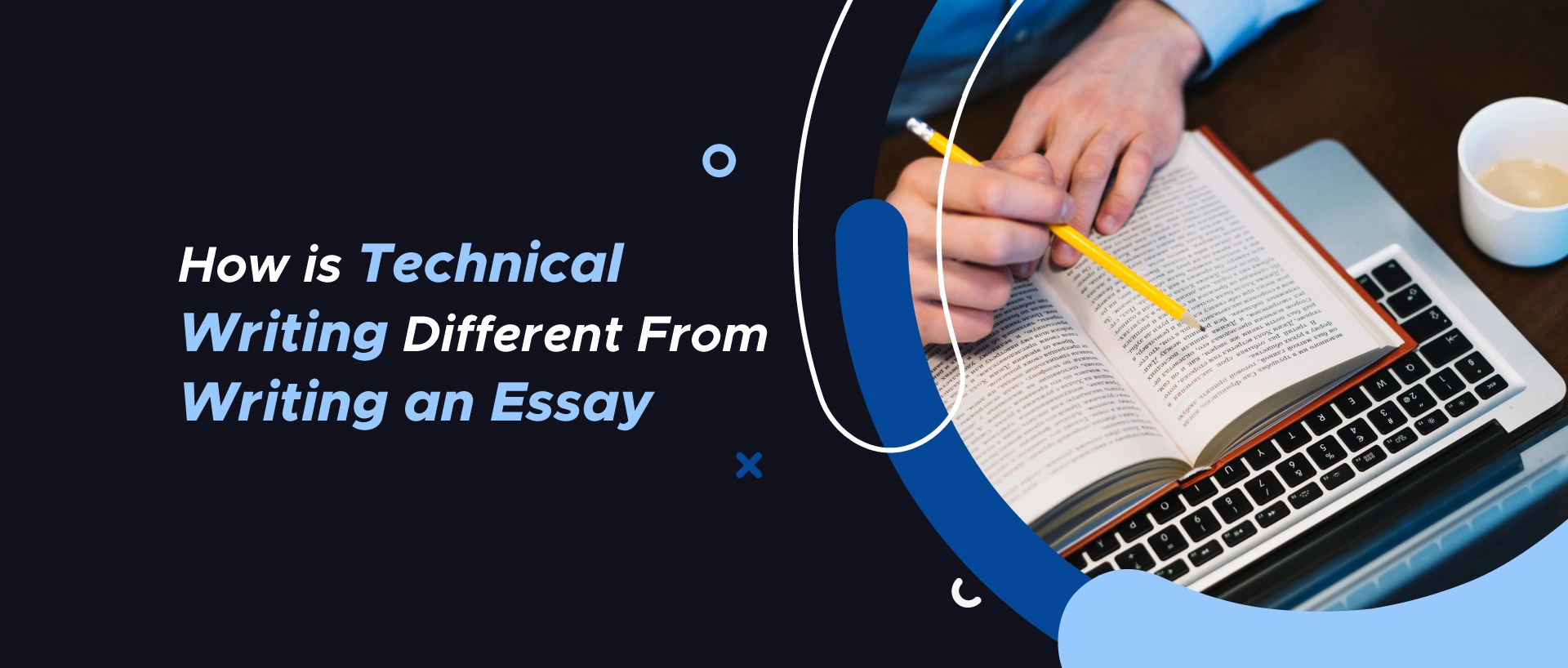
When we think of writing, we often connect it with articles, blogs or essays. But do you know there are many different styles and formats to consider while writing content? The two most popular writing types we are going to discuss here are technical writing and essay writing. Both of the styles involve the use of words and language to communicate ideas and information to a specific audience.
However, there are some key differences between the two styles that set them totally apart. Understanding these differences can help identify which approach is best suited for your particular needs. Through this article, we will explore how technical writing is different from writing an essay, their characteristics, as well as tips on how to excel in each style.
Technical writing and essay writing are two interesting styles of writing that have their unique characteristics and purposes for a diverse audience. So, whether you're a student working on an academic paper or a professional looking to communicate complex ideas, read on to discover the right way!
Technical writing focuses on providing clear and straightforward informative content to help readers understand complicated concepts. At the same time, essay writing aims to convince and engage readers with well-developed arguments and analysis. Understanding the difference between the two styles can help you figure out which approach is right for you.
For example , if you were writing a technical manual on how to assemble a computer, you would use technical writing to provide step-by-step instructions with clear diagrams and explanations. On the other hand, if you were writing an essay on the benefits of renewable energy, you would use essay writing to present compelling arguments supported by evidence and expert opinions.
Technical writing is highly objective and focuses on practicality and efficiency, aiming to convey information in a concise and precise manner. It is often used in fields such as engineering, technology, and science. Essay writing is more subjective and allows for the expression of personal opinions and interpretations. It is commonly employed in academic settings and aims to persuade and engage readers through effective rhetoric and logical reasoning.
Understanding the appropriate style for your purpose can greatly enhance the effectiveness of your writing and ensure that your intended message reaches and resonates with your target audience.
Four major variations of writing can be found in both technical and essay writing styles.
Formality and Tone
- Technical Writing: The language in this style is straightforward and specific. It resembles a set of instructions for assembling structured content, avoiding unnecessary details, and focusing on clarity.
- Essay Composition: Now consider it as a letter to a friend. It's informal, like a casual chat. The tone can be personal, expressing emotions and opinions freely. An essay weaves a narrative, allowing the writer's voice to shine through.
Use of Jargon
- Technical Writing: It often includes industry-specific terms and jargon. The goal is to communicate efficiently within a particular field, assuming a level of knowledge among the readers.
- Essay Composition: Essays generally avoid excessive jargon, opting for easy and accessible language. The emphasis is on connecting with a broader audience, making the content relatable and engaging.
Structural Framework
- Technical Writing: Technical documents follow a structured and logical format, just like maps. Whether it's a manual or a report, the information is organized systematically, allowing readers to navigate with ease.
- Essay Composition: Essays have a more flexible structure. While they may have an introduction, body, and conclusion, the content flows naturally, allowing for creativity and exploration of ideas.
Audience Considerations
- Technical Writing: Technical writing is tailored to a specific audience with a particular knowledge base. It assumes the readers have a certain level of expertise in the subject matter.
- Essay Composition: Essays adapt to various readerships, considering a broader spectrum of backgrounds and interests. The goal is to engage and resonate with a diverse group of readers.
Technical writing and essay writing both require solid skills in writing along with the ability to communicate information effectively. Let us understand some unexplored distinctions that can help writers tailor their approach and achieve their intended goals.
Intent of Communication
- Technical writing mainly serves a practical purpose. It aims to express information, focusing on delivering instructions or presenting facts. The focus here is on providing guidance or documentation for a specific task or process.
- Essay writing takes a more exploratory route. Essays are a platform for expressing ideas, opinions, and emotions. They invite readers to delve into the writer's thoughts, often without a predetermined practical outcome.
Emotional Engagement
- Technical writing is more objective and factual. The major goal is the transmission of information with minimal emotional engagement or personal biases.
- Essay writing encourages emotional connection. Essays often involve personal reflections, storytelling, or persuasive elements that light up emotions and relate with the reader on a more personal level.
Flexibility in Structure
- Technical writing follows a structured and standardized format. Whether it's a manual or a report, our technical writing services follow a predetermined framework to ensure clarity and consistency.
- Essay writing embraces a more flexible structure. It allows for creativity in the organization, enabling writers to experiment with different formats to suit the content and convey ideas effectively.
Language Complexity
- Technical writing prioritizes clarity over literary flair. The language used is straightforward, avoiding unnecessary complexity. The focus is on delivering information comprehensively to a specific audience.
- Essay writing celebrates the beauty of language. Essays often employ a more varied and expressive vocabulary, allowing writers to craft sentences that convey not only information but also evoke a particular atmosphere or emotion.
Objective & Subjective Evaluation
- Technical writing is subject to objective evaluation. Technical documents are assessed based on accuracy, clarity, and adherence to predefined standards. Success is measured by how effectively it fulfills its intended purpose.
- Essay writing involves subjective evaluation. The assessment of an essay includes factors such as creativity, originality, and the ability to engage the reader emotionally. Success is often measured by the impact on the reader's perspective.
Facing challenges is a natural part of life, and in various aspects, understanding the key challenges helps us find effective solutions. Here are some informative pointers illustrating key challenges to shed light on these hurdles:
Resource Limitations
Limited budgets and resources constrain growth and innovation. These limitations can hinder the ability to implement new ideas and strategies. In order to succeed in writing an impactful essay, it is important to incorporate factors such as creativity, originality, and the ability to engage the reader emotionally. However, one must also navigate technical communication hurdles and find a balance between creativity and coherence in the narrative.
Adapting to Change
Change is constant, but coping with it can be not easy. It requires individuals and organizations to be flexible and open-minded, willing to embrace new ideas and approaches. Adapting to change also involves overcoming resistance and fear of the unknown, as well as continuously learning and evolving to stay relevant in a rapidly changing world.
Market Competition
Staying competitive in a crowded market is a perpetual struggle. Companies must innovate and differentiate themselves to stand out from their competitors regularly. It involves understanding customer needs and preferences, conducting market research, and developing unique value propositions.
Regulatory Compliance
Following through complex regulations requires ongoing effort. Businesses must stay updated on changes in regulations, ensure their operations comply, and allocate resources to implement necessary changes. It may involve hiring legal experts or consultants to navigate the complexities of regulatory requirements and mitigate potential risks.
Talent Acquisition and Retention
Attracting and retaining skilled employees is a continuous battle. Businesses must develop effective recruitment strategies, offer competing remuneration packages, and develop a positive work environment to attract top talent. Additionally, implementing employee retention programs and providing opportunities for growth and development can help retain skilled employees and reduce turnover rates.
Technical writing and essays are distinct but equally valuable. In this guide, we have understood how technical writing is different from writing an essay. While technical writing ensures precision in conveying information, essays bring a personal touch, enriching the world of words with creativity.
As technical writing excels at delivering information with precision, essays unfold as a canvas for personal expression and exploration of ideas. Recognizing these differences empowers writers to choose the most suitable form based on their communication objectives and the nature of the content.
- content development
- technical writing

ABOUT THE AUTHOR
Mary has extensive experience of over 5 years in writing on a wide range of topics, including healthcare, technology, science, and business. She is highly knowledgeable and skilled in researching and crafting accurate, well-structured, and engaging content. Mary is a reliable and professional writer who is always willing to go the extra mile to ensure her clients are satisfied with her work. She is committed to delivering quality content on time and within budget.
- Previous Advantages of Online Training for Employees
- Next Brush Strokes and Bold Fonts: Understanding the Difference between Type and Lettering
You Might Like
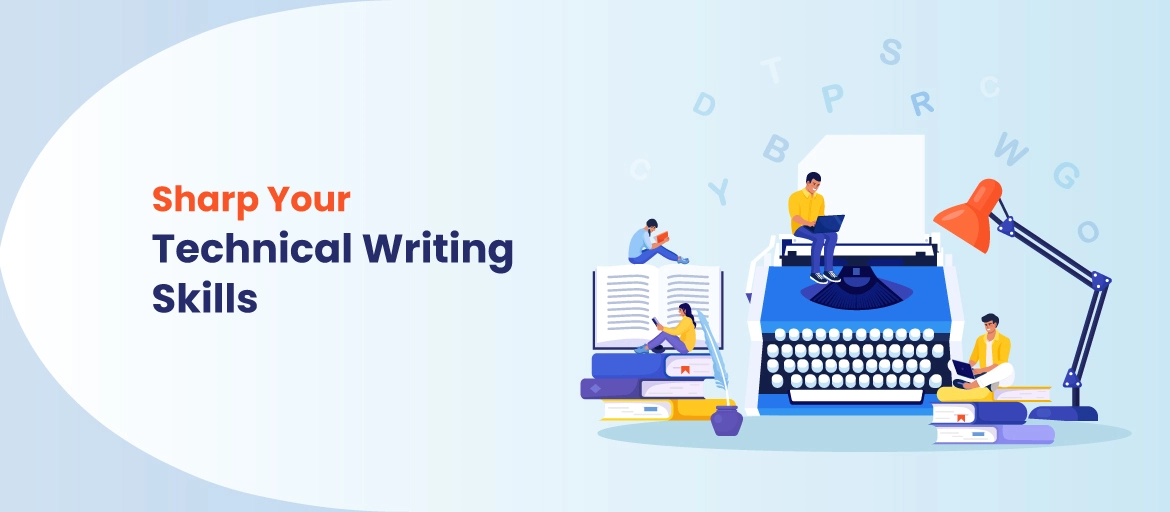
How to Sharpen Your Technical Writing Skills for Clear Communication?
Mastering technical writing entails honing distinct skills tailored to its unique demands.
- Read in 08 mins
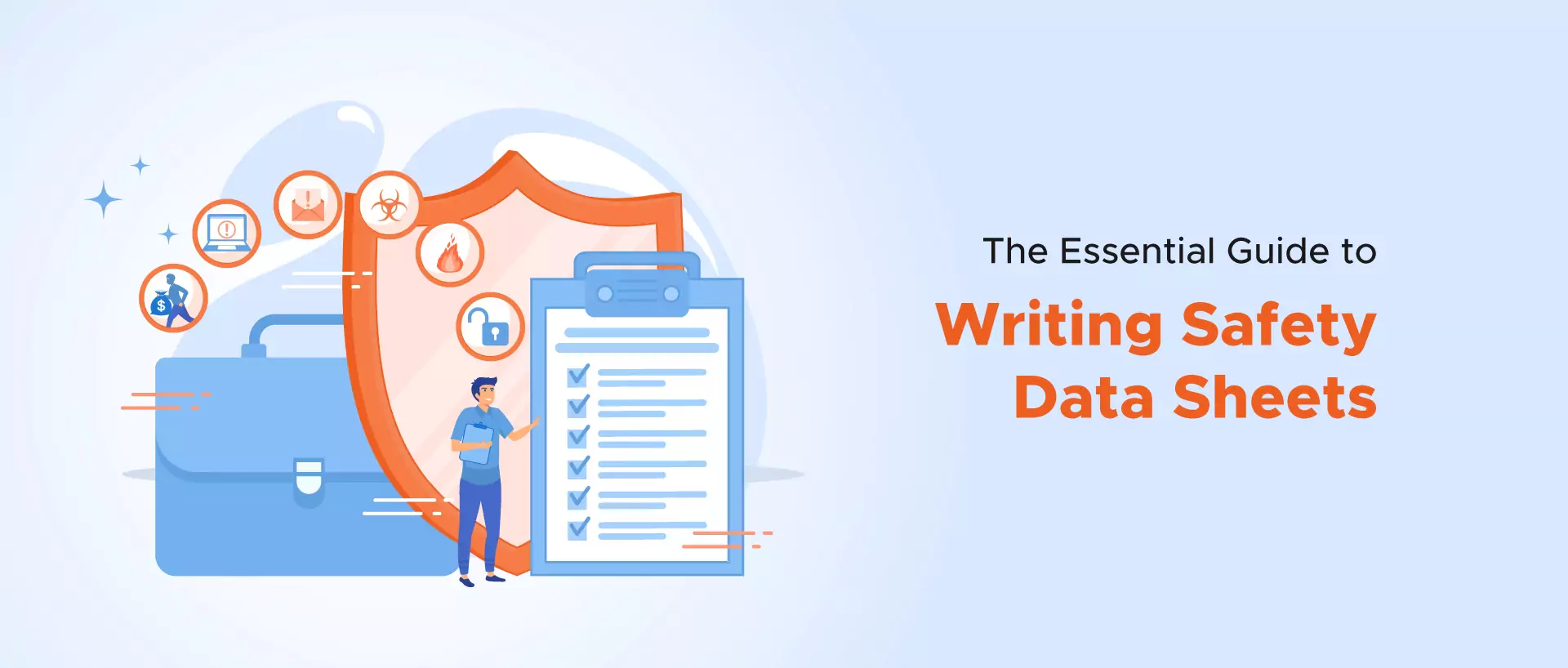
The Essential Guide to Writing Safety Data Sheets
Creating Safety Data Sheets (SDS) can help with this by providing details on the hazardous chemical products that may be encountered in the workplace.
- Read in 09 mins
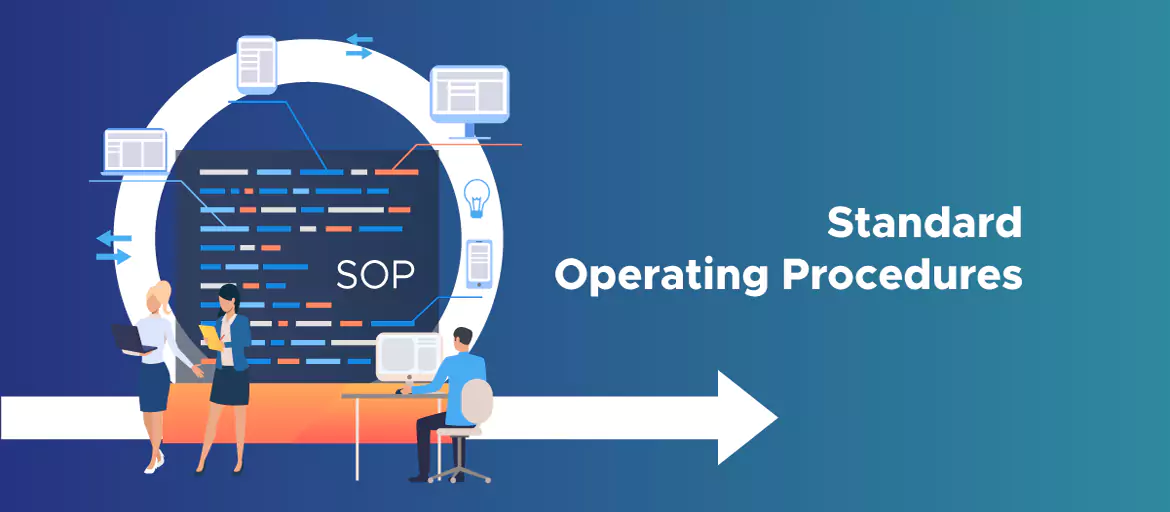
How to Create Standard Operating Procedures (SOP) for Your Businesses ?
By implementing SOPs, businesses can streamline their operations and improve overall productivity.
Subscribe to our newsletter
Join our newsletter.
Stay in tune with Acadecrafts latest news and updates.
Clients Testimonials
Acadecraft has been an invaluable partner in our journey towards excellence in certification. Their commitment to delivering exceptional service, coupled with their unwavering dedication to timeliness and quality, has truly set them apart.
From the outset, their team has demonstrated a keen understanding of our needs, consistently delivering reports with meticulous attention to detail. Their responsiveness is commendable; whenever we've reached out with queries or requests, they've always been prompt and accommodating, ensuring a smooth and seamless experience.
One of the standout aspects of Acadecraft's service is their ability to deliver reports in a timely manner without compromising on quality. This has been instrumental in our decision-making processes, allowing us to make informed choices based on accurate and insightful data.
Acadecraft has consistently exceeded our expectations with their exemplary service, timely responsiveness, and unwavering commitment to quality.
- Shradha Shetty
- Certification Manager, SISA
Acadecraft's Voice-Over service was amazing! The team provided accurate and culturally relevant recordings for what we expected. They showed true professionalism and expertise. We highly recommend Acadecraft for their excellent Voiceover services.
- Manav Malhotra
- Sr. Manager – Operations
Always impressed with Acadecraft's expertise! Their translation services play a vital role for our company to drive international growth within our team and clients.
- Alex Capizola
- Business Operations Executive
AcadeCraft's assessment content creation team was able to understand our unique requirements and created customized assessments that fit our needs. The team was prompt and professional, and the quality of their work was good.
Acadecraft have recorded several audiobooks for us. They have a wide range of talented artists with different accents who really bring our stories to life. Their work is of high quality, with good attention to detail.
Acadecraft are reliable, efficient and friendly. Their services are highly recommended by us.
- Mazlini Kirsty Louise
- Editorial Head
As a producer, I've had the pleasure of using Acadecraft for sourcing VO and liaising with artists for several film projects. They offer a wide range of VO profiles and the artists I have collaborated with all were talented and professional. The team at Acadecraft have supported me with great professionalism, responsiveness and creativity. I highly recommend their services.
- Katia Hérault
- Head of Production
Acadecraft has been helpful with connecting our editorial team with subject matter experts (SMEs) who help us QA assessments and create solutions for computational assessments. They have been able to find SMEs to meet our needs and our deadlines. We are happy to continue to partner with Acadecraft.
- Managing Editor
Acadecraft team is always very supportive, and we and Acadecraft corroborate to create educational contents for K12 Students in India.
We appreciate Acadecraft teams' professionality, punctuality, creation skills in each subject.
- Mikiko Matsuoka
- Content Manager
I am thrilled to share my testimonial for Acadecraft which creates interactive and engaging content. Working with this team has been an absolute pleasure from start to finish. Not only did they create outstanding content for our project, but they also went above and beyond to ensure that it was interactive, engaging, and effective.
Throughout the entire process, the team was highly cooperative and communicative, always available to resolve any issues or concerns that arose. They truly made us feel like partners in the project, and their dedication to delivering high-quality content was evident in every interaction.
Thanks to their exceptional work, our project was a huge success, and we couldn't be happier with the results. I highly recommend them to anyone looking for a team that is passionate, professional, and committed to excellence. Wishing them all the best in their future endeavors.
- Hemika Kumar
- Ed-Tech Program Lead
The team at Acadecraft has truly been an end-to-end service provider for us, providing content development services and their commitment, attention to detail and expertise have made the project a success. Their team's dedication, attention to detail, and expertise have been unmatched, making our partnership an absolute pleasure. We highly recommend Acadecraft to anyone looking for a reliable and efficient education solutions provider.
- Yogesh Malhotra
- Senior Manager Team - Program Management
Our experience working with Acadecraft has been great. Their highly knowledgeable team of experts was always available to answer our questions, provide guidance, and ensure we were delighted with the services. Their thorough, accurate assessments provided valuable insights that helped us make informed decisions about our exam performances.
We look forward to continuing our partnership with Acadecraft and leveraging their expertise to help us achieve our business goals.
- Sohail Ahmed
- Senior Manager
I recently used Acadecraft's Video Editing services and I am extremely impressed with the quality of their work. The team at Acadecraft was highly professional, attentive and skilled in delivering my company’s project on time and within budget.
Their attention to detail was impeccable, and they understood my needs and requirements very well. They were able to create a video that not only met my expectations, but far exceeded them.
Throughout the process, they kept me informed and updated on the progress of the project, and were always available to answer any questions I had. Their customer service was excellent, and they were always friendly and easy to work with.
I highly recommend Acadecraft's Video Editing services to anyone who is looking for a high-quality and professional video editing experience. They are truly experts in their field and I look forward to working with them again in the future.
- Senior Executive
The video creation team of Acadecraft is insightful. They understood my requirements carefully and delivered a winning video that perfectly aligned with my business needs.
With a good script, content, sound, and editing – Acadecraft helped me with the best video content to strategize my marketing and promotional campaigns. Their tremendous experience in video editing and professionalism in serving the customer before and after delivering services are commendable.
The passionate team knows great about getting into the details and providing impeccable video services. I am extremely impressed by the work Acadecraft has delivered to me.
I appreciate my collaboration with Acadecraft and look forward to availing of services again.
- Ganesh Sonawane
- Founder & CEO
I required an explainer video for my business, and I am mesmerized by the work Acadecraft’s video editing team delivered to me. The perfectly aligned video elements and superb editing demonstrate the experience, knowledge, and professionalism Acadecraft has.
Acadecraft’s 3d video solutions are amazing. They used a perfect blend of art, color, shape, sound, and editing to create the video, making the video engaging and immersive.
I have always been excited to explore the opportunities of videos in business, and it was my pleasure to make Acadecraft my companion for the best video solutions. I highly recommend this organization and would love to collaborate with them again.
With a holistic approach to creating powerful blended videos, Acadecraft delivered me a well-developed video solution. I appreciate the relentless efforts of the video editing team, whose in-depth knowledge and analytical skills effectively catered to my needs.
The services Acadecraft has given me exceeded my expectations; the team was effective and listened to my requirements carefully, and went the extra mile in researching and creatively developing awesome pieces of video content.
Not only from a quality perspective but on the management and delivery front, Acadecraft’s services are prolific. They stuck to the turnaround time and were constantly in touch with me throughout the creation process.
I recommend Acadecraft for video solutions as they have great hands-on use of animation, graphics, and other creative assets.
- Shweta Patidar
I am thoroughly astounded by Acadecraft's proficient skills! Their exceptional voiceover and translation services were instrumental in amplifying our marketing endeavors and video promotions. They enabled us to communicate effectively with varied audiences and significantly propelled growth across numerous media platforms.
- Sparsh Verma
- Marketing Strategist
Working along with Acadecraft has been an exceptional journey. Their meticulous attention to detail and commitment to maintaining the essence of the content in the transition from English to Arabic was truly impressive. The collaborative spirit and timely communication made the entire process smooth and enjoyable. Without a doubt, I wholeheartedly endorse their services for a remarkable translation experience.
- Yashashwini V Rathod
- Account Director
Grab a FREE Accessibility Audit Today!

Expand your website reach.


Online Students
For All Online Programs
International Students
On Campus, need or have Visa
Campus Students
For All Campus Programs
What Does a Technical Writer Do?

Know before you read At SNHU, we want to make sure you have the information you need to make decisions about your education and your future—no matter where you choose to go to school. That's why our informational articles may reference careers for which we do not offer academic programs, along with salary data for those careers. Cited projections do not guarantee actual salary or job growth.
Many companies have technical writers, but you may not think too much about them. Yet, when you're using a product manual, reading a how-to or following step-by-step instructions, a technical writer made that possible. These writers are responsible for creating clear content to help people understand information in a user-friendly way.
From the user manual that comes with your car to the directions on the back of a child’s new toy, tech writers are behind a lot of the writing that makes both everyday and complicated tasks a little easier.

“In a nutshell, a technical writer takes complex information and transforms it into consumable content based on the user’s needs,” said Tami Love , a communication instructor at Southern New Hampshire University (SNHU). "Very few products or services can be consumed without some information and/or instruction. The documentation is just as important as the product or service that it documents."
In addition to teaching at SNHU, Love is a senior technical writer with hands-on industry experience. She is also in her third year serving on the admin councilor for the Society of Technical Communication's Carolinas chapter, where she has been a member for over 15 years.
“My unconventional journey into technical writing started when I was an engineer and was presented with an opportunity for a job change ,” Love said. “I (became a tech writer) partly because I was located in the same city as the engineering team, which would facilitate better collaboration between them and a writer."
Tech writers can often be found in industries like technology, healthcare and manufacturing, where communication is crucial. For example, at a company that makes software, a technical writer might create the user guides that explain how to use it. Or in the manufacturing industry, a technical writer might write safety procedures or maintenance instructions for a piece of machinery.
What Are the Roles of a Technical Writer?
A technical writer wears many hats, and sometimes those responsibilities fall under job titles like technical communicator, information developer or documentation specialist.

To Amanda Groves , associate dean of liberal arts at SNHU, one of the key roles of a technical writer is to be a translator. "Oftentimes, product and process developers are highly skilled in production, but they need a detail-oriented communicator to help another audience understand the value of what they’re producing," Groves said. "Technical writers are essentially the translators that help different audiences understand any given topic."
While Groves has never had the words "technical writer" in her job title, her roles have always included technical writing in some way. As a tutor, instructor and now dean, Groves points to documents she has written like Standard Operating Procedures (SOPs), business cases, training materials, FAQs and academic catalogues that fall under a technical writing umbrella.
All of these documents strive to communicate complicated material in an easier way. But technical writing isn’t just about the writing. In fact, Love said that writing is only about 10% of the job.
In Love's experience, a technical writer has a range of responsibilities, including:
- Education: A technical writer must have a strong understanding of the subject matter they are writing about.
- Research: Before writing, a technical writer must conduct thorough research to ensure what they write is accurate.
- Planning: Technical writers must carefully plan the structure and content of their documents to ensure they meet the needs of their audience.
- Writing: And of course, a technical writer writes. A good tech writer turns technical information into accessible content that anyone can understand.
Is Technical Writing Hard?
If you're interested in technical writing, you may have questions about how “technical” it really is. While it is important to understand your industry’s jargon and nuances, much of this can be learned on the job.
According to Love, entry-level or junior writers are not expected to know processes, tools or content right away, and many technical writers will be mentored by senior writers who give them simple tasks while they learn technical knowledge for that specific industry. “As writers get process and technical experience,” Love said, “they become more comfortable with taking on more responsibility and initiative (at their own pace).”
Technical writers also often work closely with subject matter experts (SMEs) and other team members to gather information and feedback for their documents – so you don’t need to know everything. Sometimes, you just need to know how to find the right information or ask the right questions.
As much as being a technical writer is about knowing your stuff, it’s also about being able to adapt and learn quickly. “It’s incredible how much you can learn about all sorts of topics, products or processes when you’re tasked with explaining how they function,” said Groves.
Are Technical Writers in High Demand?
Technical writers are needed in many industries, and it is expected that they will be needed even more every year. In fact, between 2022 and 2032, the U.S. Bureau of Labor Statistics (BLS) projects a 7% increase in technical writer jobs.*
“Technical writers are needed not only in IT, but in the government, pharma/healthcare, finance and education sectors,” said Love. In these industries, especially, information can be complicated, and good info or instructions can greatly impact someone's life or health.
For example, in the healthcare industry, a doctor might send a patient home with a monitor for an at-home sleep test. That patient needs to have clear instructions to make sure they use the medical device correctly and get accurate readings — if they don't, their health could be at risk.
“When you’re seeking out technical writing opportunities,” Groves said, “remember to look for areas where a good communicator might be needed.”
What Qualifications Do You Need to Be a Technical Writer?
There are a couple of different paths you can take if you want to become a technical writer, but according to the BLS, the typical entry-level education requirement is a bachelor's degree .
According to Groves and the BLS , some majors you might consider if you want to go into technical writing include:
- Bachelor's in communication
- Bachelor's in English
- Bachelor's in journalism (journalism degrees are not currently available at SNHU)
You might also consider pursuing a degree in a field related to the industry you want to write for, such as an engineering degree or a computer science degree . “At SNHU, we offer COM 343: Technical Writing Communication, which teaches several types of technical writing for different audiences. This would be a great place to start for someone new to the field," said Groves.
Groves also suggests looking for opportunities in your current workplace. "If you consider what falls into the category of ‘technical writing,’ you might be surprised at what needs already exist in your current role," she said.
For example, your team might benefit from a process guide, or a new tool might be easier to use if you had a manual written. If you see that there are ways that writing could help the people around you more easily understand a topic, then your workplace might need someone with technical writing skills.
Find Your Program
Is tech writing for me.
Every day, good tech writing makes the world easier to navigate and understand. It can be a rewarding field that allows people to engage with accessible technical, medical and financial information – just to a name a few. With the right preparation and skills, you can make a difference for people just like you.
“If you’re analytical and inquisitive by nature, and you also enjoy explaining concepts, you might be surprised at how enjoyable technical writing can be,” said Groves. Taking tech writing course or looking for an internship can be a great first step to help you learn and build your confidence.
“Don’t be intimidated by the details or the idea of explaining complex ideas,” said Groves. “Just remember that you can break down the items into as small increments as you need. In many cases, a product or process that can help others is just waiting for someone like you to make it accessible.”
A degree can change your life. Find the SNHU liberal arts program that can best help you meet your goals.
*Cited job growth projections may not reflect local and/or short-term economic or job conditions and do not guarantee actual job growth. Actual salaries and/or earning potential may be the result of a combination of factors including, but not limited to: years of experience, industry of employment, geographic location and worker skill.
Meg Palmer ’18 is a writer and scholar by trade who loves reading, riding her bike and singing in a barbershop quartet. She earned her bachelor’s degree in English, language and literature at Southern New Hampshire University (SNHU) and her master’s degree in writing, rhetoric and discourse at DePaul University (’20). While attending SNHU, she served as the editor-in-chief of the campus student newspaper, The Penmen Press, where she deepened her passion for writing. Meg is an adjunct professor at Johnson and Wales University, where she teaches first year writing, honors composition, and public speaking. Connect with her on LinkedIn .
Explore more content like this article

Is a Liberal Arts Degree Worth It?

What is a Liberal Arts Degree And What Can You Do With It?

How to Overcome Your Fear of Public Speaking
About southern new hampshire university.

SNHU is a nonprofit, accredited university with a mission to make high-quality education more accessible and affordable for everyone.
Founded in 1932, and online since 1995, we’ve helped countless students reach their goals with flexible, career-focused programs . Our 300-acre campus in Manchester, NH is home to over 3,000 students, and we serve over 135,000 students online. Visit our about SNHU page to learn more about our mission, accreditations, leadership team, national recognitions and awards.
- myPNW Login
- Brightspace Login
- PNW Calendar
- Scholarships
- Tuition and Fees
Three Technical Papers Published in Iron & Steel Technology
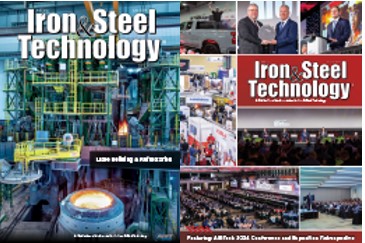
CIVS staff, CIVS graduate research assistants, along with industry collaborators were highlighted in the July and August issues of Iron & Steel Technology. 3 technical papers were published in categories of Ladle Refining & Refractories, Safety & Environment, and Decarbonization Technologies (and Energy & Utilities and Environmental).
July 202 4 Vol. 21, No. 7
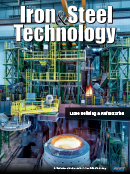
“A CFD Study of Alloy Dissolution and Homogenization in Ladle Metallurgy Furnace”
The addition of microalloying elements in steel production is essential to improve steel properties, as they have a strengthening effect even in small amounts. The dissolution process of copper in the ladle metallurgy furnace was studied using parametric tests on the number of plugs and argon gas flowrates for stirring. To understand the particle movement in the molten bath, numerical simulations were performed using a three-dimensional computational fluid dynamics method. The results show that the mixing time is affected by the number of plugs and the gas flowrate, with the shortest mixing time achieved with a single-plug ladle with a flowrate of 0.85 m3/minute and a dual-plug ladle with a total flowrate of 1.13 m3/minute, both taking 5.6 minutes.
- Ogochukwu Q. Duruiheme, CIVS Graduate Research Assistant
- Xipeng Guo, CIVS Graduate Research Assistant
- Nicholas Walla, CIVS Senior Research Engineer
- John Lowry, Nucor Steel
- Chenn Zhou, CIVS Director
August 2024 Vol. 21, No.8
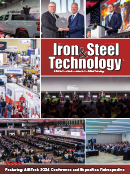
“Hazard Recognition Scenario Builder for On-Site Customizable Virtual Training”
Hazards are ever-present in the steel plant environment, and a heightened awareness and emphasis on safety is a necessary priority for our industry. This monthly column, coordinated by members of the AIST Safety & Health Technology Committee, focuses on procedures and practices to promote a safe working environment for everyone.
- Sai Laya Mallineni, CIVS Graduate Research Assistant
- Kyle Toth, CIVS Senior Research Engineer
- John (Jack) Moreland, CIVS Senior Research Scientist
- Xibin Zhou, CIVS Graduate Research Assistant
- Michael Schwentor, U.S. Steel
- Garrett Page, Steel Dynamics, Inc.
“Decarbonization and Increased Productivity in the Reheating Furnace Using Hydrogen Fuel”
In the last decade, decarbonization of the steel industry has motivated comprehensive investigation on the use of hydrogen fuel in steelmaking. However, the increased heat output of hydrogen-fueled burners also creates opportunities for furnace throughput improvements. The primary factors that affect steel quality and productivity are the uniform distribution of heat, followed by slab residence time in the reheating furnace. Using computational fluid dynamics to model hydrogen utilization and comparing the results to traditional natural gas combustion, opportunities for increased furnace throughput were found due to the higher relative heat output of hydrogen as a fuel. One approach covered in this study is the use of regenerative burners in a reheating furnace using hydrogen as fuel. Apart from the decarbonization achieved while using hydrogen as fuel, the additional effect of using regenerative burners in such a furnace is studied with respect to thermal efficiency and productivity increase.
- Anurag Karambelkar, CIVS Graduate Research Assistant
- Chukwunedum Uzor, CIVS Graduate Research Assistant
- Armin Silaen, CIVS Associate Research Professor
- Lawrence Fabina, Cleveland-Cliffs
- Kurt Johnson, Cleveland-Cliffs
Iron & Steel Technology is the premier technical journal for metallurgical, engineering, operating and maintenance personnel in the iron and steel industry. For more information, visit AIST.org .
Semiconductor PFAS Consortium
About technical papers faqs glossary of terms join us.
The Semiconductor PFAS Consortium is an international group of semiconductor industry stakeholders organized under the auspices of the Semiconductor Industry Association (SIA) to collect the technical data needed to formulate an industry approach to per- and poly-fluoroalkyl substances (PFAS) based on science. The scope includes:
- Gathering and vetting of technical PFAS-use information relevant to the semiconductor industry
- Developing socioeconomic impact analyses
- Providing tools needed to support industry commitments to track and reduce PFAS
- Identifying research needs and drafting plans to address them appropriately
- Developing technical reports, presentations, and position papers
The Consortium is not focused on advocacy.
The consortium membership is comprised of semiconductor manufacturers and members of the supply chain including chemical, material, and equipment suppliers. For more information, contact the PFAS Consortium at [email protected] .
Click the button below to access a peer reviewed journal article on the essential use of PFAS in the semiconductor photolithography process:
The essential use of fluorochemicals in lithographic patterning and semiconductor processing >
Technical Papers
These publications were developed by the Semiconductor PFAS Consortium technical working groups to document the role of PFAS in semiconductor manufacturing. This includes topic such as PFAS uses, functionality, the availability of alternatives, and the mapping of release pathways. The contents do not necessarily reflect the uses, views or stated policies of individual consortium members. The consortium prepared these papers to serve as the basis for a science-based industry approach to PFAS.
Click the image below to download your copy.
PFAS in Semiconductor Manufacturing Series
The Semiconductor PFAS Consortium released a series of technical papers summarizing semiconductor industry uses of perfluoroalkyl and polyfluoroalkyl substances (PFAS), and the significant technical challenges to implementing alternatives if PFAS uses were restricted. Download all 10 papers by clicking the link below, or an individual paper by clicking its respective image.
download all 10 PFAS technical white papers>
Socioeconomic Papers
The Semiconductor PFAS Consortium commissioned the development of the papers below in order to provide insight into the socioeconomic consequences of a PFAS restriction in semiconductor manufacturing.
download both papers>
PFAS Release Mapping Series
The Semiconductor PFAS Consortium released a series of technical papers identifying the principal PFAS environmental release pathways in semiconductor manufacturing and provide a generalized template for the development of specific semiconductor PFAS release quantification models. Download all 7 papers by clicking the link below, or an individual paper by clicking its respective image.
download all 7 PFAS release mapping papers>
Consortium Project and One-off Papers
The Semiconductor PFAS Consortium annually funds a group of one-year long projects proposed and voted on by its members. The deliverables from completed projects are presented below.
Join the Semiconductor PFAS Consortium
This Website is owned and sponsored by the Semiconductor Industry Association (SIA). Copyright © 2023 the Semiconductor Industry Association (SIA). All rights reserved.
1101 K Street NW Suite 450, Washington, DC 20005 E-mail
- Sign up for SIA News
- Privacy Policy

Contact one of our global offices or simply fill out the form below and we will respond within 24 hours


IMAGES
VIDEO
COMMENTS
Here are some examples of who might read technical writing: · A renter of an apartment that needs details on their lease. · An electrical engineer who needs to know how the wiring is laid out in the apartment block. · The janitor of that same building who needs to know the location of the emergency lights. · The occupant of apartment 61 ...
A technical essay typically presents a question, details the methods explored to answer the question, and then presents a conclusion. Like with academic research papers, start off with a compelling title that describes the question you seek to answer or the methods you're going to describe, then begin with a section titled "Abstract" that ...
Examples of this type of technical writing include step-by-step process guides, internal wikis, KPI and goal reporting, OKRs, and HR policies. 4. Technical Marketing Communications. Most technical marketing communications fall under the B2B (business to business) writing umbrella.
Technical writing: the clear, concise, & unambiguous presentation and analysis of scientific or engineering results. Distinct from literary, journalistic, or personal communication styles and contents. Differences in their respective purposes and intended audiences. In technical writing, every statement should be based on evidence and not on ...
The different types of technical writing have unique characteristics that you can easily learn and master effectively. 1. User Manuals. User manuals or instruction manuals come with various products, such as consumer electronics like televisions, consoles, cellphones, kitchen appliances, and more.
Technical writing is the art of providing detail-oriented instruction to help users understand a specific skill or product. And a technical writer is someone who writes these instructions, otherwise known as technical documentation or tutorials. This could include user manuals, online support articles, or internal docs for coders/API developers ...
A technical writer might create content to provide instructions or explain technical concepts regarding environmental regulations, computer applications or medical procedures. Some of the most common industries that rely on technical writing include: Engineering. Computer software and hardware. Robotics. Chemistry.
Technical communication is distinct from the academic forms of writing you may be more familiar with. The academic writer's purpose may be to write an essay, a story, a research paper, etc. Such assignments are often designed so that students can "write to learn" and show mastery of information covered in class.
Many papers have a submitted (and later published) conference version, along with a "full paper" technical report on the web. It's important to manage versions carefully, both in content and proliferation. My recommendation is, whenever possible, for the full paper to consist of simply the conference version plus appendices.
Technical writing explains complex ideas in general terms. Technical writers are responsible for conveying complex, specialized information to a general audience. Tips for successful technical writing include: ensure excellent grammar and punctuation, employ a clear and logical writing style, make sure you have a genuine understanding of the ...
When writing a technical essay, you should start with an eye-catching title describing the issue you are looking at or the method. You should follow with an abstract section in which you describe in detail the topic of study, the research process, and your conclusion. All paragraphs should be brief, consisting of just a few sentences.
Download 30 KB. #33. Even if technical writing skills take high-levels details, you should still explain these concisely and clearly to your audience. As a technical writer, you should come up with documents that are very clear, simple, and succinct. Sometimes, though, the results could just be the opposite.
The current chapter focuses on essays, pieces of persuasive writing developed around defined topics. This genre's persuasiveness rests in large part on its logical structure, inclusion of quality evidentiary support, and consistent design, as explained herein; hence, essay writing calls for planning, researching, synthesizing, and revising.
Technical writing is different from other forms of writing. While other forms of writing may aim to entertain, inspire, or express opinions to readers, technical writing focuses on instructing. ... White papers . White papers are reports that explore a specific topic or problem in depth. They are used to educate readers, present research ...
What is a technical essay? Technical essays are an attempt to combine hard facts and an argument. Most essays are short academic pieces that allow students to share their opinions on a specific issue. However, technical writing is a formal form of writing which is easy to write. How is technical writing different from writing an essay ...
Structure of a technical essay. Start with a heading that describes the question you want to answer or the methods you are about to describe. Then write an abstract section detailing your question or method, your research process, and your conclusion, all in a short paragraph of several sentences.
Technical writing examples can take away the stress of being assigned to create one of your own. With our examples, be successful on your next assignment.
Technical writing is highly objective and focuses on practicality and efficiency, aiming to convey information in a concise and precise manner. It is often used in fields such as engineering, technology, and science. Essay writing is more subjective and allows for the expression of personal opinions and interpretations.
Research: Before writing, a technical writer must conduct thorough research to ensure what they write is accurate. Planning: Technical writers must carefully plan the structure and content of their documents to ensure they meet the needs of their audience. Writing: And of course, a technical writer writes. A good tech writer turns technical ...
CIVS staff, CIVS graduate research assistants, along with industry collaborators were highlighted in the July and August issues of Iron & Steel Technology. 3 technical papers were published in categories of Ladle Refining & Refractories, Safety & Environment, and Decarbonization Technologies (and Energy & Utilities and Environmental).
Investors who use technical crowd roped in funding through the media. In the film industry, where can investors who were roped to use public financing technique through social media. In the film industry, where producers can impose creative compromises, this method of production of the film allows filmmakers degree of freedom not in the habit ...
SID Symposium Digest of Technical Papers is an information display journal publishing short papers and poster session content from SID's annual symposium, Display Week. An optical type touch-input flat panel is designed. The driving system is based on the passive pixel sensor (PPS) array with amorphous silicon (a-Si) TFT technology.
About Technical Papers FAQs Glossary of Terms Join Us. The Semiconductor PFAS Consortium is an international group of semiconductor industry stakeholders organized under the auspices of the Semiconductor Industry Association (SIA) to collect the technical data needed to formulate an industry approach to per- and poly-fluoroalkyl substances (PFAS) based on science.
Alberto Carrillo Pineda, Chief Technical Officer, SBTi said: "The outputs released today are a critical step in understanding how the SBTi can develop a more sophisticated approach to scope 3 to help more businesses set targets. The SBTi believes that direct decarbonization must remain the priority for corporate climate action and looks ...
Explore Siemon's comprehensive resources including technical guides, white papers, case studies, and more. Stay informed with the latest industry insights and solutions.